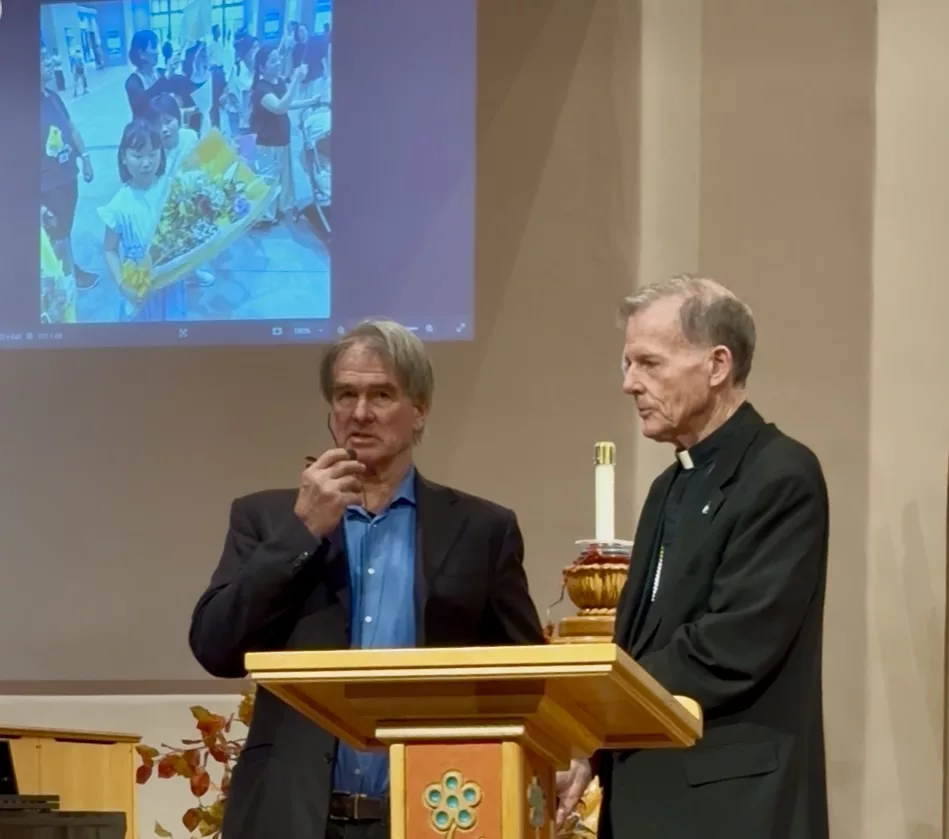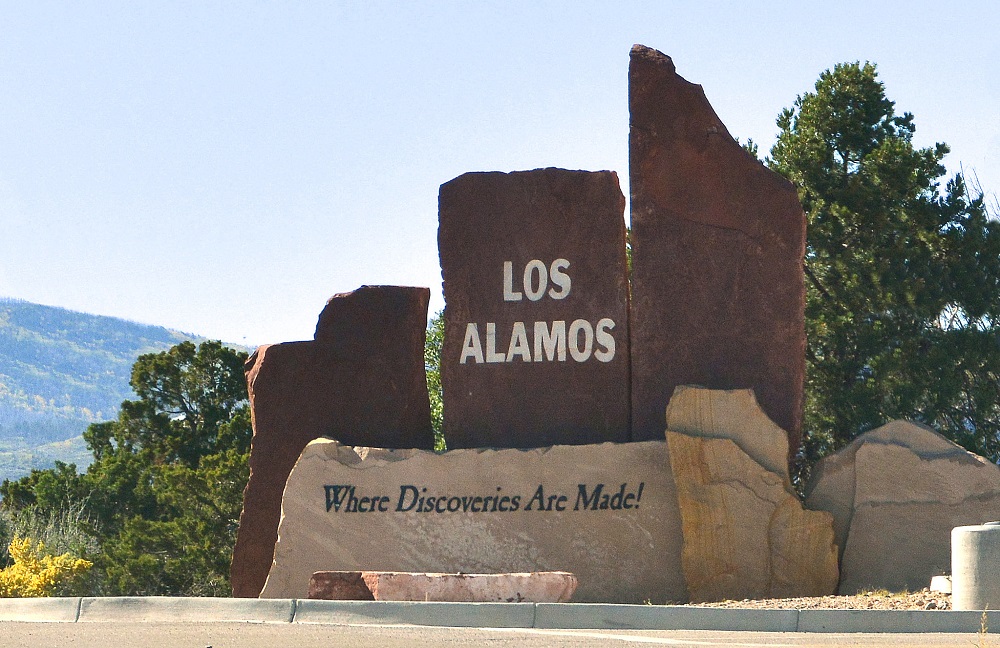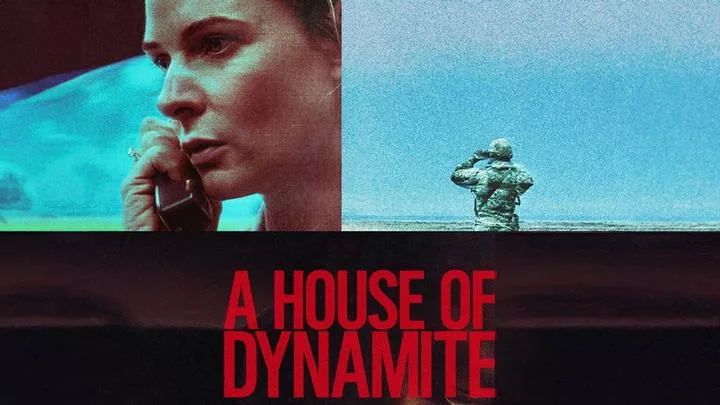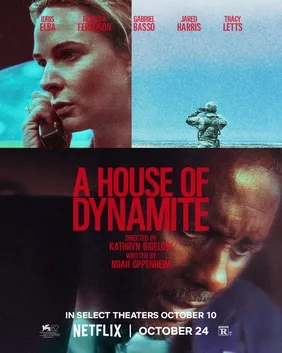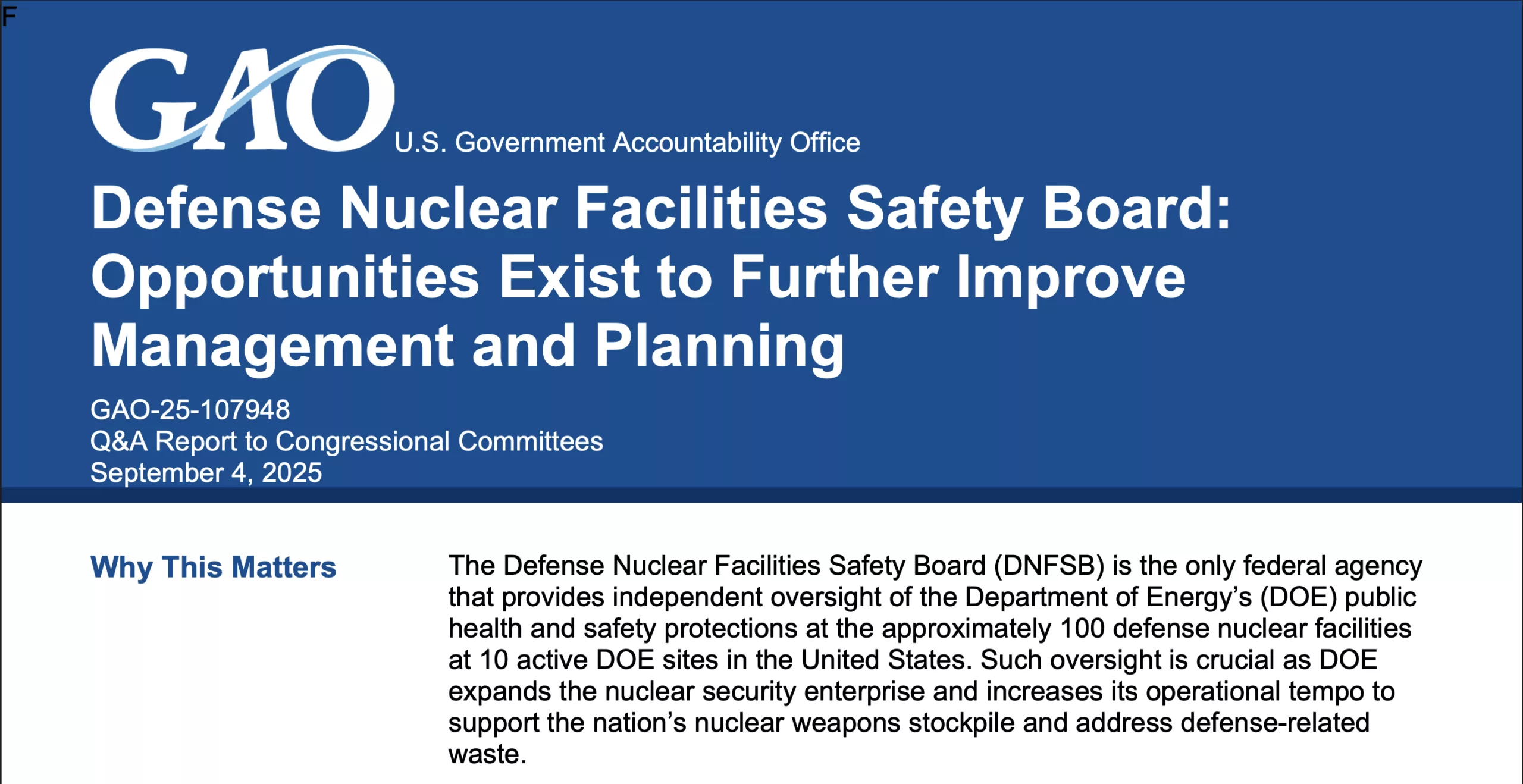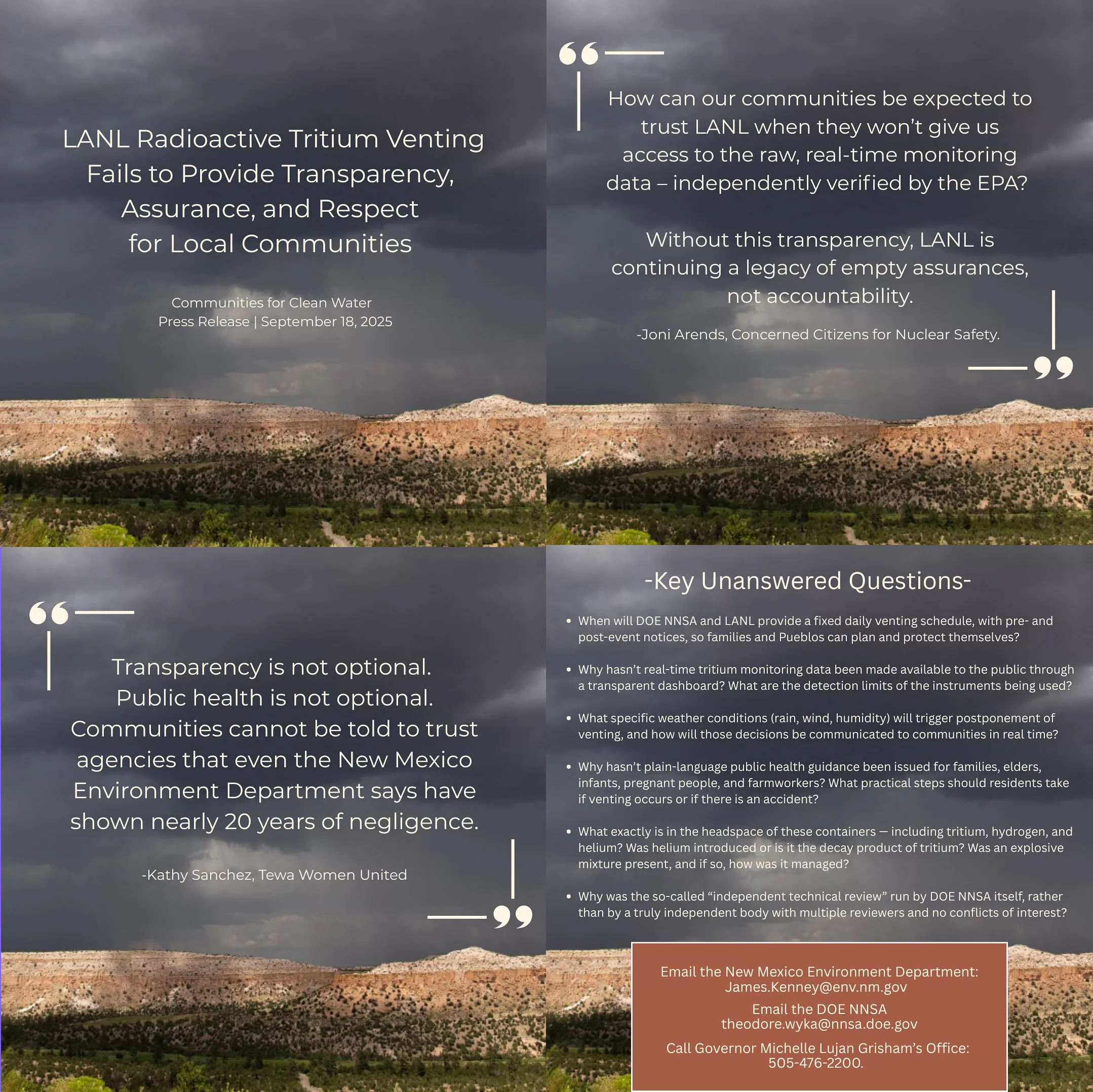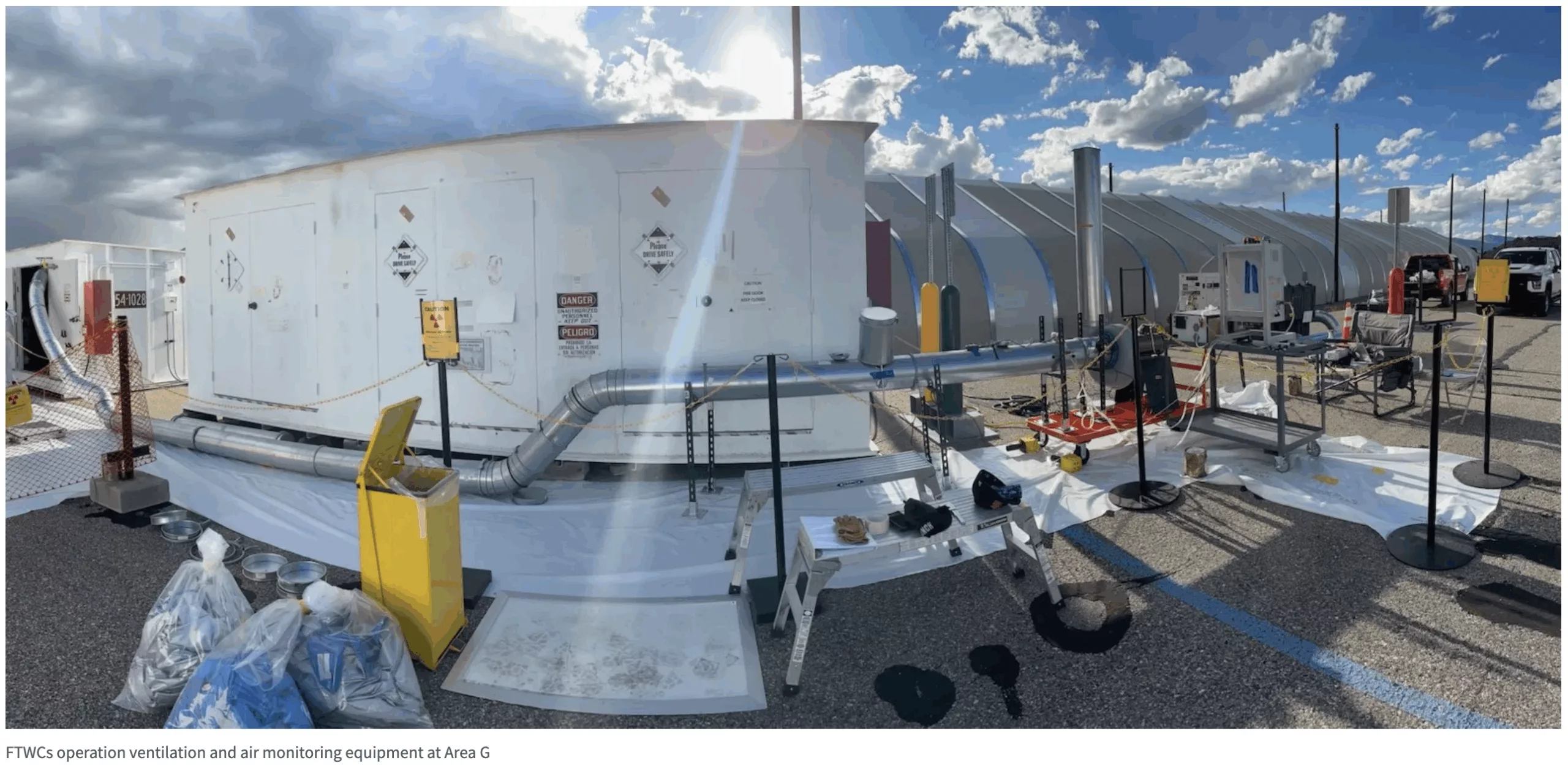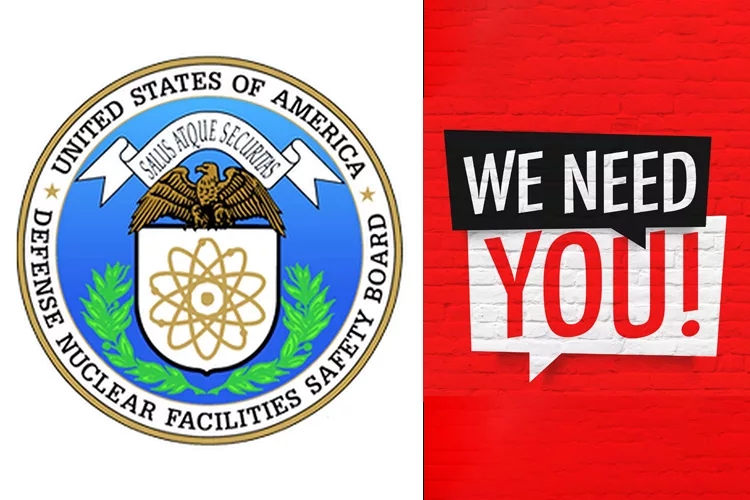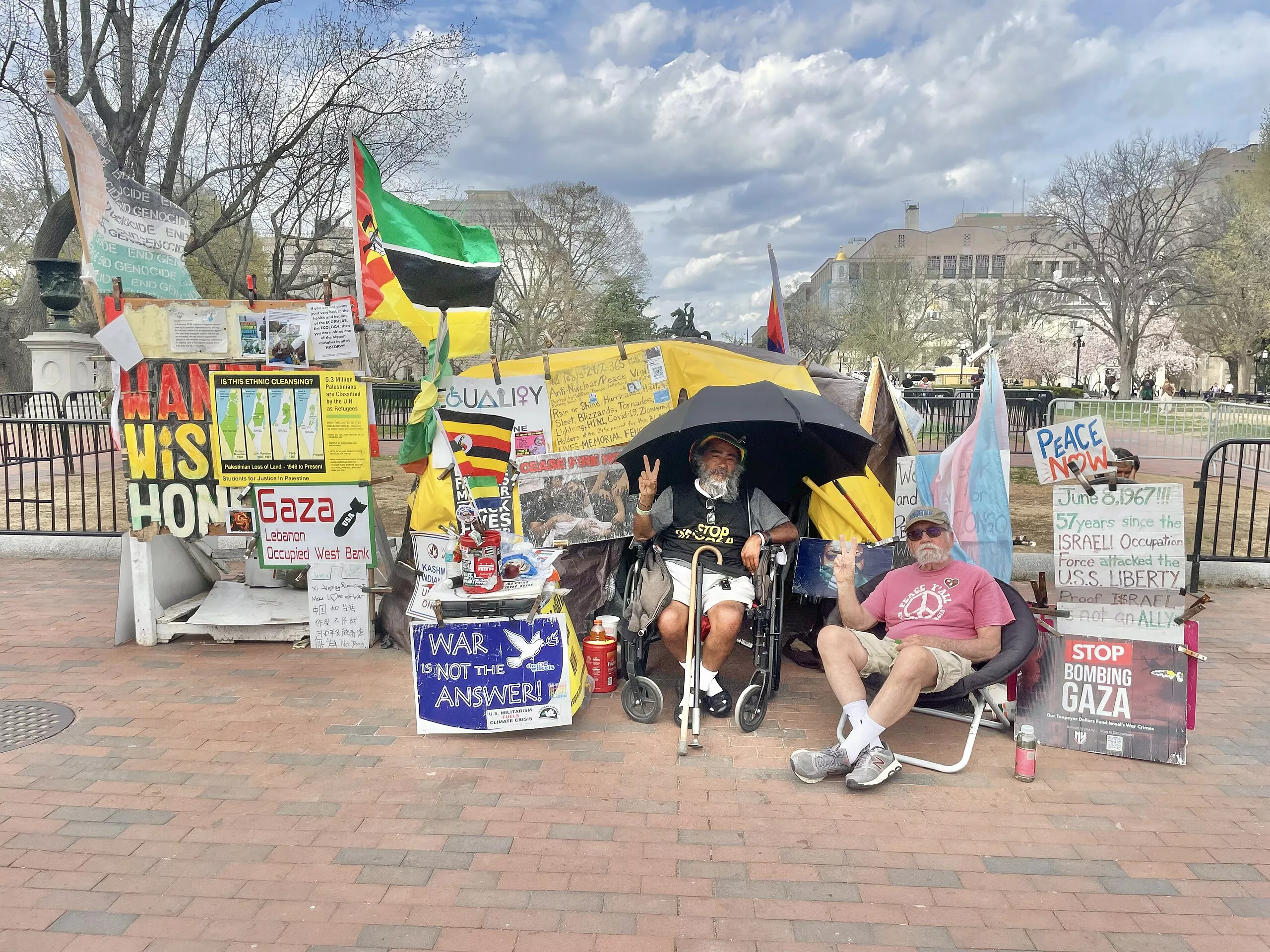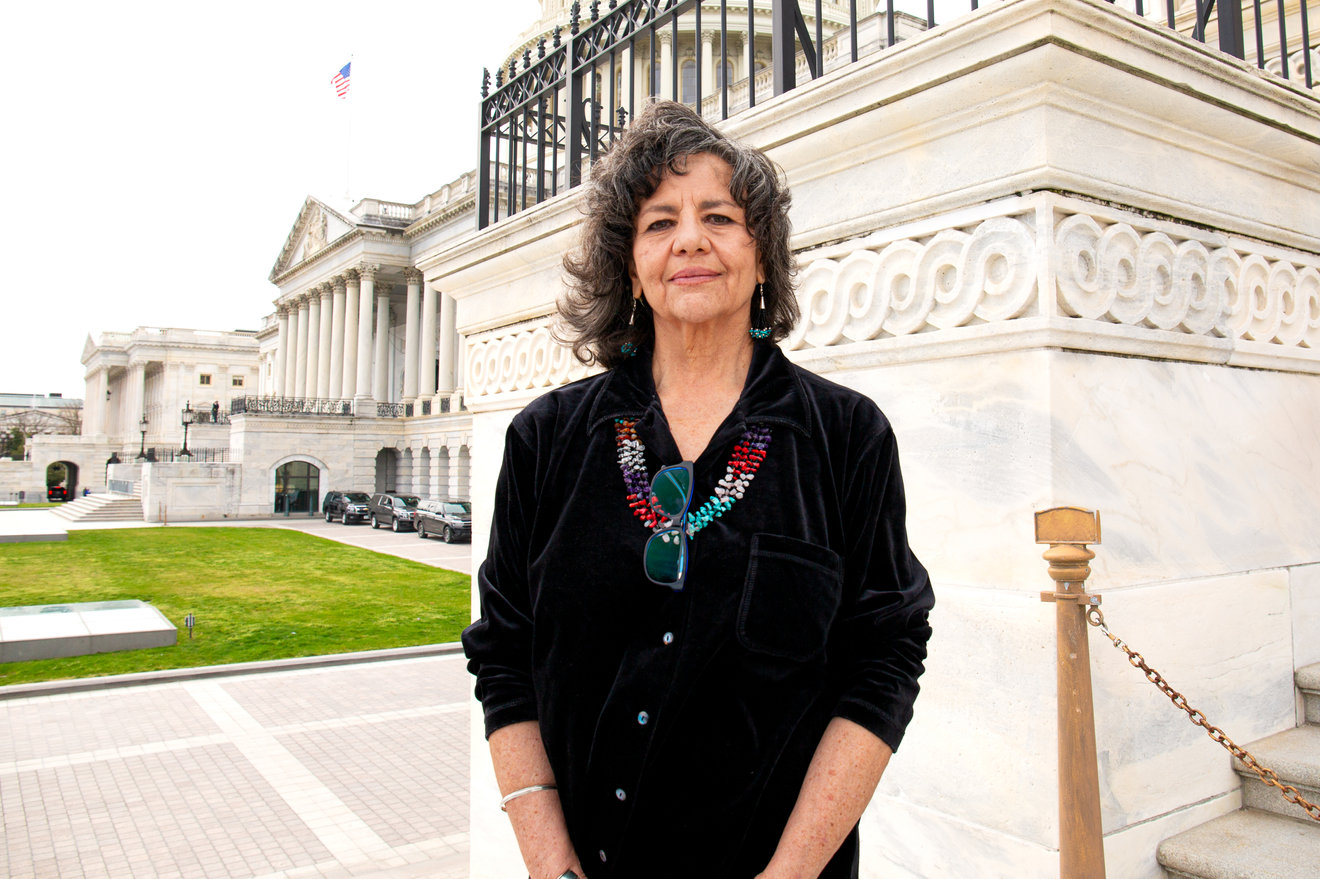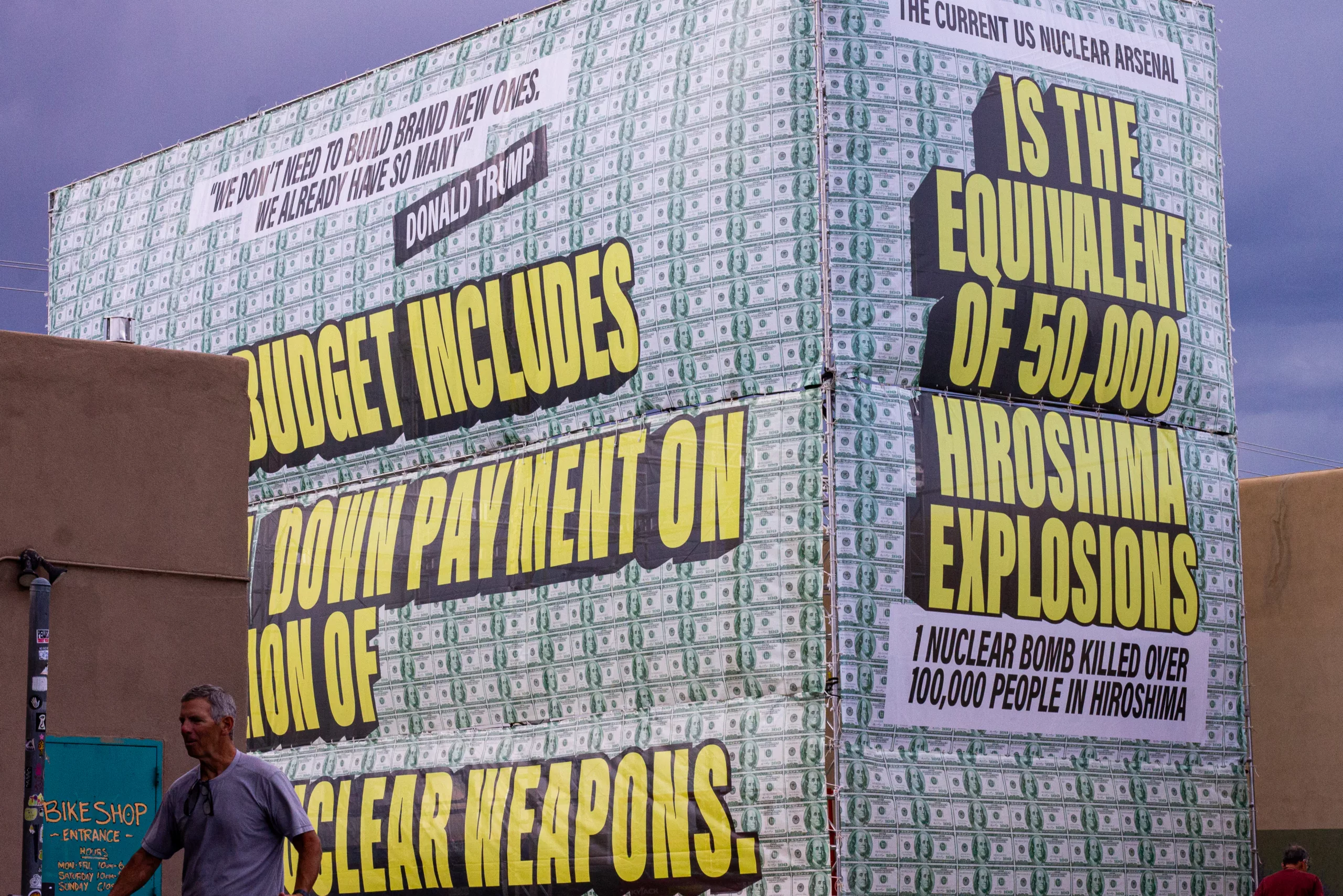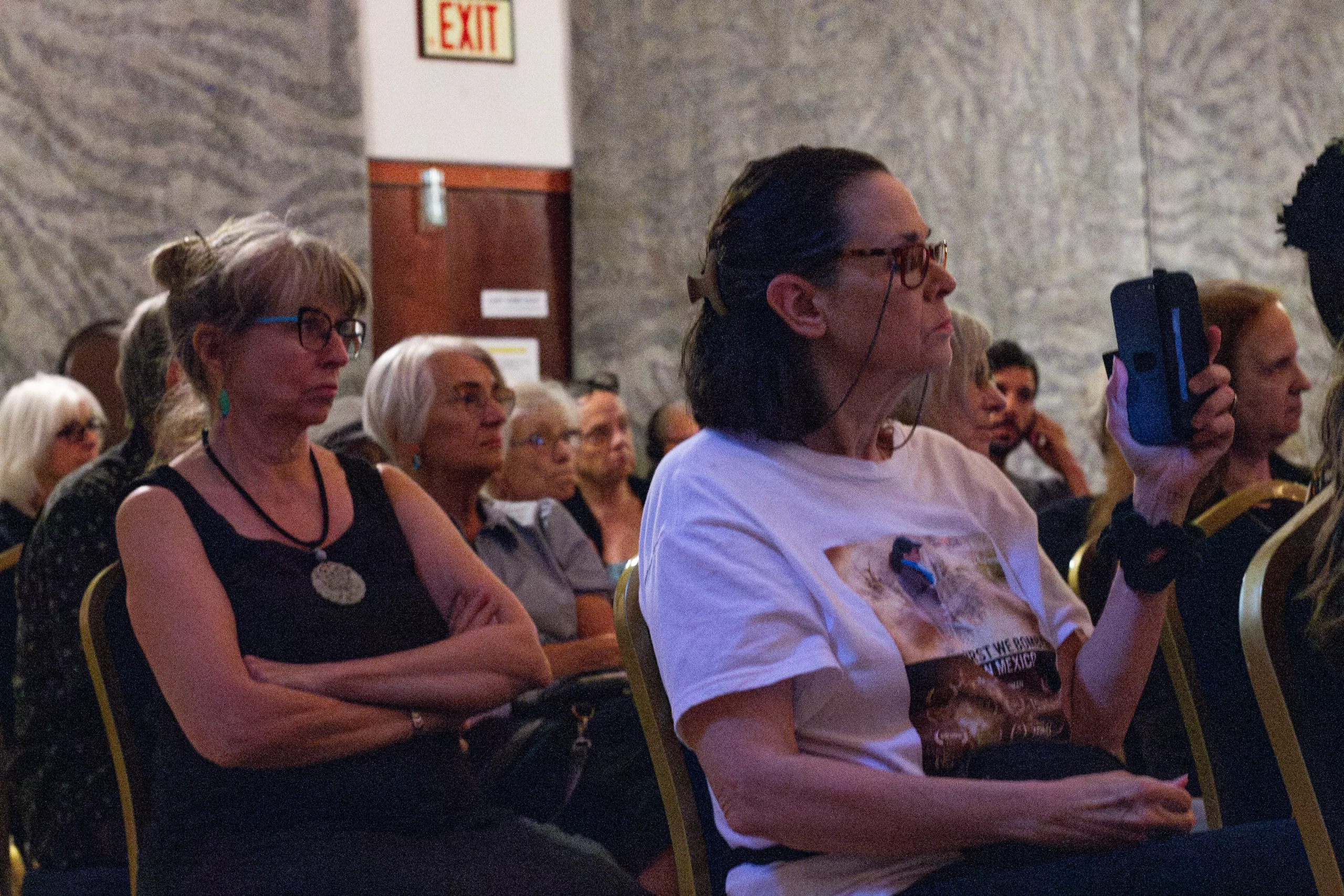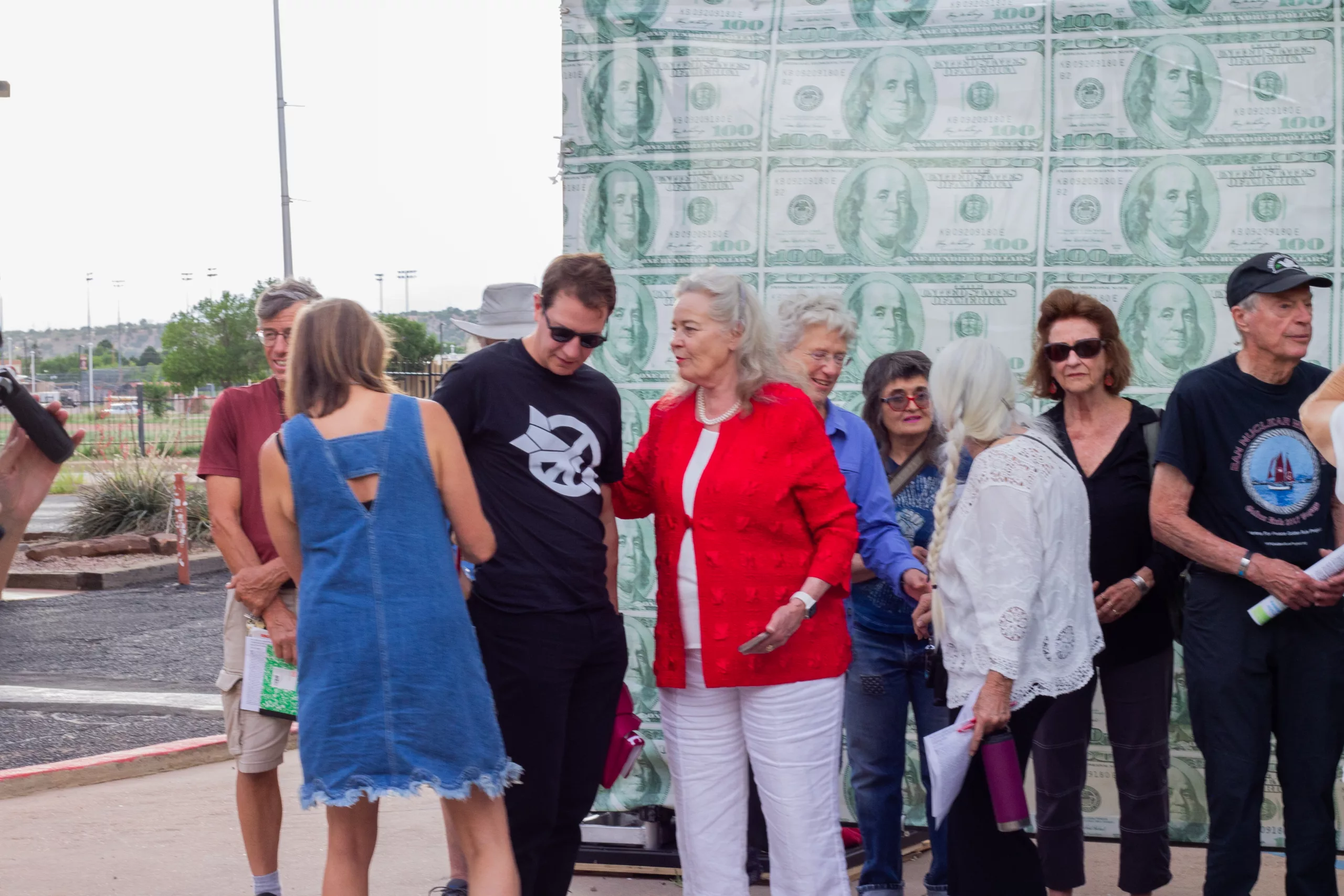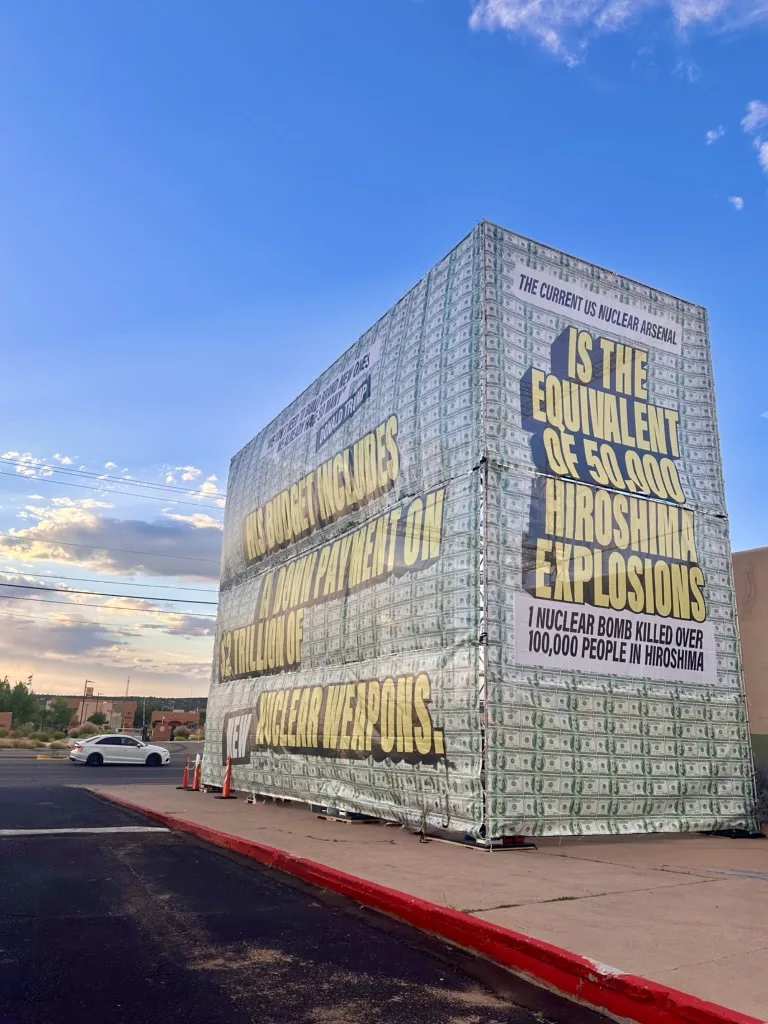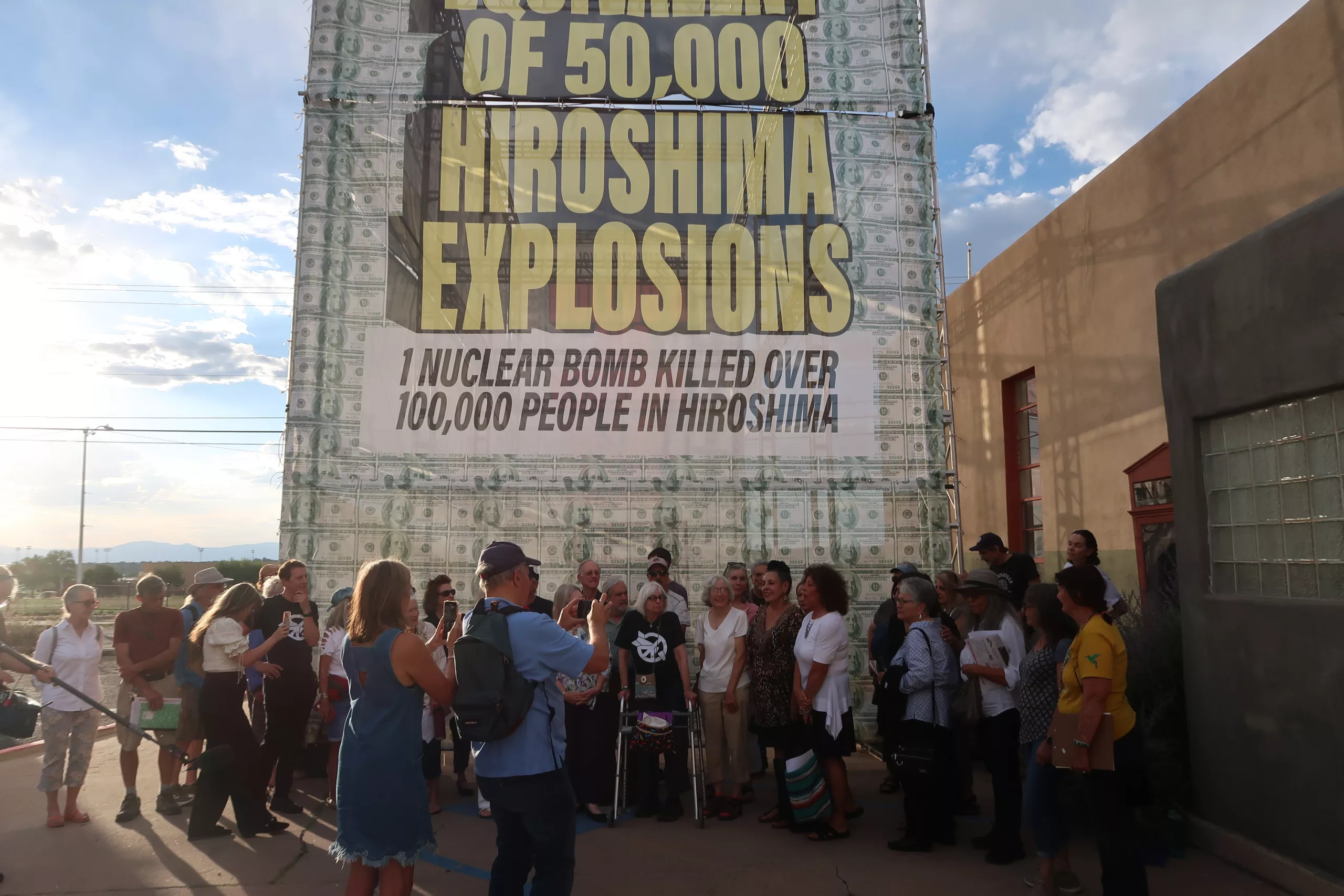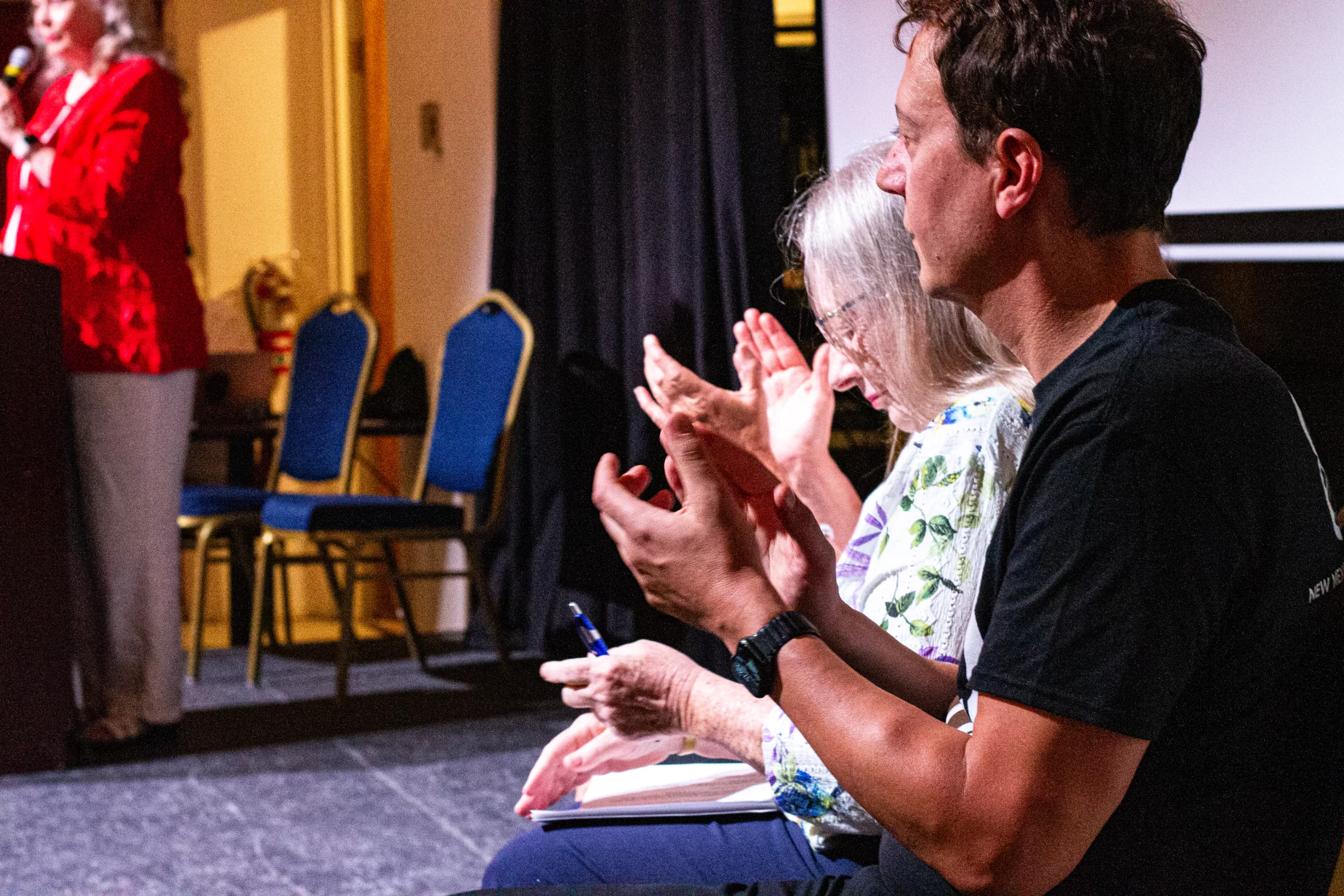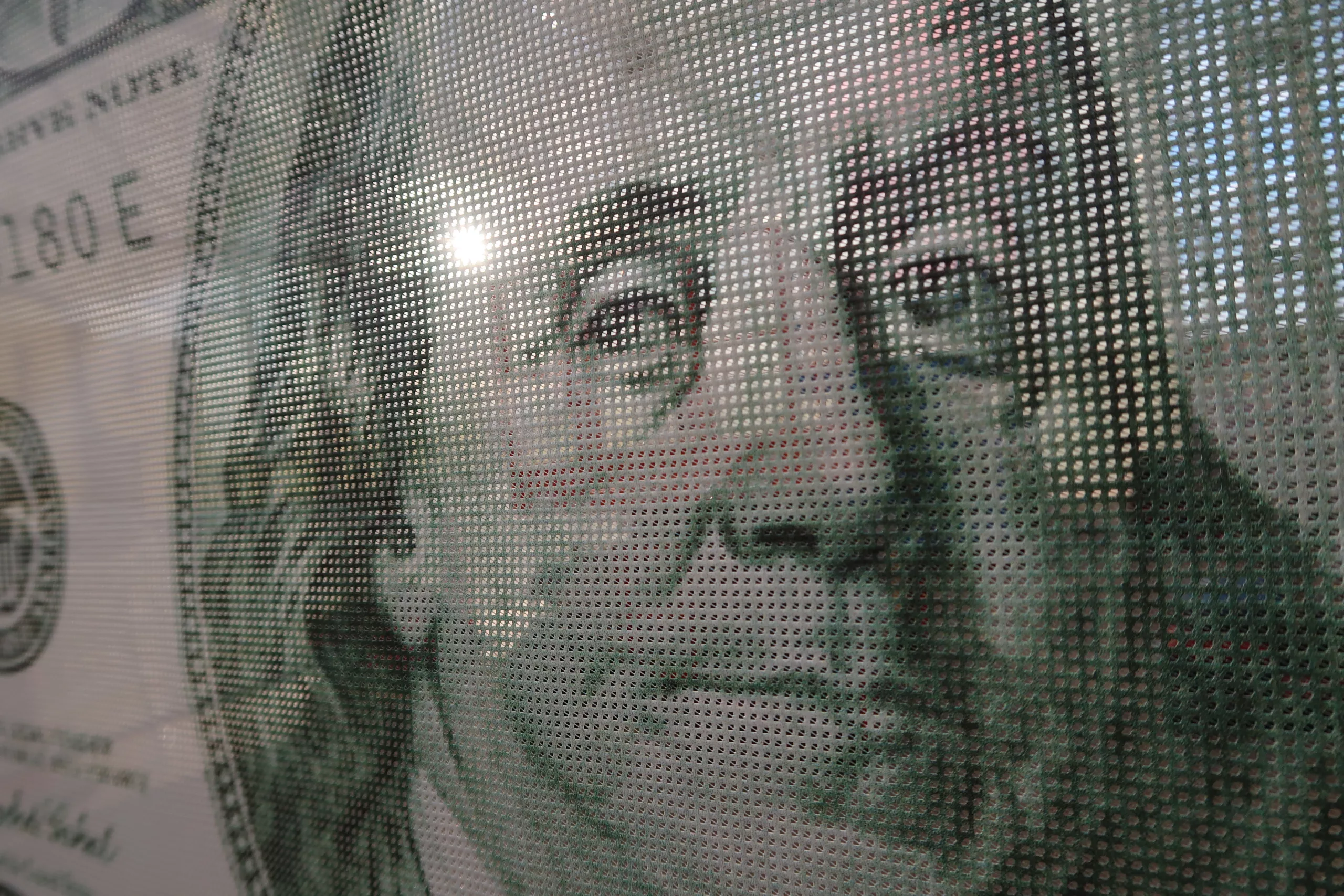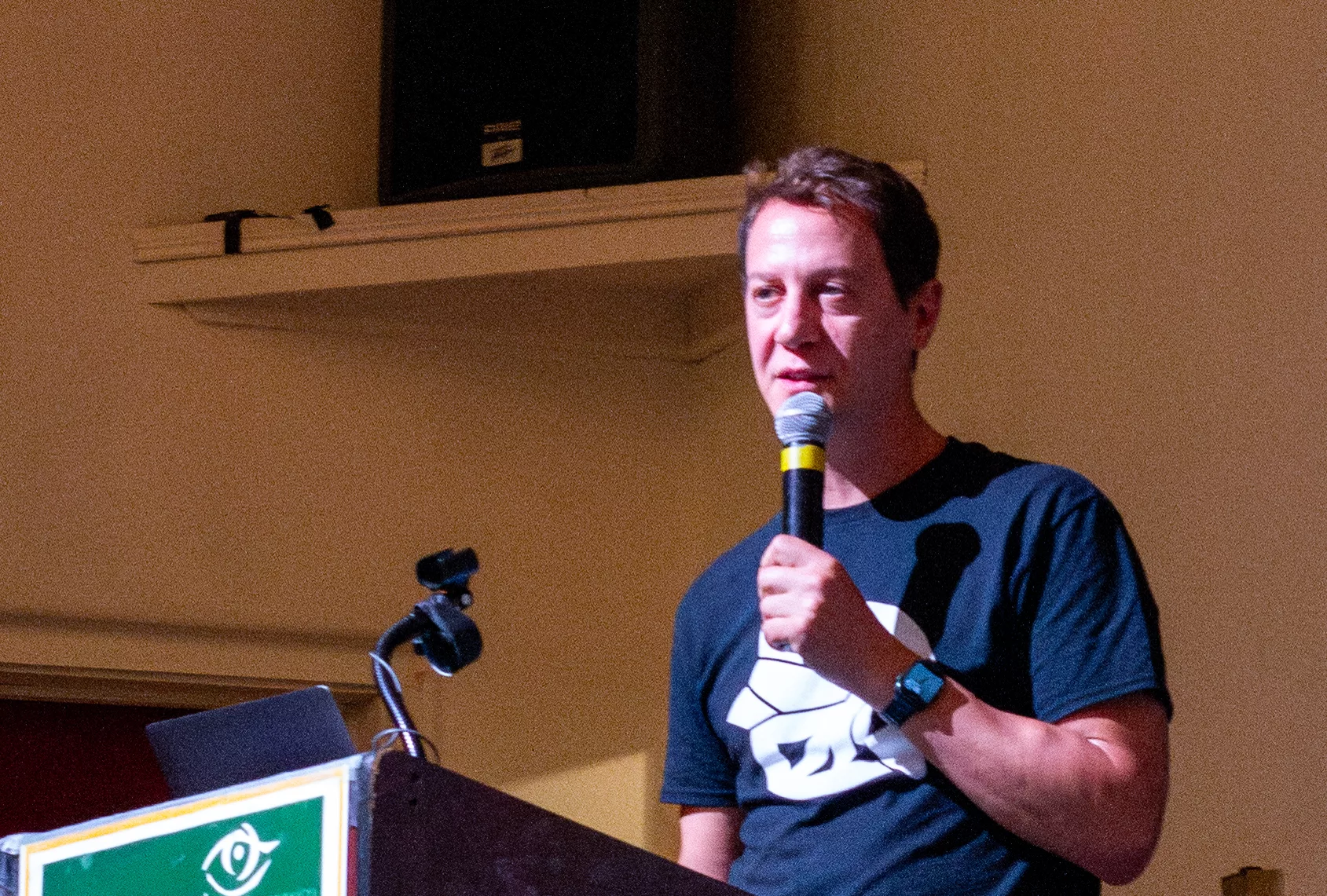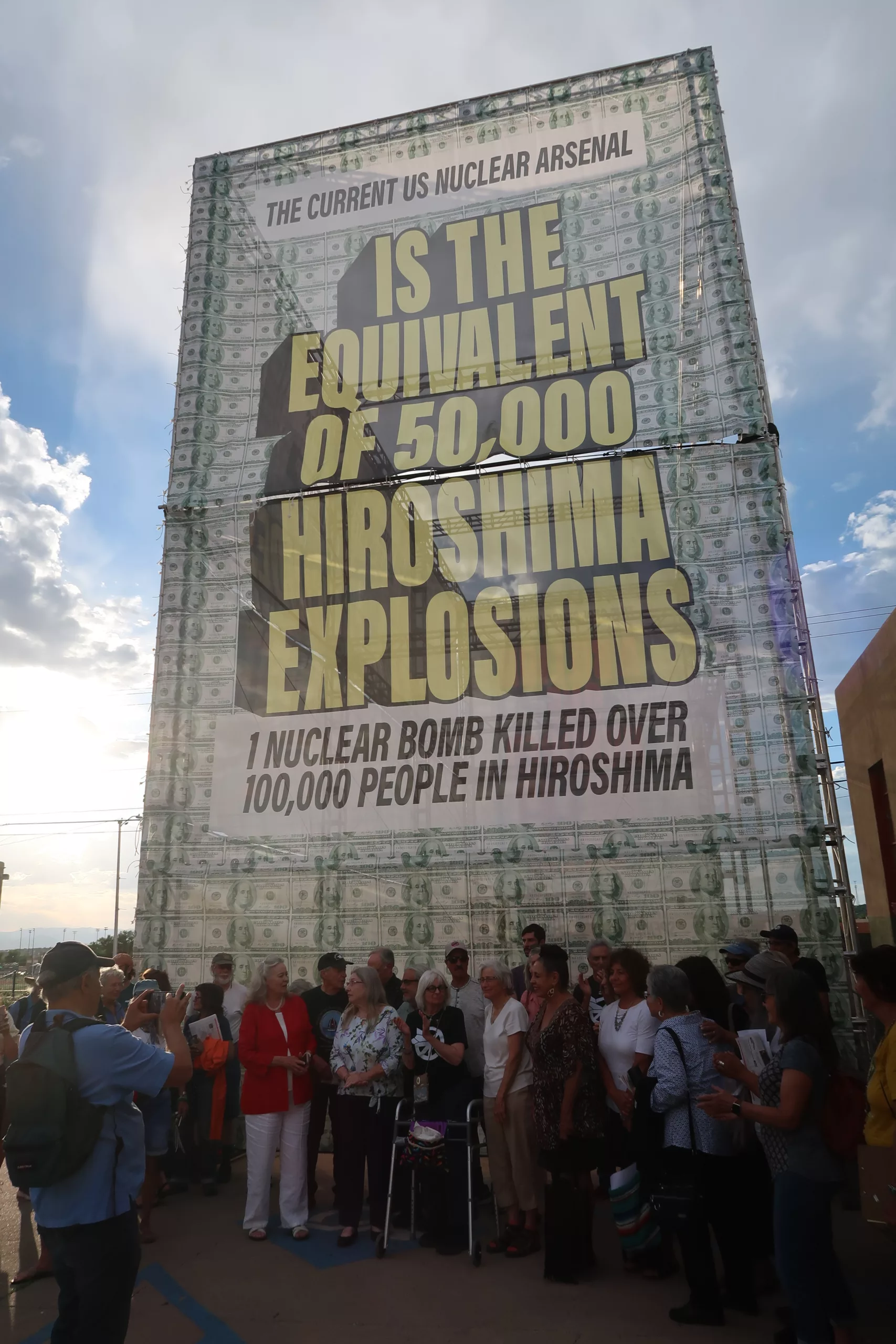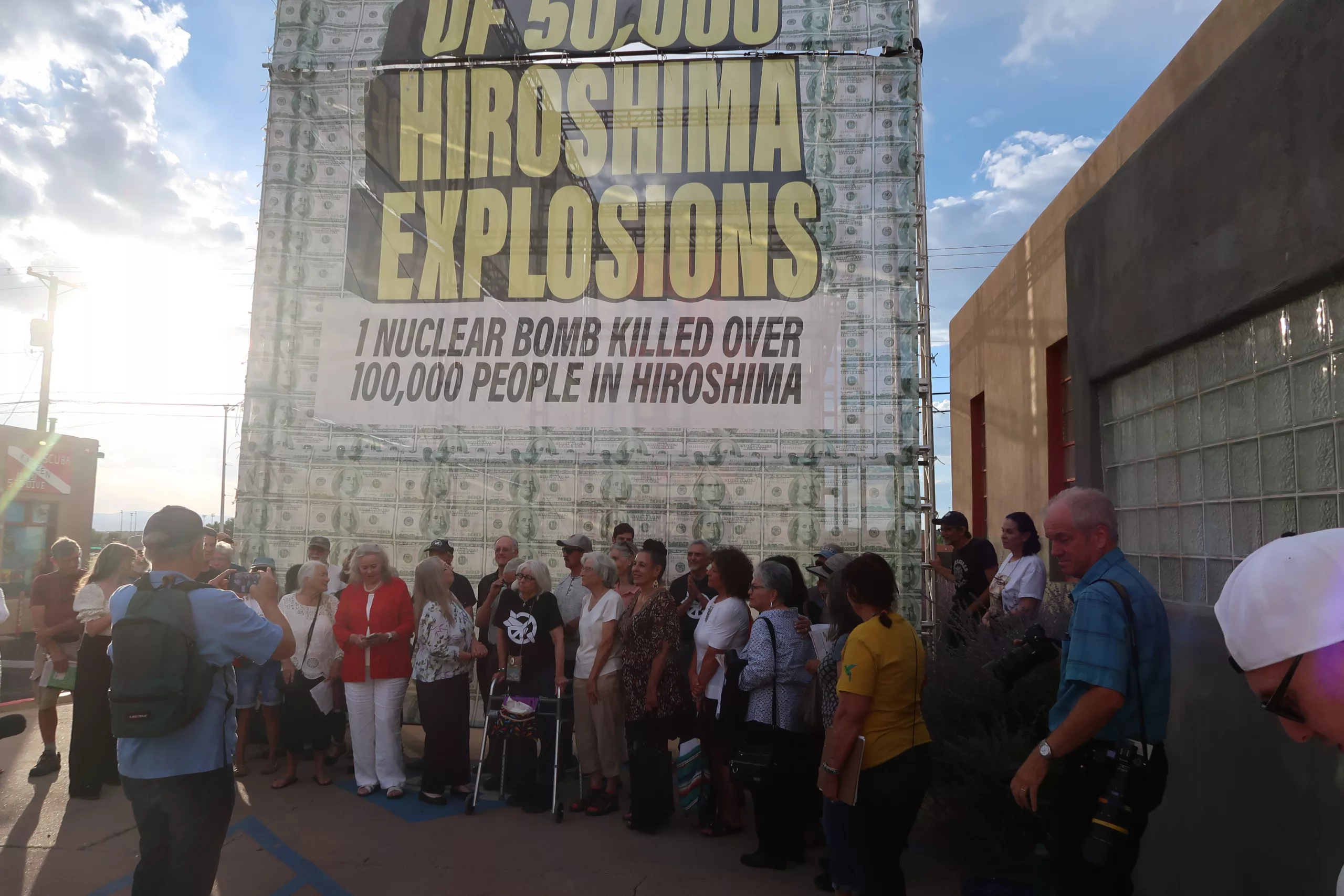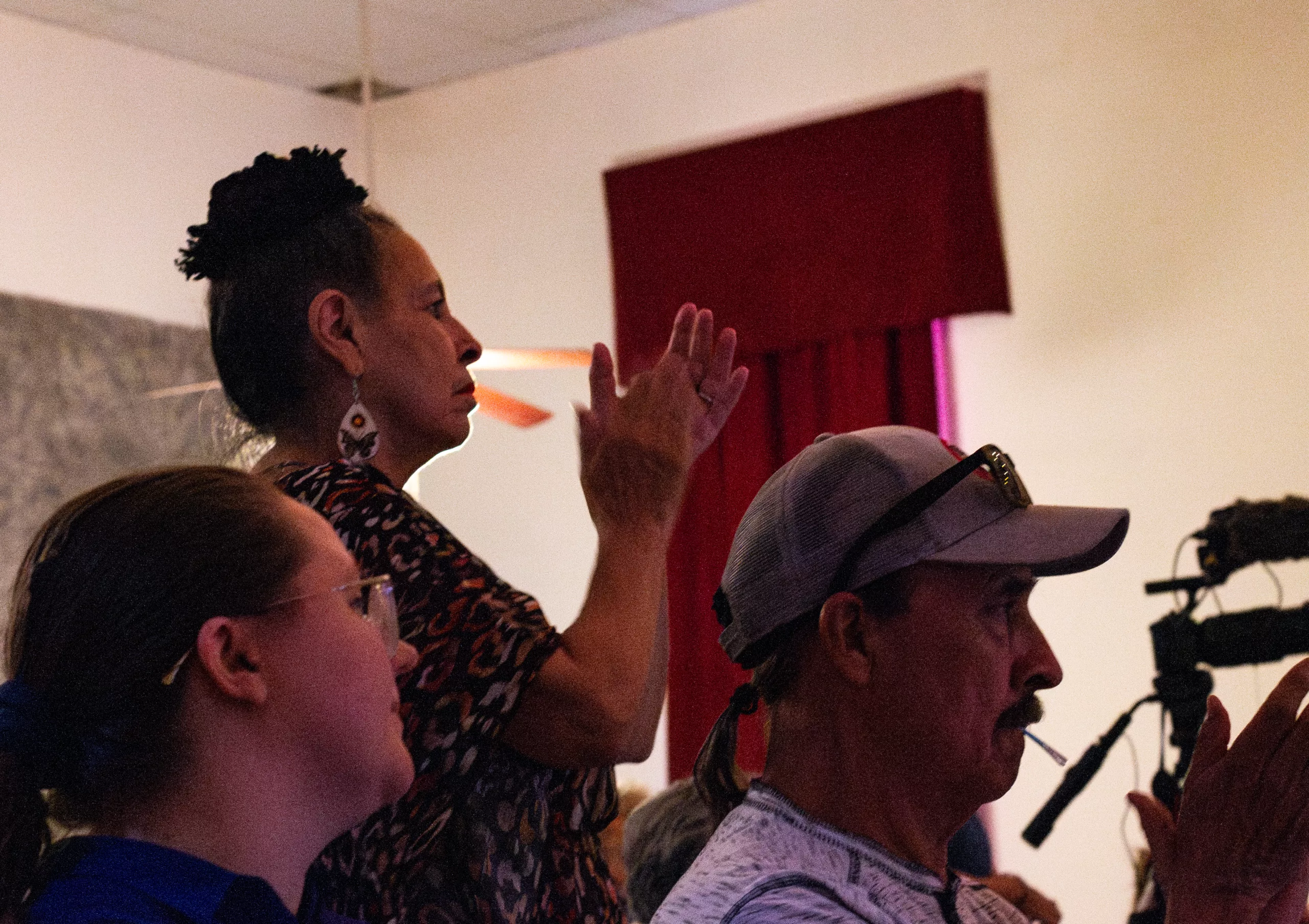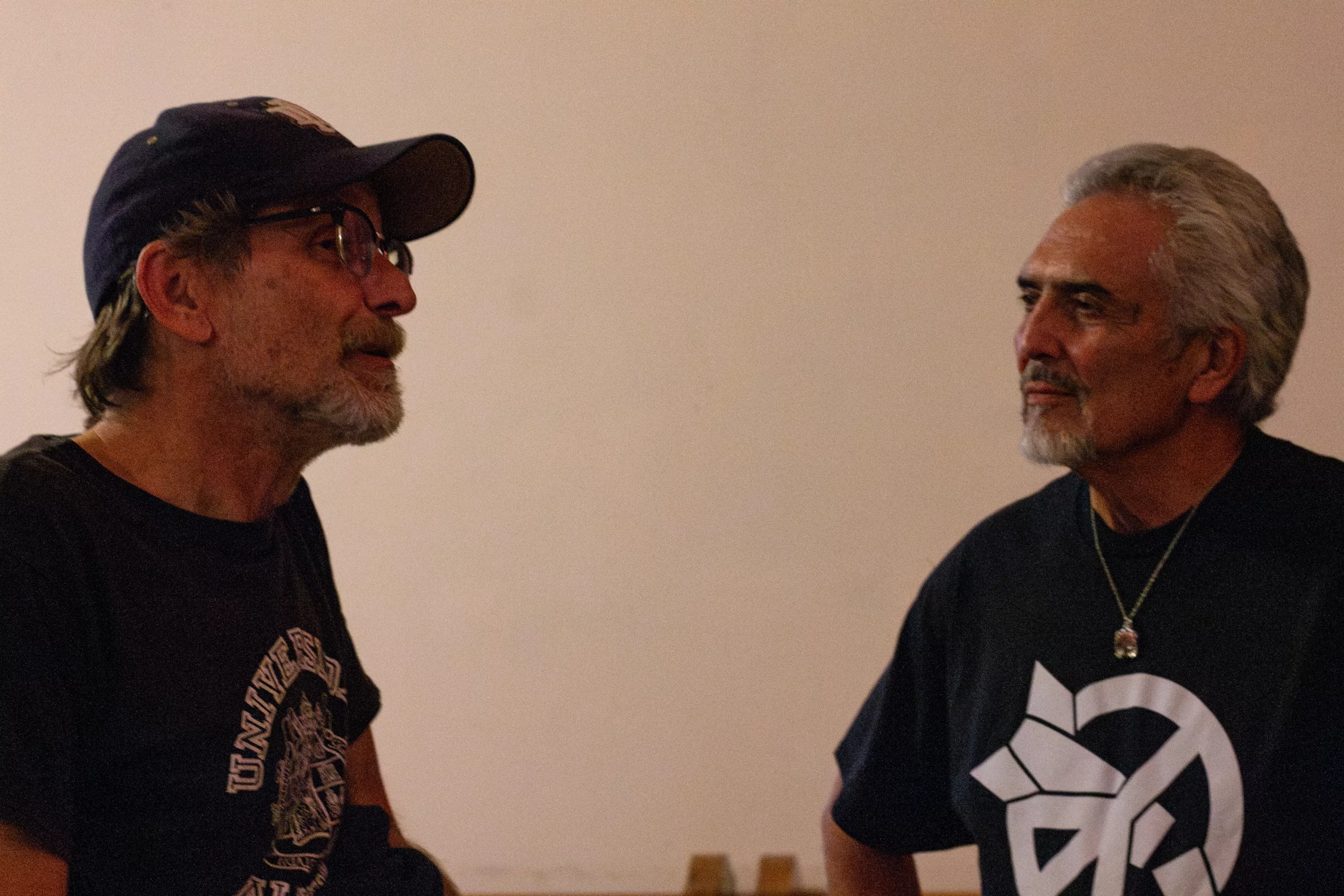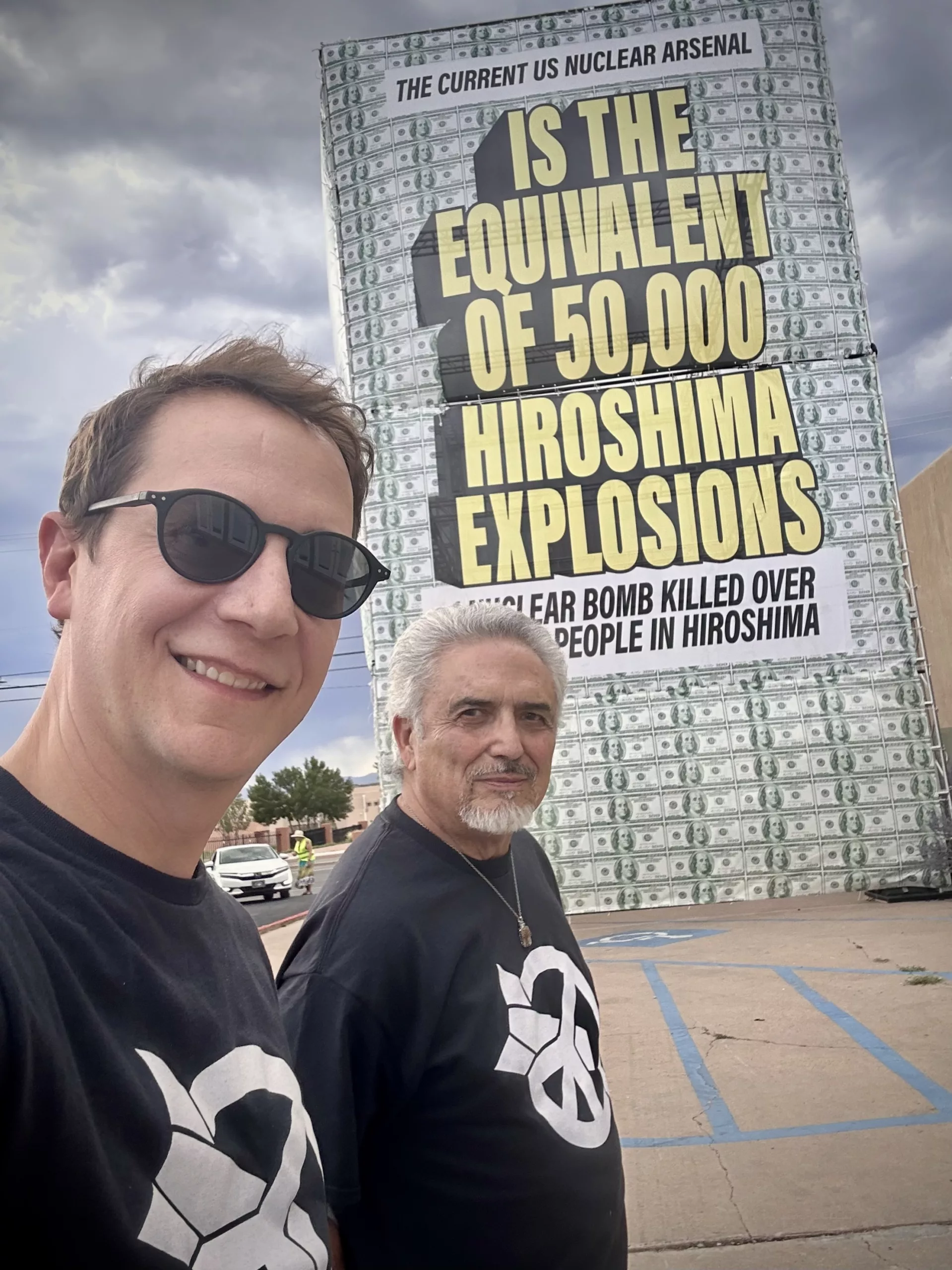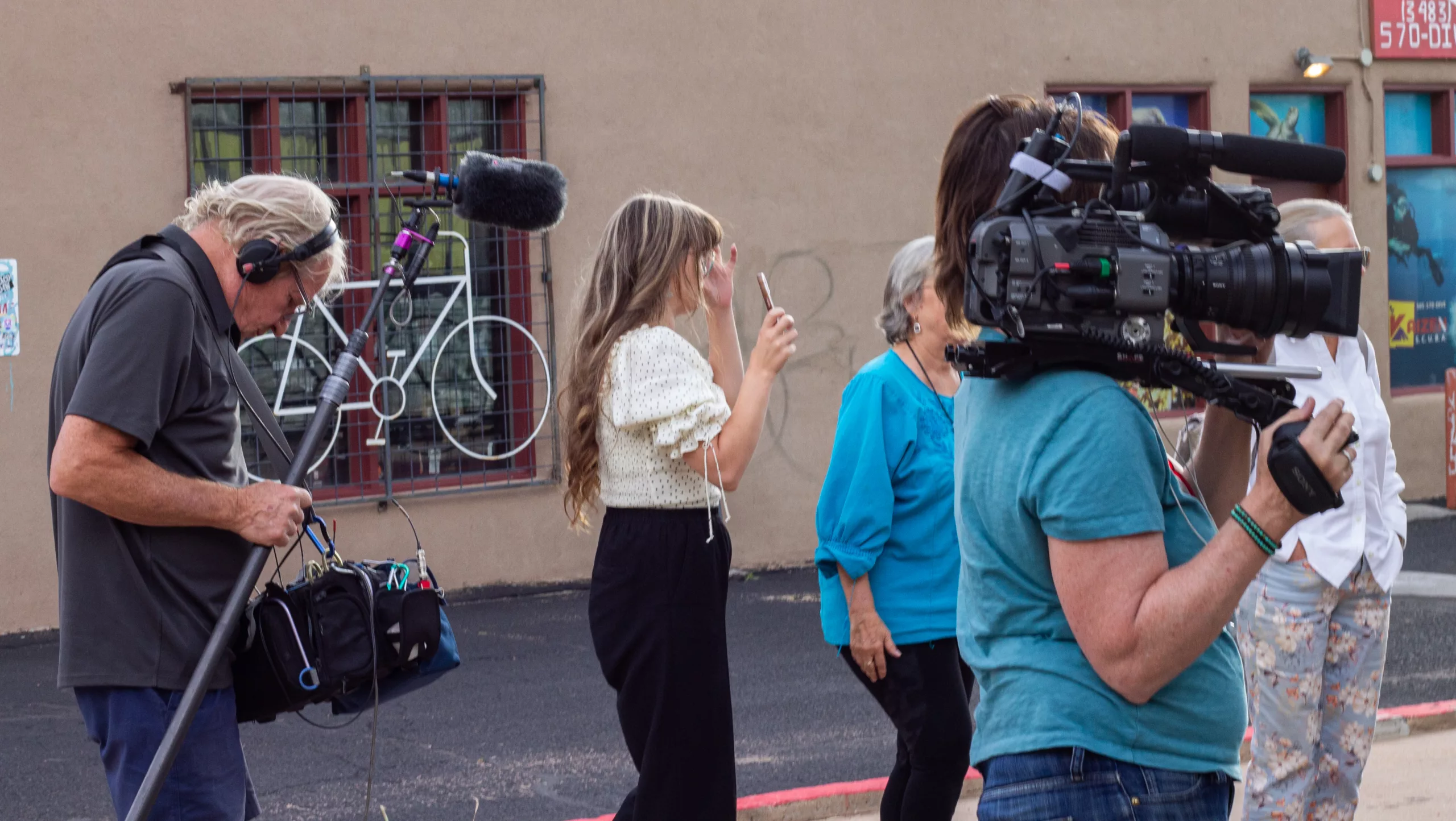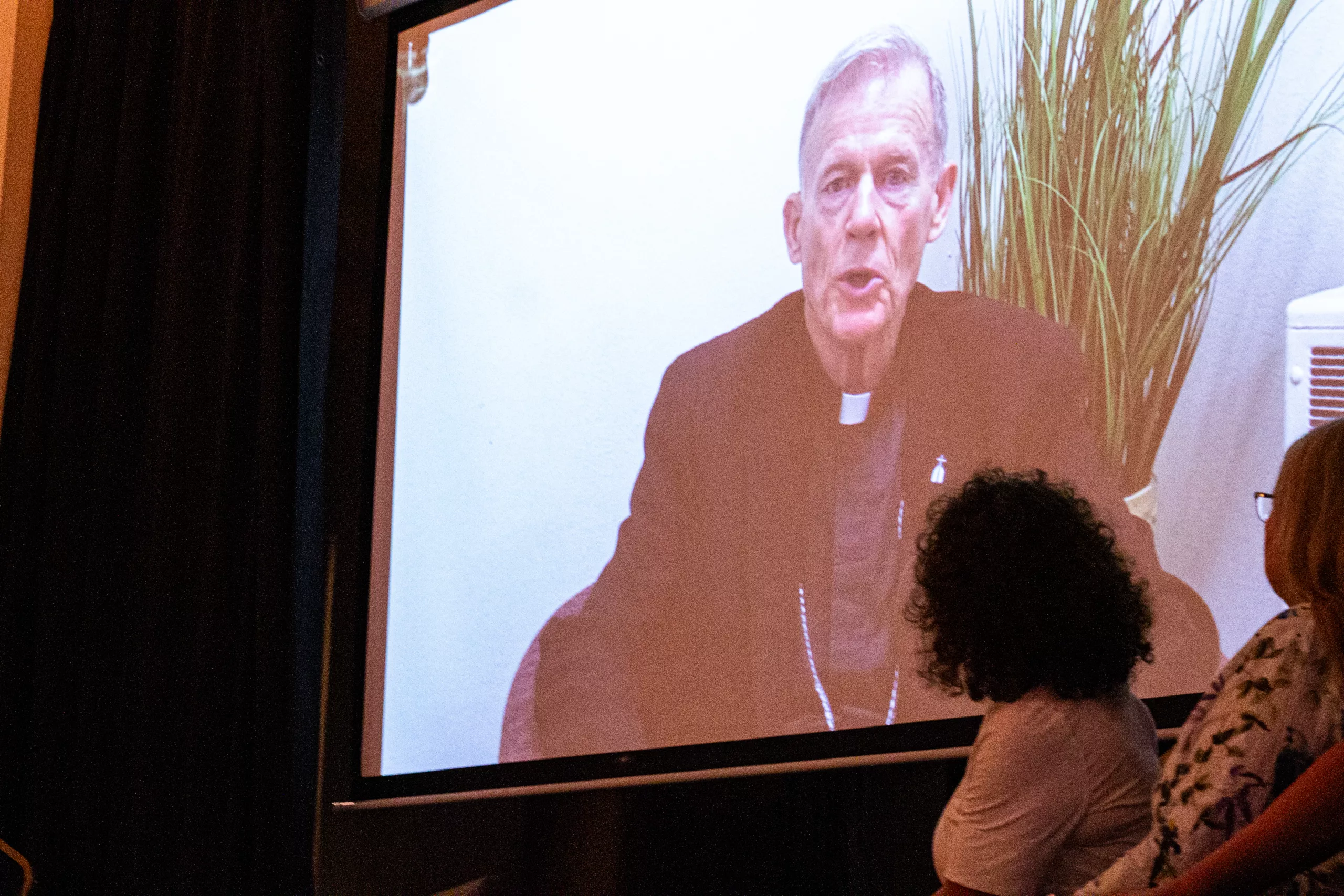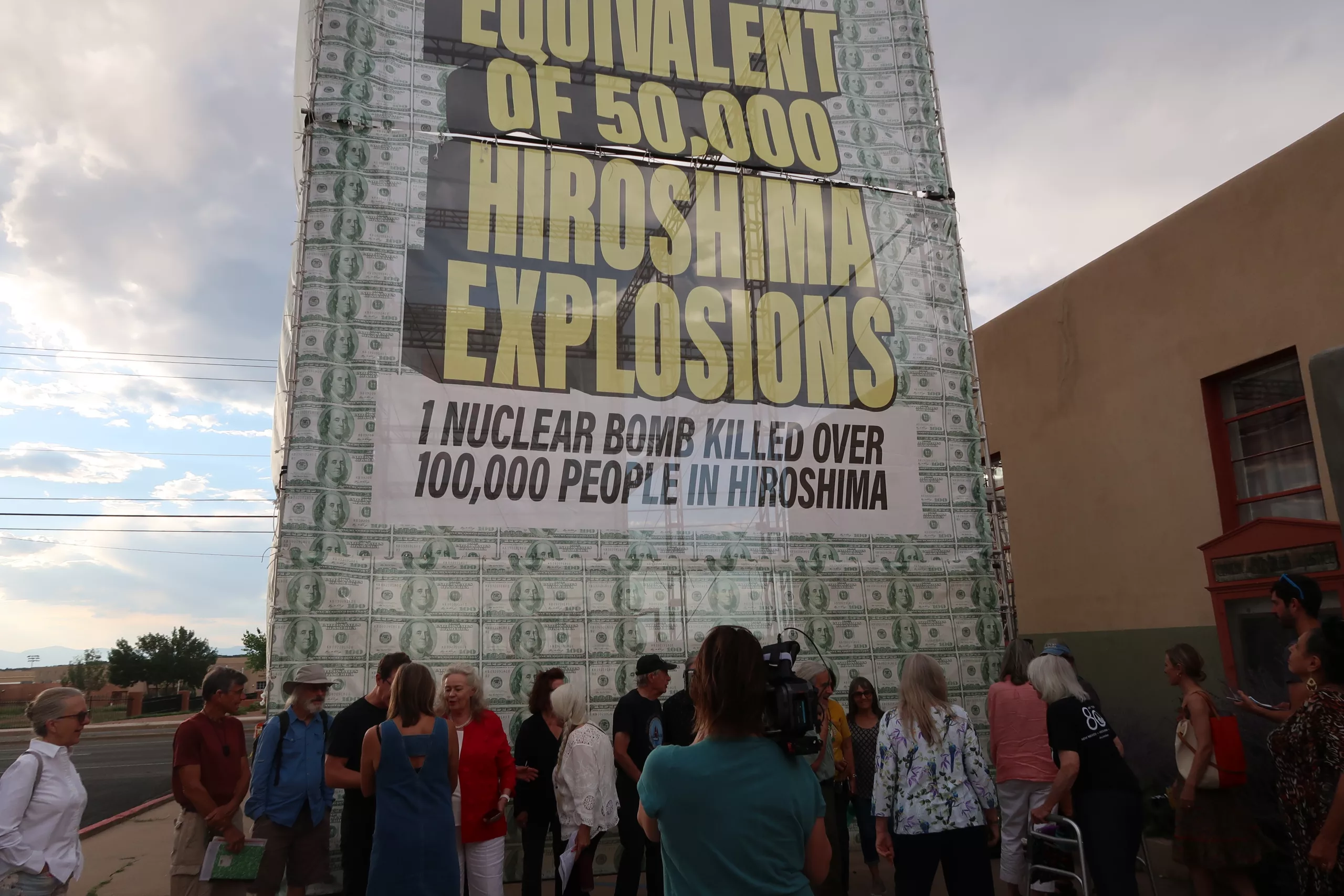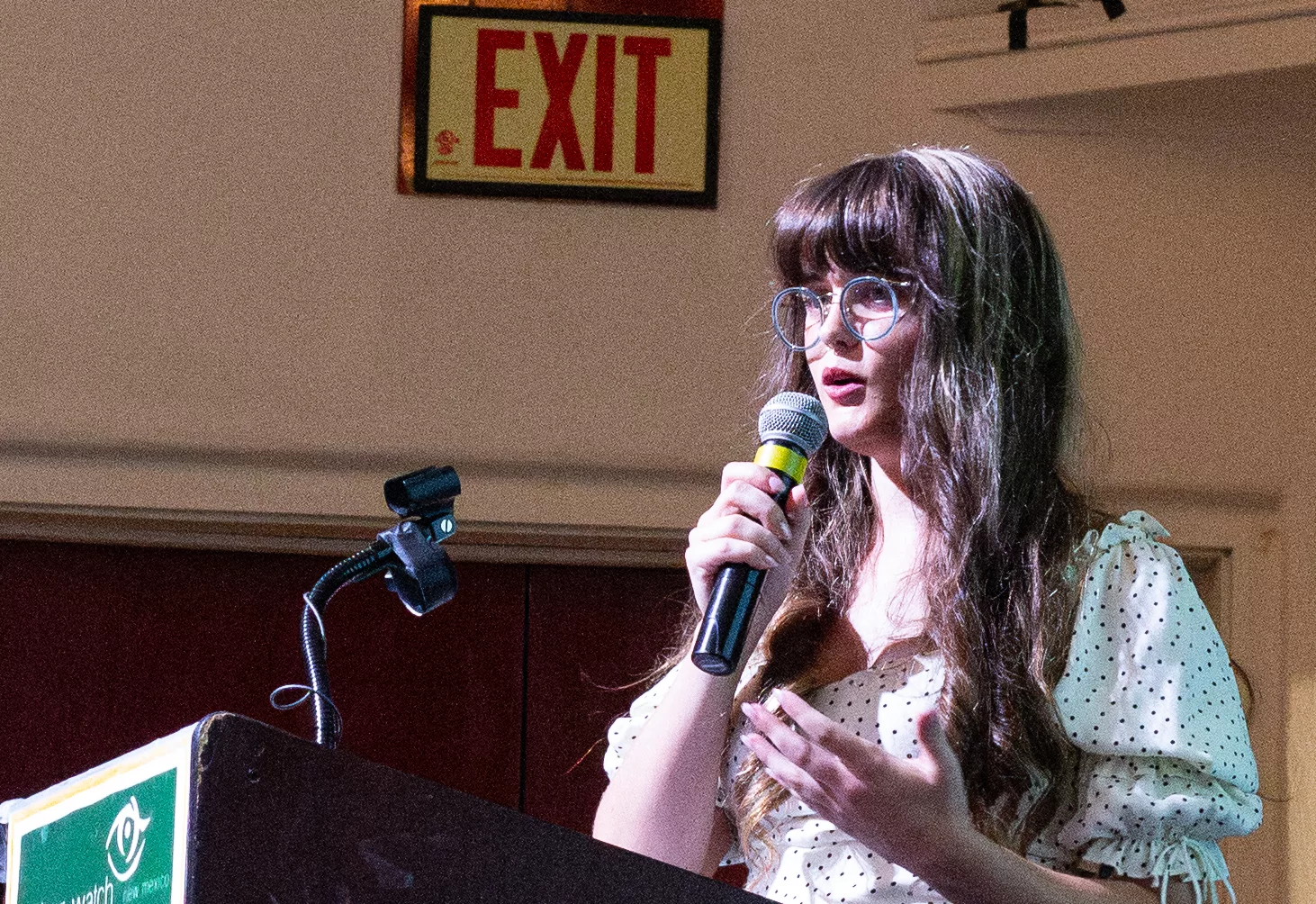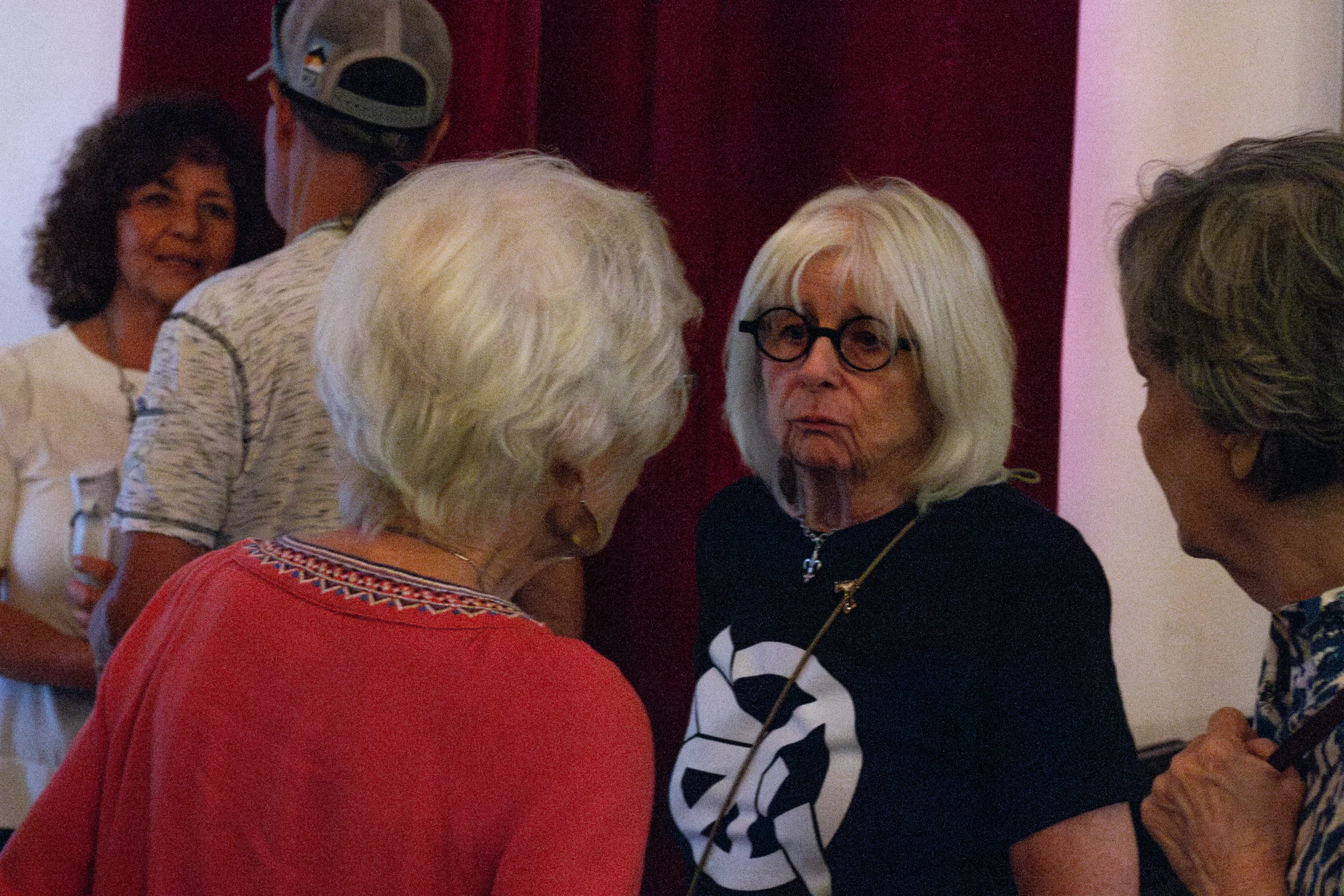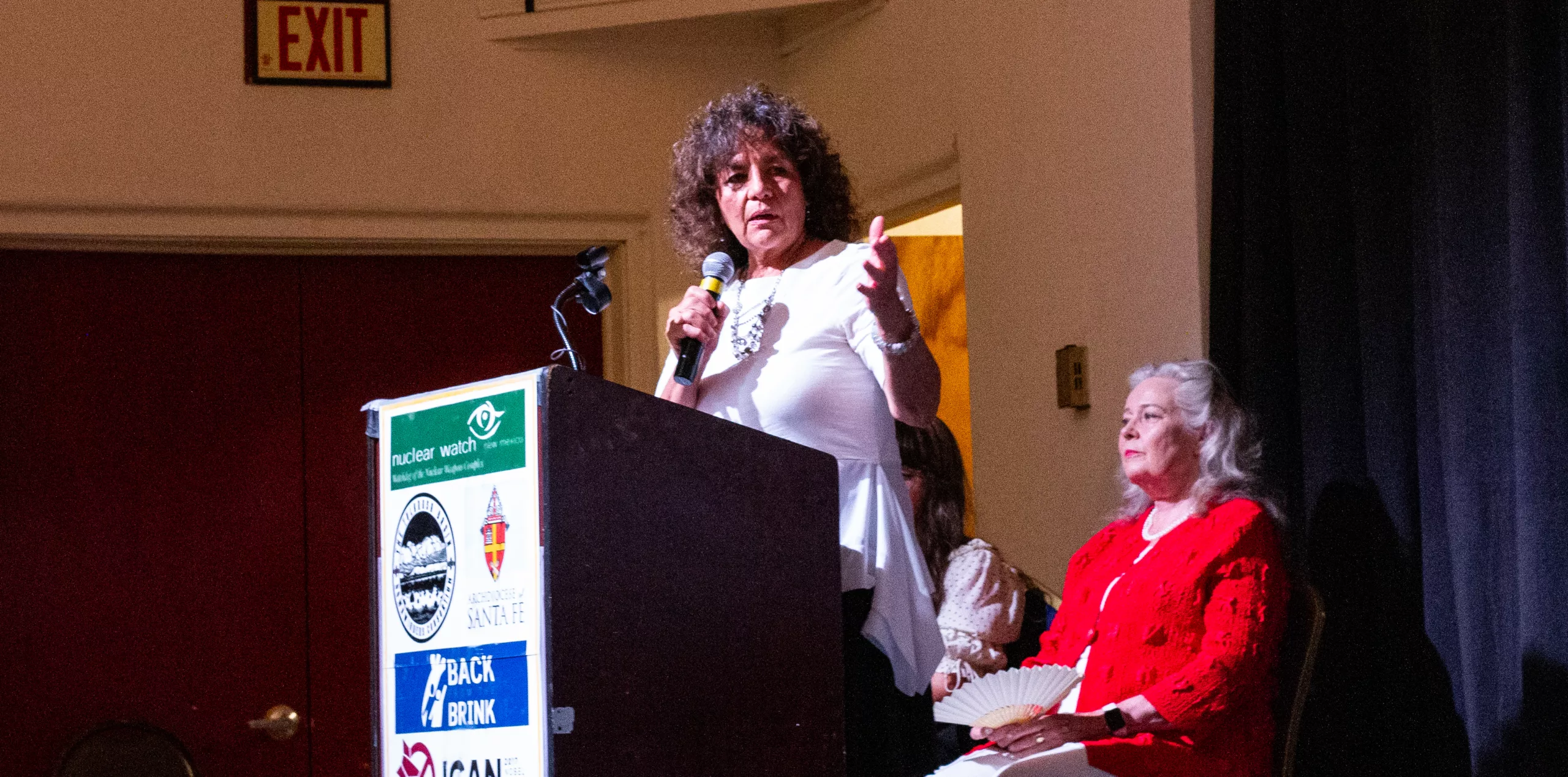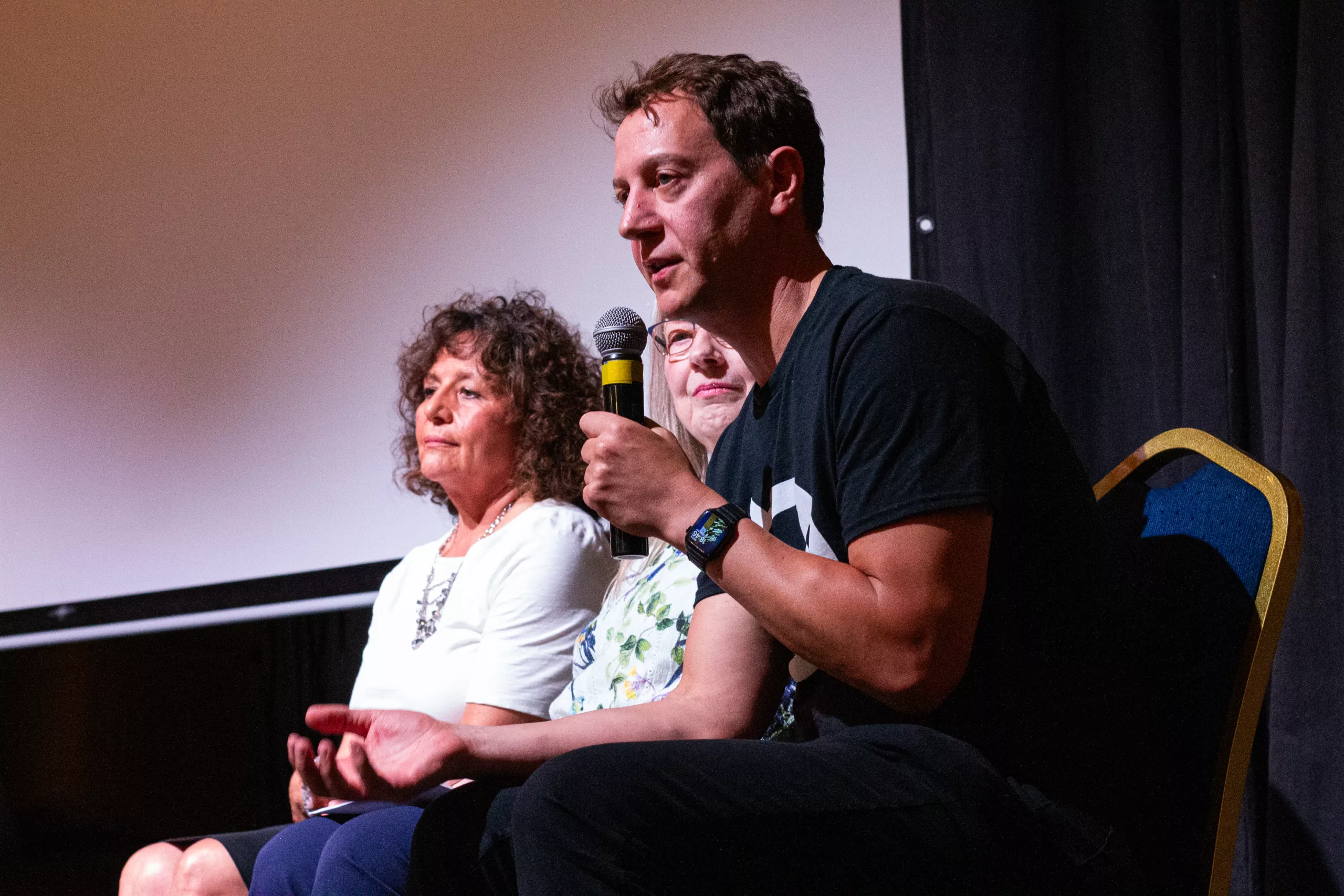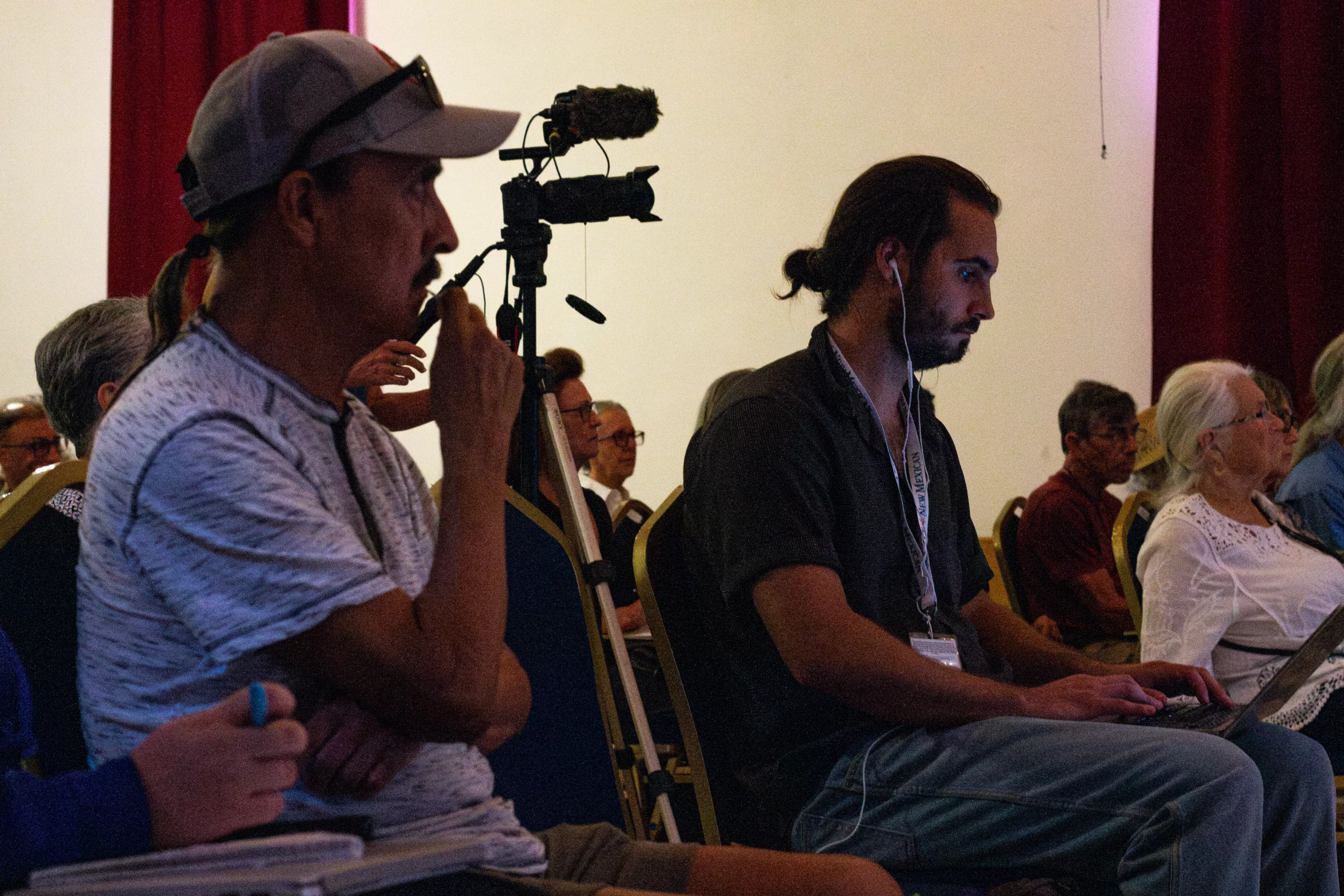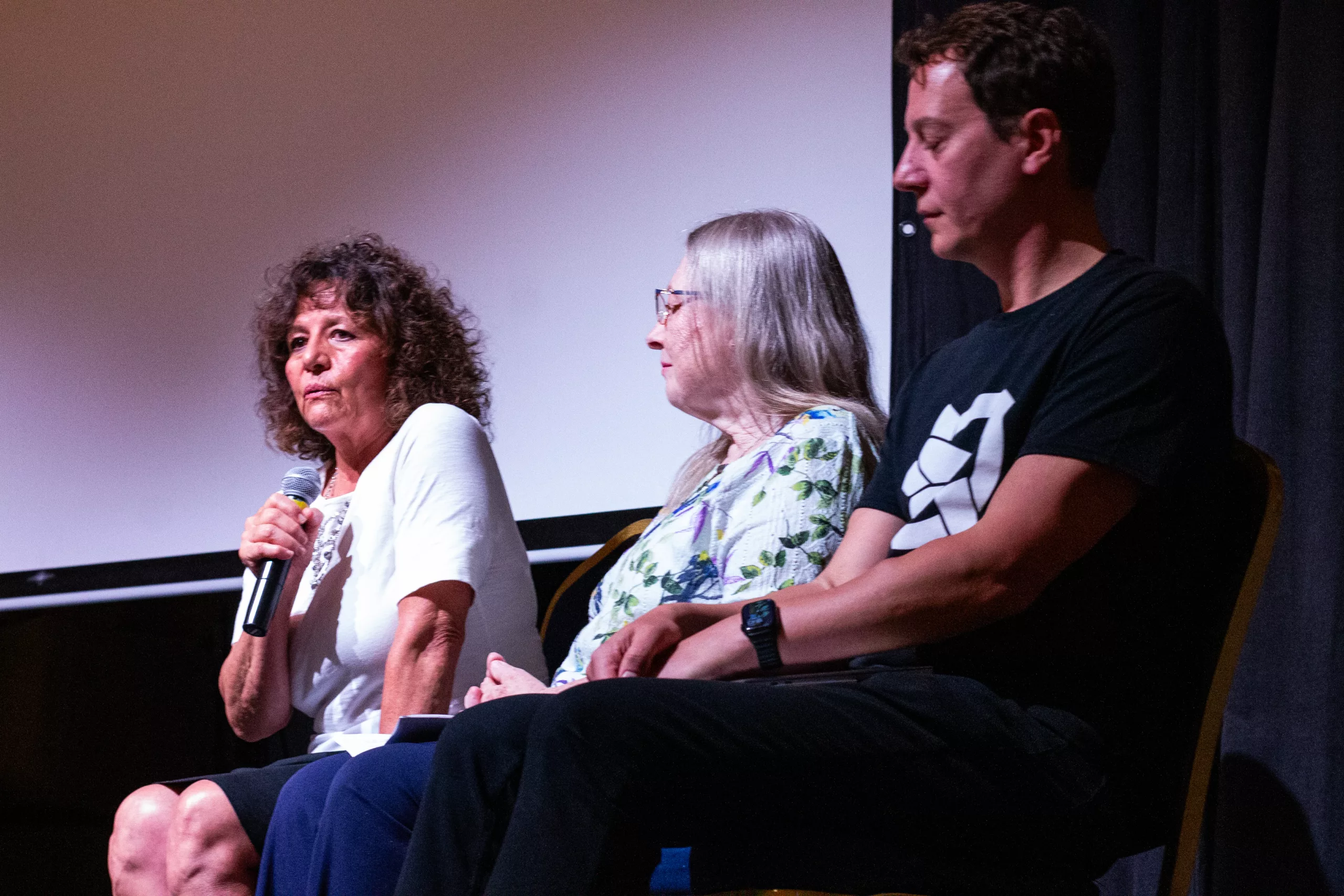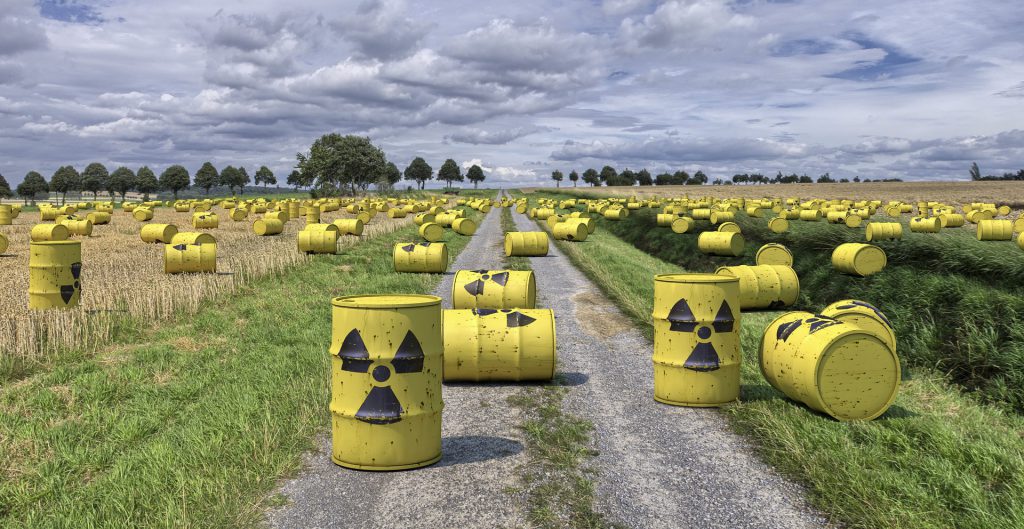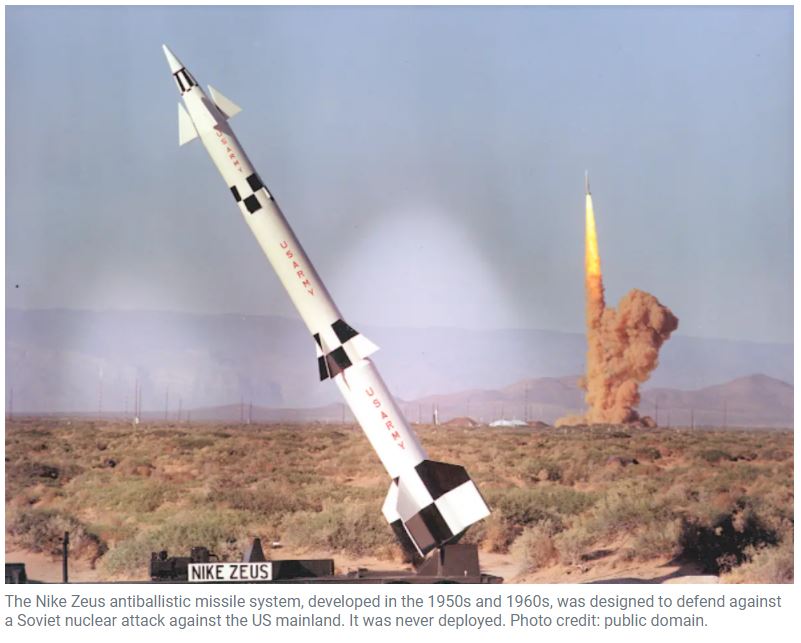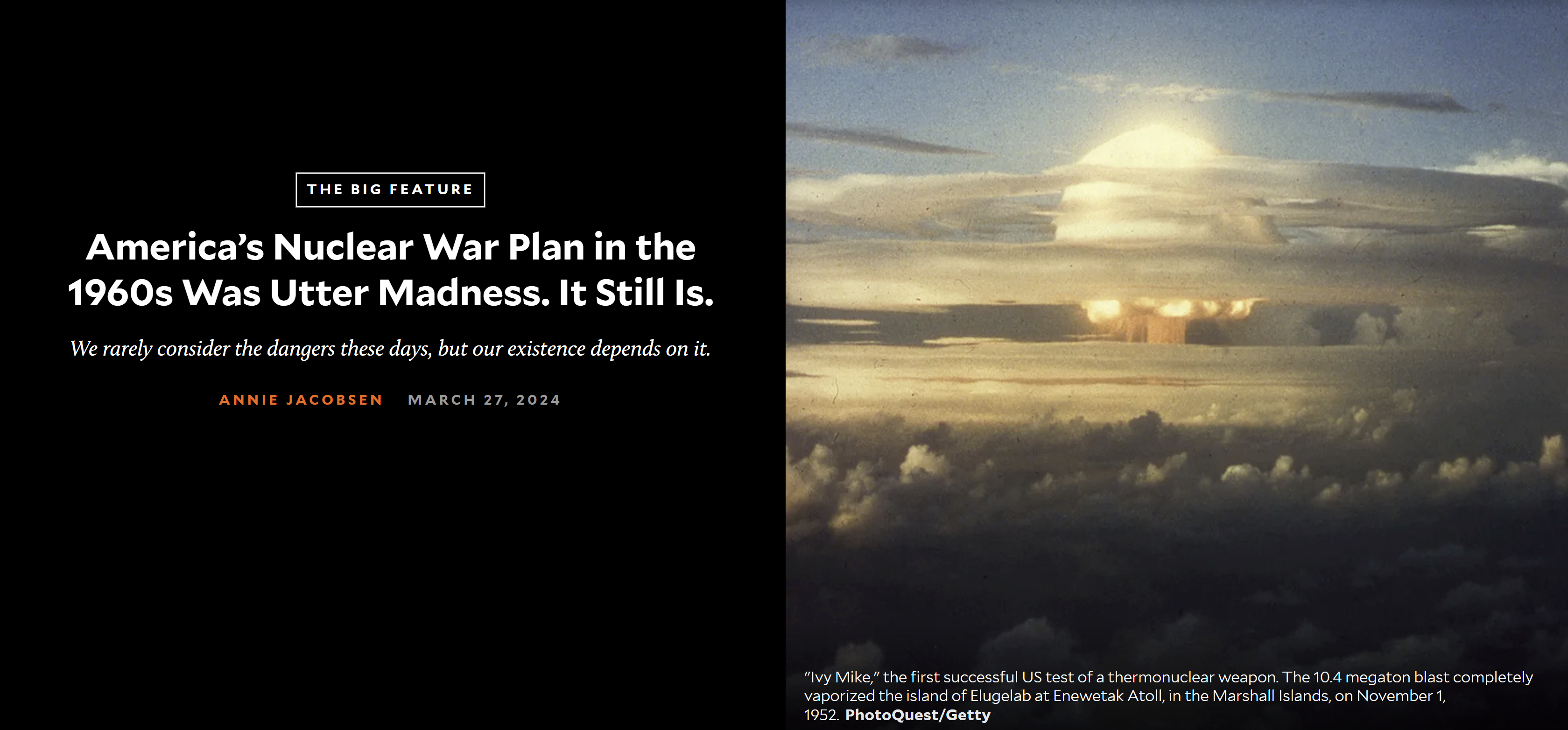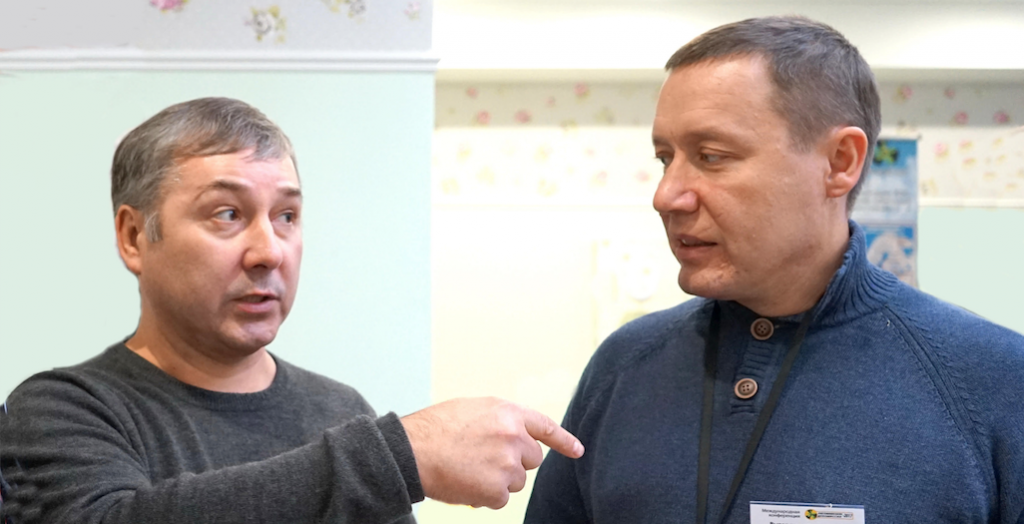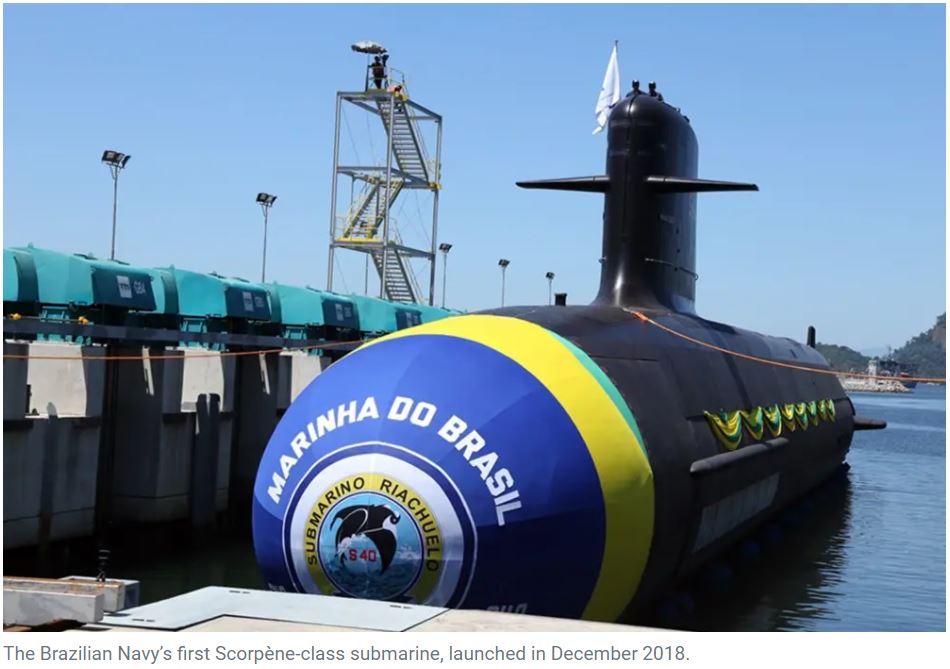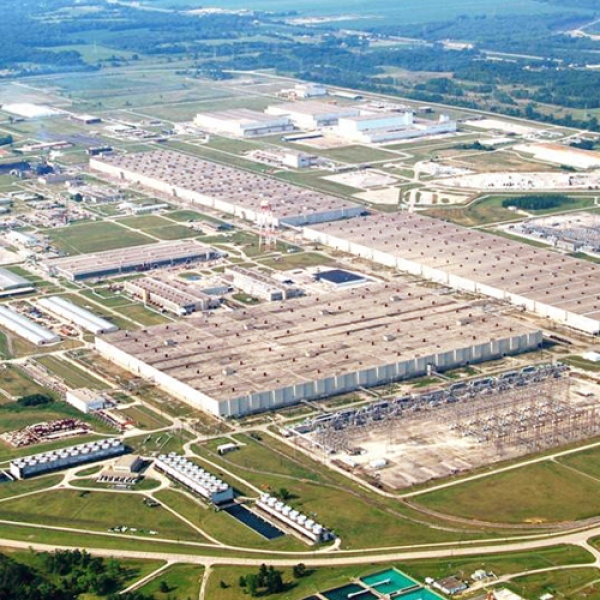Los Alamos’ plutonium facility safety systems need improvement, oversight board says
Nuclear Watch New Mexico executive direcor Jay Coghlan sees PF-4 as being a bigger scale — and having bigger risks — than the other aging buildings.
“PF-4 is not unique in being old,” Coghlan said. “However, PF-4 is totally unique in currently being the only facility that can process large amounts of plutonium … particularly including plutonium pit production. I think, in part, that’s why the Safety Board focuses more on PF-4 than, to my knowledge, than any other single individual facility.”
By Alaina Mencinger amencinger@sfnewmexican.com | November 7, 2025 santafenewmexican.com
An independent oversight agency wants to see improved safety systems at the facility at the heart of Los Alamos National Laboratory’s plutonium pit mission: PF-4.
The Defense Nuclear Facilities Safety Board reported what it believes to be gaps in a safety analysis drafted for PF-4 and delays in upgrades to safety systems in a letter last month to Energy Secretary Chris Wright.
“Maintaining momentum for these safety infrastructure projects is more important in light of the issues with the safety analysis,” the board wrote in the letter dated Oct. 10. It was signed by former acting chairman Thomas Summers.
LANL Prioritizes Plutonium “Pit” Bomb Core Production Over Safety
The independent Defense Nuclear Facilities Safety Board recently released its Review of the Los Alamos Plutonium Facility Documented Safety Analysis. It concluded that:
“While LANL facility personnel continue to make important upgrades to the Plutonium Facility’s safety systems, many of those projects have encountered delays due to inconsistent funding and other reasons. DOE and LANL should consider prioritizing safety-related infrastructure projects to ensure that the Plutonium Facility safety strategy adequately protects the public, as the facility takes on new and expansive national security missions.” (Page 24)
In early October 2024, the Department of Energy’s semi-autonomous National Nuclear Security Administration (NNSA) announced with great fanfare that the Los Alamos Lab had produced its first “diamond stamped” plutonium pit for the nuclear weapons stockpile. Tens of billions of taxpayers’ dollars have been sunk into LANL’s long delayed and over budget pit production program. Given no further announcements, it is not currently known whether or not the Lab is meeting its congressionally required production goals. Endemic nuclear safety problems have long been an intractable issue, at one point even forcing a three-year halt to plutonium operations at LANL’s Plutonium Facility-4 (“PF-4”).
In its recent Review, the Safety Board reported:
“The [2009] Plutonium Facility safety basis described very large potential [radioactive] dose consequences to the public following seismic events…. DOE committed to upgrade and seismically qualify the ventilation system, with a particular focus on a specific ventilation subsystem…”
“As the only facility in the DOE complex that can process large quantities of plutonium in many forms, [PF-4] represents a unique capability for the nation’s nuclear deterrent. The Board has long advocated for the use of safety-related active confinement systems in nuclear facilities for the purposes of confining radioactive materials…Passive confinement systems are not necessarily capable of containing hazardous materials with confidence because they allow a quantity of unfiltered air contaminated with radioactive material to be released from an operating nuclear facility following certain accident scenarios. Safety related active confinement ventilation systems will continue to function during an accident, thereby ensuring that radioactive material is captured by filters before it can be released into the environment… (Page 2, bolded emphases added)
AP: Trump appears to suggest the US will resume testing nuclear weapons for first time in 30 years
“For Trump, who has cast Russia as a “paper tiger” for failing to swiftly subdue Ukraine, the message is that Russia remains a global military competitor, especially on nuclear weapons, and that Moscow’s overtures on nuclear arms control should be acted on.”
By MICHELLE L. PRICE and CHRIS MEGERIAN | October 30, 2025 apnews.com
BUSAN, South Korea (AP) — President Donald Trump appeared to suggest the U.S. will resume testing nuclear weapons for the first time in three decades, saying it would be on an “equal basis” with Russia and China.
The Kremlin pointed out that a global ban on nuclear tests has remained in place, but warned that if any country resumes nuclear testing Russia would follow suit.
There was no indication the U.S. would start detonating warheads, but Trump offered few details about what seemed to be a significant shift in U.S. policy.
He made the announcement on social media minutes before he met with Chinese leader Xi Jinping on Thursday in South Korea. He offered little clarity when he spoke to reporters later aboard Air Force One as he flew back to Washington.
The U.S. military already regularly tests its missiles that are capable of delivering a nuclear warhead, but it has not detonated the weapons since 1992. The Comprehensive Nuclear Test Ban Treaty, which the U.S. signed but did not ratify, has been observed since its adoption by all countries possessing nuclear weapons, North Korea being the only exception.
REUTERS: Trump tells Pentagon to immediately resume testing US nuclear weapons
“Russia – which tested a new nuclear-powered cruise missile on October 21, held nuclear readiness drills on October 22 and tested a new nuclear-powered autonomous torpedo on October 28 – said it hoped Trump had been properly informed that Moscow had not tested a nuclear weapon itself.”
By Trevor Hunnicutt, Ismail Shakil and Kanishka Singh | October 30, 2025 reuters.com
VIEW THE RECORDING: Santa Fe Ecumenical Conversations Towards Nuclear Disarmament at Santa Maria de la Paz Catholic Community – Monday, October 27
Archbishop John C. Wester and NukeWatch New Mexico presented a special evening at Santa Maria de la Paz Catholic Community on Monday, October 27, from 6:00 to 8:00 p.m. MT. Following a presentation from NukeWatch executive director Jay Coghlan on U.S. nuclear weapons “modernization,” the Archbishop shared reflections from his pastoral letter, Living in the Light of Christ’s Peace, and speak about the importance of dialogue and hope in working toward nuclear disarmament.
View the recording at https://www.youtube.com/watch?v=9LFmQzMoJds&t=1s
Trump Orders Nuclear Weapons Testing for New Nuclear Arms Race
New Plutonium “Pit” Bomb Cores at Los Alamos Lab Could Make It Real
Just minutes before meeting with Chinese President Xi Jinping, Trump posted on his Truth Social media platform that “Because of other countries testing programs, I have instructed the Department of War to start testing our Nuclear Weapons on an equal basis. That process will begin immediately.” House Speaker Mike Johnson soon followed on CNN saying, “I think it is an obvious and logical thing to ensure that our weapons systems work.”
No other countries are currently testing nuclear weapons (the last was by North Korea in 2017). Further, any nuclear weapons tests by the U.S. would be performed by the Department of Energy (whose last test was in 1992), not the Department of War (until recently the Department of Defense). Trump was likely referring to Vladimir Putin’s recent claims of a new nuclear powered cruise missile and a tsunami-causing nuclear-armed torpedo that could threaten America’s coastal cities. In addition, China is dramatically expanding its own fleet of intercontinental ballistic missiles.
But central to all this is the U.S.’ own $2 trillion “modernization” program that will rebuild every nuclear warhead in the planned stockpile with new military capabilities and produce new-design nuclear weapons as well. This so-called modernization program will also build new nuclear weapons production facilities expected to be operational until ~2080, and buy new missiles, subs, and bombers from the usual rich defense contractors, all to keep nuclear weapons forever.
‘Nuclear weapons are blasphemous’: Archbishop Wester continues disarmament push with talk
This event was organized by the “Santa Fe Ecumenical Conversations Towards Nuclear Disarmament” group at the Santa Maria de la Paz parish near the Santa Fe Community College. They kindly invited NukeWatch to speak before Archbishop Wester for what turned out to be a wonderful event. The full recording can be viewed at https://www.youtube.com/@SMDLP/streams
By Cormac Dodd cdodd@sfnewmexican.com | October 28, 2025 santafenewmexican.com
Despite saying he has received a somewhat muted response from the local faithful, Santa Fe’s Catholic archbishop is still pushing nuclear disarmament as vital to humanity’s spiritual well-being and continued existence.
“I think nuclear weapons are blasphemous, because I think nuclear weapons are humanity’s attempt to build a Tower of Babel, an attempt to eat from the apple of the tree of the Garden of Eden, to become like God, to become gods,” Archbishop John C. Wester said in a roughly 30-minute address at Santa Maria de la Paz Catholic Church south of Santa Fe.
“In humility, we must avoid inventing anything that, in a matter of hours, can destroy what God has created,” the leader of the Archdiocese of Santa Fe continued. “The story of Adam and Eve is archetypal, I think: When human beings try to become as God, they lose the Garden of Eden and they must endure the cruel reality of paradise lost.”
The archbishop’s comments followed a journey he undertook to Japan on the 80th anniversary of the U.S. military’s decision to drop atomic bombs on Hiroshima and Nagasaki toward the end of World War II. He spoke in front of an audience of about 50 people — who gave Wester a standing ovation — at Monday’s event
In a Looming Nuclear Arms Race, Aging Los Alamos Faces a Major Test
The lab where Oppenheimer developed the atomic bomb is the linchpin in the United States’ effort to modernize its nuclear weapons. Yet the site has contended with contamination incidents, work disruptions and old infrastructure.
By Alicia Inez Guzmán | October 28, 2025 The New York Times nytimes.com
In a sprawling building atop a mesa in New Mexico, workers labor around the clock to fulfill a vital mission: producing America’s nuclear bomb cores.
The effort is uniquely challenging. Technicians at Los Alamos National Laboratory must handle hazardous plutonium to create the grapefruit-size cores, known as pits. They do so in a nearly 50-year-old building under renovation to address aging infrastructure and equipment breakdowns that have at times disrupted operations or spread radioactive contamination, The New York Times found.
Now, the laboratory is under increasing pressure to meet the federal government’s ambitions to upgrade the nation’s nuclear arsenal. The $1.7 trillion project includes everything from revitalizing missile silos burrowed deep in five states, to producing new warheads that contain the pits, to arming new land-based missiles, bomber jets and submarines.
But the overall modernization effort is years behind schedule, with costs ballooning by the billions, according to the Congressional Budget Office. In 2018, Congress charged Los Alamos with making an annual quota of 30 pits by 2026, but by last year it had produced just one approved for the nuclear stockpile. (Officials have not disclosed whether more have been made since then.)
*The featured image differs from the article photo due to usage rights.
Why Putin’s ‘invincible’ nuclear-powered missile is more likely to become a disastrous ‘flying Chernobyl’ for Russia
The US abandoned efforts to build nuclear-powered missile weapons during the 1950s arms race with the Soviet Union as a nuclear-powered missile would effectively be a huge radiation risk.
Jeffrey Lewis, a nuclear nonproliferation expert at Middlebury College, described it as a “tiny flying Chernobyl,” referencing the Soviet power plant that melted down and covered a 1,600-mile area with toxic radiation…While Lewis believes the Burevestnik is only capable of subsonic speed and easy to intercept, he warned that Russia’s ambition poses a return to the Cold War era.
“NATO aircraft could intercept it. The problem is that Burevestnik is yet another step in an arms race that offers no victory for either side,” he wrote on X.
By Ronny Reyes | October 28, 2025 nypost.com
Russian strongman Vladimir Putin’s latest threats that Moscow is preparing to deploy its new “invincible” nuclear-powered cruise missile has drawn a rebuke from President Trump and a reminder of America’s own nuclear might.
But experts say the Burevestnik missile could end up being more like a disastrous “flying Chernobyl” for Russia — and proves Putin is actually nervous about the possibility of the US giving Tomahawk cruise missiles to Ukraine.
George Barros, of the Washington-based Institute for the Study of War, described Putin’s ominous Sunday announcement as a form of fear mongering from a Kremlin afraid that the US could give Kyiv a much more conventional weapon — the tried and true Tomahawk.
Russia tested new nuclear-powered Burevestnik cruise missile
“For Trump, who has cast Russia as a “paper tiger” for failing to swiftly subdue Ukraine, the message is that Russia remains a global military competitor, especially on nuclear weapons, and that Moscow’s overtures on nuclear arms control should be acted on.”
By Guy Faulconbridge and Lidia Kelly Tim Balk | October 26, 2025 reuters.com
- Russia tests nuclear-capable Burevestnik missile
- Missile flew for 14,000 km, 15 hours
- Putin says it can pierce any missile defences
Trump Administration Providing Weapons Grade Plutonium to Sam Altman
“If there were adults in the room and I could trust the federal government to impose the right standards, it wouldn’t be such a great concern, but it just doesn’t seem feasible.”
By: Joe Wilkins | October 24, 2025 futurism.com
With the economy the way it is these days, it’s nice to have a little walking around money.
Donald Trump certainly thinks so. Since his return to the White House, the president has labeled 440 federal properties for possible sale, leased 13.1 million acres of public land for strip mining, and held a fire sale for satellites developed by NASA’s Jet Propulsion Lab.
In one of his wildest money moves to date, the Financial Times reports that Trump is now offering companies access to plutonium from America’s arsenal of cold war nuclear missiles.
On Tuesday, the US Department of Energy (DOE) launched an application for interested parties to apply for access to a maximum of 19 metric tonnes — a little under 42,000 pounds — of weapons-grade plutonium, which has long been a key resource undergirding the US nuclear arsenal.
One of the companies anticipated to receive shipments of the fissile isotope from the DOE is Oklo, a “nuclear startup” backed — and formerly chaired — by OpenAI CEO Sam Altman. Earlier in October, Oklo was one of four US companies chosen by the DOE to join a new pilot program meant to rush the testing and approval of experimental reactor designs.
As the FT reports, we won’t know for certain until December 31, when the DOE announces the companies selected to purchase the plutonium, but it’s likely Oklo will be among them. That’s stirring up plenty of anxiety throughout the scientific community, who say the relaxed approach to nuclear development is a major cause for alarm.
“If there were adults in the room and I could trust the federal government to impose the right standards, it wouldn’t be such a great concern, but it just doesn’t seem feasible,” Edwin Lyman, a physicist with the Union of Concerned Scientists told the FT.
U.S. Agency That Protects Nuclear Arsenal to Furlough Workers
Jay Coghlan, the executive director of Nuclear Watch New Mexico, a private group that monitors the agency, said it was unclear if the furloughs would have any immediate effect on nuclear safety. “As a baseline, the nuclear safety officers have always been understaffed. There is simply not enough federal oversight as is. And then you’re talking about furloughing more,” he added.
By Tim Balk | October 17, 2025 nytimes.com
![]() The National Nuclear Security Administration said 1,400 workers would be affected by Monday.
The National Nuclear Security Administration said 1,400 workers would be affected by Monday.
Nuclear weapons safety oversight in decline with Trump, Biden inaction
The lone independent federal agency responsible for ensuring safety at U.S. nuclear weapons sites — including Hanford in Washington state — will lose its ability to issue recommendations for safer work by January if the Trump administration doesn’t replenish its board, which this month dwindles to one member.
By Patrick Malone | October 15, 2025 seattletimes.com
The Defense Nuclear Facilities Safety Board ensures adequate public health and worker safety by scrutinizing hazardous work conducted by the U.S. Department of Energy and its contractors that produce and maintain the nuclear arsenal. If the Trump administration and Congress don’t move quickly to populate the board, it will be incapable of issuing formal safety recommendations to the Energy Department, according to a report last month from the Government Accountability Office, Congress’ investigative arm.
If the board is without a quorum of at least three members for a year, “the agency would essentially be able to offer only nonbinding advice to DOE,” according to the report.
“The whole idea of having the board in place is to provide the optics in addition to the substance,” Nathan Anderson, a Washington state-based director in the GAO’s natural resources division, told The Seattle Times.
The board does not have regulatory or enforcement authorities, but its advice carries significant weight and cannot be easily dismissed or disregarded, the GAO report states. The board’s recommendations to the U.S. secretary of energy are published for public comment, and the secretary must respond in writing. The board also reports each year to selected congressional committees on its recommendations to the Energy Department and any outstanding safety problems.
FULL ORIGINAL ARTICLE (SEATTLE TIMES)
YOU CAN HELP SAVE THE DNFSB TODAY:
Continue reading
New Article about “Participatory Democracy in Action” Describes WIPP Permit Negotiations
Thanks to our friends at Concerned Citizens for Nuclear Safety for this article:
In an essay for NYU’s Democracy Project, David F. Levi, a former federal judge and director emeritus of the Bolch Judicial Institute at Duke Law, reflected on the negotiations he facilitated in New Mexico about the renewal of the hazardous waste permit for the Waste Isolation Pilot Plant (WIPP), a deep geologic repository for plutonium-contaminated waste generated in the fabrication of nuclear weapons. Judge Levi’s essay is entitled “Participatory Democracy in Action.” He wrote:
 “A couple of years ago, I was asked to mediate a dispute between the U.S. Department of Energy (DOE) and the New Mexico Environment Department (NMED) concerning the renewal of a required state permit for DOE’s Waste Isolation Pilot Plant (WIPP), the nation’s only deep underground nuclear waste storage facility, located outside of Carlsbad, New Mexico. I thought I could help the two government entities but quickly came to realize that under the mediation procedures followed by New Mexico, the mediation would also involve citizen groups whose ultimate concurrence was essential to any complete resolution. This was entirely new to me.
“A couple of years ago, I was asked to mediate a dispute between the U.S. Department of Energy (DOE) and the New Mexico Environment Department (NMED) concerning the renewal of a required state permit for DOE’s Waste Isolation Pilot Plant (WIPP), the nation’s only deep underground nuclear waste storage facility, located outside of Carlsbad, New Mexico. I thought I could help the two government entities but quickly came to realize that under the mediation procedures followed by New Mexico, the mediation would also involve citizen groups whose ultimate concurrence was essential to any complete resolution. This was entirely new to me.
“In this case, there were seven such citizen groups entitled to participate and representing a variety of points of view. There was one group representing some of the government and business leaders of the town of Carlsbad who favored permit renewal on terms ensuring the continued long-term operation of WIPP. There were six groups expressing a variety of concerns about nuclear waste coming to New Mexico. They sought a more restrictive permit.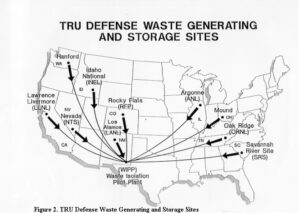
“To my astonishment, over the course of four full days, we worked through the multitude of issues and came to complete agreement. Something magical had happened. Thanks to the goodwill of the DOE and its contractor, the remarkable daily attendance and attentiveness of the NMED Secretary and the measured and well-informed way in which the various citizen groups made their points, we were able to find consensus and craft permit language that was acceptable to everyone.
“For me, as a former judge and mediator, the experience was thrilling. It was an experience of participatory democracy in action that made me proud of our fellow citizens and our government. Three aspects of the experience stand out. First, everyone in the room had taken responsibility for the way in which our nation’s only deep underground nuclear storage facility would be operated for the next 10 years. The citizen participants were not just making suggestions; they were assuming many of the attributes of decision makers. Second, all participants were advocating, compromising, and collaborating on behalf of what they saw as the public interest. These are the essential skills of democracy—the civic virtues so central to the Founders’ vision of what would make democracy work in America—and they require practice. Finally, over four days around a table, the citizens were able to take the measure of the DOE and NMED representatives. They came to realize, as I did, that these public servants, as well as the DOE contractor, were very well-informed, experienced, and intentioned. The government representatives had a similar experience of coming to appreciate the citizen questions and points of view. A government that relies on trust needs this kind of interaction to maintain that trust.
“It seems our democracy would be strengthened if we could extend the benefits of this kind of participatory structure to other areas of our legal and regulatory systems.”
“In Democracy in America, Alexis de Tocqueville made some of these points in reference to the jury trial in civil cases. He emphasized the importance of the civil jury trial as a free “public school” [https://contextus.org/Tocqueville,_Democracy_in_America_(1835),_Book_I,_Chapter_XVI_Causes_Mitigating_Tyranny_In_The_United_States_(Part_II).13?ven=Gutenberg&lang=en]  educating jurors in the democratic virtues and skills and teaching them to assume responsibility. In the same vein, every trial judge I know would attest to the importance of the jury experience for building confidence in the courts. After a trial, judges often hear words of gratitude from jurors who are deeply impressed by the legal process and are honored to have participated despite their initial dismay at being called to jury service. Sadly, the number of jury trials has diminished, particularly in federal court. Reversing that trend is a worthy goal, particularly for a branch of government that depends so heavily on public confidence.
educating jurors in the democratic virtues and skills and teaching them to assume responsibility. In the same vein, every trial judge I know would attest to the importance of the jury experience for building confidence in the courts. After a trial, judges often hear words of gratitude from jurors who are deeply impressed by the legal process and are honored to have participated despite their initial dismay at being called to jury service. Sadly, the number of jury trials has diminished, particularly in federal court. Reversing that trend is a worthy goal, particularly for a branch of government that depends so heavily on public confidence.
“As a final reflection: any persons involved as litigants will have an experience of the legal system. The experience can advance their sense of agency and participation, their ability to disagree civilly, and their trust in the courts. But how can these objectives be obtained when so many Americans cannot afford a lawyer? We can do so much better to provide understanding of and access to our justice system.”
The six New Mexico based non-governmental organizations were Citizens for Alternatives to Radioactive Dumping (CARD), Concerned Citizens for Nuclear Safety (CCNS), Conservation Voters New Mexico (CVNM), Nuclear Watch New Mexico, Southwest Alliance for a Safe Future (SAFE), and Southwest Research and Information Center (SRIC). The individual was Steve Zappe, a grandfather and former NMED WIPP Program Manager.
“A House of Dynamite” New Netflix Nuclear Catastrophe Film: Fiction, for Now
The reviews are rolling in for “A House of Dynamite,” which premiered in Europe earlier this month before coming to the U.S. on October 10th, with a full Netflix release scheduled for the 24th. Here’s the trailer, and see the schedule for Santa Fe theater showings here:
This Week! Santa Fe Theater Screenings for the Film “A House of Dynamite”
I attended one of these screenings last night, and I’ll let the professional critic reviews give the gist:
The Kathryn Bigelow thriller looks at what might happen if a ballistic missile were headed to the U.S. The director hopes the movie will start a conversation. New York Times: At Venice, ‘A House of Dynamite’ Is Scarier Than Most Horror Films
“The Netflix thriller captures from multiple perspectives the White House response to an unattributed missile launch headed for a major U.S. city in the harrowing 20 minutes until projected impact…”An unrelenting chokehold thriller so controlled, kinetic and unsettlingly immersive that you stagger out at the end of it wondering if the world will still be intact.” ‘A House of Dynamite’ Review: Idris Elba and Rebecca Ferguson in Kathryn Bigelow’s Precision-Tooled, Viscerally Unsettling Nail-Biter
“Told from the perspective of soldiers at a remote Alaskan missile base, staffers in the White House situation room, military officials at US Central Command (CENTCOM), and the president of the United States, the film weaves an overlapping timeline to show how the United States would respond to a missile attack…The film doesn’t want viewers to ask themselves how to thwart a nuclear attack on the United States. Rather, it wants the viewer to question the value of having nuclear weapons at all. ‘None of this makes sense,’ the President (Idris Elba) bemoans, ‘Making all these bombs and all these plans.'”
“A House of Dynamite is a terrifying examination of how terribly wrong things can go even with highly competent people in charge…But that’s also not necessarily the world we’re living in…The film shows why the worst can happen, even when competent, well-meaning people are trying to do the right thing.
But what if competence and decency are in short supply?” A House of Dynamite: Bigelow’s latest thriller shows why nuclear bombs are only part of the danger
This film left me reeling with tension and anxiety and exactly as the Times article titles it, is scarier than most horror films. Unlike ‘Oppenheimer,’ which largely glorified the invention of the atomic weapon, ‘A House of Dynamite’ makes it impossible to ignore the threat that nuclear weapons pose to our world. Working backwards from perspectives, and focused on how we can actually improve our odds of keeping this story a fictional one, here is what struck me most about this film:
-
-
Only one person decides what happens. But the real threat isn’t one reckless leader — it’s a reckless system. The final segment of the film features the “nuclear football” heavily, a briefcase containing launch procedures and options. In the United States, the president holds the sole and absolute authority to order the use of nuclear weapons. In the film, there are many voices in the President’s ear, but two primary perspectives quickly emerge after the defense fails and the ICBM remains inbound to its U.S. target: “One side advocates a retaliatory strike; the other, nothing. ‘It’s surrender or suicide,’ one adviser tells the President,” – thebulletin.org. The military aide carrying the nuclear football is tasked with providing the President the list of options if retaliation is chosen. An absolute must-read, Daniel Ellsberg’s book “The Doomsday Machine” breaks down many of the themes in the film with pure and terrifyingly honest account of Cold War-era nuclear strategy. In terms of launch authority, he describes how the inherent instability of the delegated command structure of the nuclear apparatus makes accidental or unwanted war an ever-present danger.
-
LANL tritium containers to head to Texas after last treatment
Four flanged tritium waste containers have been depressurized and transported to Los Alamos National Laboratory’s Weapons Engineering Tritium Facility, where they will be treated further before heading out-of-state for disposal.
By Alaina Mencinger amencinger@sfnewmexican.com | October 15, 2025 santafenewmexican.com
The containers’ final destination is Waste Control Specialists, a West Texas facility that handles the storage and disposal of radioactive waste.
The more than 1,300-acre facility in Andrews County is located on an approximately 14,000 acre property, which is sited on a thick clay formation which the company describes as “nearly impermeable.”
New documents have been added to the Los Alamos Legacy Cleanup Contract Electronic Public Reading Room.
All legacy cleanup documents required to be posted after April 30, 2018, are available on the site linked above.
For legacy cleanup documents that were posted prior to April 30, 2018, please visit the LANL electronic public reading room.
- Review, Notice of Completion of Off-Site Waste Shipments for Final Disposal, Activities 3.1.5, 3.1.8, and 3.3.4, Compliance Plan, Site Treatment Plan, Federal Facility Compliance Order Los Alamos National Laboratory [July 31, Aug. 21, 2025]
https://ext.em-la.doe.gov/GovFTPFiles/api/GetFiles/GetFile?fileName=EMID-703933_NMED_Review_STP_Shpmt_Jul_31_Aug_21_101525.pdf
Strong Political and Public Opposition Means Consolidated Interim Storage Facility (CISF) in NM “Impossible in the Near Future”
NEW UPDATE OCTOBER 10, 2025:
Holtec abandons plan to build New Mexico storage facility for spent nuclear fuel
This is excellent news. The Governor and state legislature (specifically Senator Jeff Steinborn and Representative McQueen) are to be commended for not allowing New Mexico to become the nation’s dumping ground for highly radioactive commercial spent fuel rods, especially when the Land of Enchantment has never had its own nuclear energy plant. Hard work from many New Mexicans made this happen.
So-called “interim” storage would never be interim when the federal government has failed for more than four decades to find a permanent repository for these lethal wastes. This also shows how hollow all the hype is about the claimed renaissance of nuclear power, when on the front end the industry can’t survive without taxpayer handouts, and on the back end can’t solve its radioactive waste problem.
Holtec’s quote that “New Mexico’s acquiescence is necessary” for interim storage to go forward is interesting, implying that we have to surrender as the nuclear colony that we are. Well, guess what, we didn’t surrender, and I predict you’ll see more of this. Moreover, whether you’re pro-nuclear or anti-nuclear, Holtec is an ethically questionable company, which is why the attorneys general of New Jersey and Massachusetts have sued it.
Adiós and good riddance, Holtec!
New York Times: Tax Break Scandal Leads to $5 Million Fine for N.J. Energy Company
SEE MORE:
Nuclear Weapons Issues & The Accelerating Arms Race: September 2025
Nuclear Weapons Update:
Putin has offered Trump a one-year extension of the numerical cap on strategic nuclear weapons in the new Strategic Arms Reduction Treaty which is 1,550 warheads (however, B52s are counted as one warhead while they can carry a dozen). New START expires in February 2026, which will be the first time the world will be without any nuclear arms control treaties since the mid-1970s. Trump has said it sounded like a good idea.
Note: New START ratification in 2010 provided the opportunity for Republicans in the Senate to attach the condition of $88 billion for nuclear weapons “modernization” that has since metastasized to ~$2 trillion. Nuclear disarmament must be prioritized as the ultimate goal over simply continued arms control.
A mere extension of the numerical cap would not involve Congressional ratification. The extension of New START’s numerical cap is in part to allow for a year in which to begin negotiations for a treaty replacement.
Plutonium Pit Production:
A draft plutonium pit production programmatic environmental impact statement is expected to be released next year in early 2026.
Accelerating Arms Race:
Is North Korea set to become world’s ‘fourth ICBM power’ after missile breakthrough? | Park Chan-kyong | South China Morning Post | September 11, 2025
A new era in North Korea’s missile programme may be dawning, as analysts warn of an imminent test launch of an intercontinental ballistic missile capable of carrying multiple warheads to the US mainland. Fresh from his appearance at China’s Victory Day parade in Beijing last week, North Korean leader Kim Jong-un personally oversaw the trial of a lighter, more robust solid-fuel ICBM engine, state media reported on Tuesday, touting the achievement as a “strategic” breakthrough.
Saudi Arabia signs a mutual defense pact with nuclear-armed Pakistan after Israel’s attack on Qatar | MUNIR AHMED & JON GAMBRELL | AP NEWS | September 18, 2025
DUBAI, United Arab Emirates (AP) — Pakistan’s defense minister says his nation’s nuclear program “will be made available” to Saudi Arabia if needed under the countries’ new defense pact, marking the first specific acknowledgment that Islamabad had put the kingdom under its nuclear umbrella.
Defense Minister Khawaja Mohammad Asif’s comments underline the importance of the pact struck this week between Pakistan and Saudi Arabia, which have had military ties for decades.
The move is seen by analysts as a signal to Israel, long believed to be the Middle East’s only nuclear-armed nation. It comes after Israel’s attack targeting Hamas leaders in Qatar last week killed six people and sparked new concerns among Gulf Arab nations about their safety as the Israel-Hamas war devastated the Gaza Strip and set the region on edge.
Russia suspected of helping North Korea build nuclear submarines, Seoul investigating | Park Chan-kyong | South China Morning Post | September 18, 2025
South Korea is investigating reports that Russia has supplied North Korea with nuclear submarine reactor modules, a move analysts see as highly plausible and one that could mark a breakthrough in Pyongyang’s decades-long push for a nuclear-powered navy… At the 8th Party Congress in January 2021, North Korea declared five core defence goals, including the development of nuclear-powered submarines and submarine-launched strategic nuclear weapons.
China Hardens Military Stance Against U.S. With Nuclear Weapons and Tough Talk | Brian Spegele | The Wall Street Journal| September 18, 2025
China played down its rapidly rising military might for years. In the past few weeks, Beijing has broadcast a steady drumbeat of firepower displays and muscular rhetoric, carrying an unmistakable warning for the U.S… Part of China’s confidence stems from the rapid growth of its firepower. The Pentagon estimates that China’s stockpile of nuclear warheads has more than doubled since 2020, alongside a growing array of options to launch those weapons, from mobile ground-launch systems to increasingly stealthy submarines.
Holtec Pulls Out of New Mexico Spent Nuclear Fuel Interim Storage Project
Holtec International has confirmed it is canceling plans to build a consolidated interim storage facility for spent nuclear fuel in southeastern New Mexico.
By Radwaste Solutions | October 9, 2025 ans.org
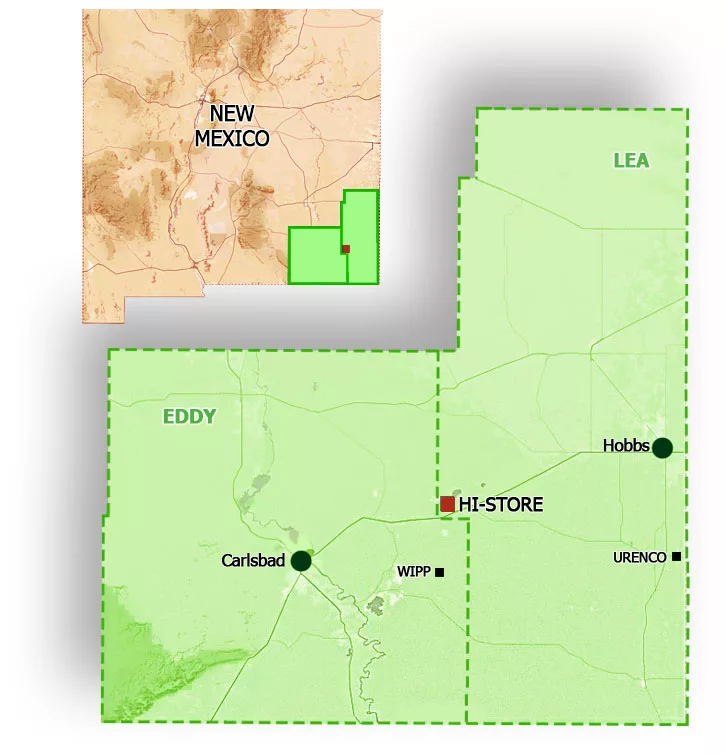
Named the HI-STORE CISF, the facility would have stored up to 10,000 canisters of commercial SNF on land owned by the Eddy-Lea Energy Alliance (ELEA) near the towns of Carlsbad and Hobbs.
“After discussions with our longtime partner in the HI-STORE project, the Eddy-Lea Energy Alliance, and due to the untenable path forward for used fuel storage in New Mexico, we mutually agreed upon canceling the agreement. This allows for ELEA to work to redevelop the property in a manner that fits their needs and allows Holtec to work with other states who are amenable to used fuel storage based on the recent DOE work on public education and outreach,” Holtec said in a statement (emphasis added).
Following the U.S. Supreme Court’s June ruling in NRC v. Texas, which found that petitioners did not have standing to challenge the Nuclear Regulatory Commission’s licensing of Interim Storage Partners’ CISF in Texas, Holtec said it expected to have its HI-STORE CISF license reinstated, allowing the company to move forward with the project. Holtec and ISP’s NRC licenses were vacated by the 5th Circuit Court of Appeals in a 2023 ruling.
Despite the court’s decision, New Mexico Gov. Michelle Lujan Grisham said she remained committed to preventing the HI-STORE CISF from being built. In 2023, New Mexico passed a bill barring the storage and disposal of high-level radioactive waste in New Mexico without the state’s explicit consent.
The AI Doomsday Machine Is Closer to Reality Than You Think
“Most troubling to experts on AI and nuclear weapons is that it’s getting harder and harder to keep decisions about targeting and escalation for nuclear weapons separate from decisions about conventional weapons.”
“There is no standing guidance, as far as we can tell, inside the Pentagon on whether and how AI should or should not be integrated into nuclear command and control and communications,” says Jon Wolfsthal, director of global risk at the Federation of American Scientists.
By Michael Hirsh | September 2, 2025 politico.com
Jacquelyn Schneider saw a disturbing pattern, and she didn’t know what to make of it.
Last year Schneider, director of the Hoover Wargaming and Crisis Simulation Initiative at Stanford University, began experimenting with war games that gave the latest generation of artificial intelligence the role of strategic decision-makers. In the games, five off-the-shelf large language models or LLMs — OpenAI’s GPT-3.5, GPT-4, and GPT-4-Base; Anthropic’s Claude 2; and Meta’s Llama-2 Chat — were confronted with fictional crisis situations that resembled Russia’s invasion of Ukraine or China’s threat to Taiwan.
Director Kathryn Bigelow is Sounding the Nuclear Alarm – Washington Post New Review
“A House of Dynamite” asks: How would the White House respond in the face of a nuclear attack?
By Max Boot | October 2, 2025 washingtonpost.com
VIEW MORE: “A House Of Dynamite” Q&A w/ Director Kathryn Bigelow, Tracy Letts, Jared Harris, And More At New York Film Fest —
80th Commemorations of Ban the Bomb – Trinity, Hiroshima & Nagasaki Remembrances in New Mexico
Exchange Monitor: DNFSB makes agency fixes, but needs members, GAO finds
The Defense Nuclear Facilities Safety Board (DNFSB) has tackled all but a few third-party recommendations to improve its culture over the past decade but suffers from a depleted board, according to a new report.
By ExchangeMonitor | September 5, 2025 santafenewmexican.com
Progress is tough with the five-person board probably…
China Hardens Military Stance Against U.S. With Nuclear Weapons and Tough Talk
Xi positions Beijing as powerful center of new global order as security forum convenes in capital
By Brian Spegele | September 18, 2025 wsj.com
BEIJING—China played down its rapidly rising military might for years. In the past few weeks, Beijing has broadcast a steady drumbeat of firepower displays and muscular rhetoric, carrying an unmistakable warning for the U.S….
Saudi Arabia signs a mutual defense pact with nuclear-armed Pakistan after Israel’s attack on Qatar
While not specifically discussing the bomb, the agreement states “any aggression against either country shall be considered an aggression against both,” according to statements issued by both Pakistan’s Foreign Affairs Ministry and the state-run Saudi Press Agency.
By MUNIR AHMED and JON GAMBRELL | September 18, 2025 apnews.com
ISLAMABAD (AP) — Saudi Arabia and nuclear-armed Pakistan have signed a mutual defense pact that defines any attack on either nation as an attack on both — a key accord in the wake of Israel’s strike on Qatar last week.
The kingdom has long had close economic, religious and security ties to Pakistan, including reportedly providing funding for Islamabad’s nuclear weapons program as it developed. Analysts — and Pakistani diplomats in at least one case — have suggested over the years that Saudi Arabia could be included under Islamabad’s nuclear umbrella, particularly as tensions have risen over Iran’s atomic program.
COMMUNITIES FOR CLEAN WATER: LANL Radioactive Tritium Venting Fails to Provide Transparency, Assurance, and Respect for Local Communities
FOR IMMEDIATE RELEASE: September 18, 2025
Santa Fe, NM — As NNSA and LANL continue operations to depressurize Flanged Tritium Waste Containers, Communities for Clean Water (CCW) calls out federal agencies for issuing vague assurances instead of transparent, verifiable data — and for dismissing community concerns with contradictory and incomplete statements that disregard what independent experts have found, the Department of Energy’s (DOE) own legal obligations, and the New Mexico Environment Department’s (NMED) acknowledgment that LANL has a long record of compliance failures.
“How can our communities be expected to trust LANL when they won’t give us access to the raw, real-time monitoring data – independently verified by the EPA,” asks Joni Arends with Concerned Citizens for Nuclear Safety. “Without this transparency, LANL is continuing a legacy of empty assurances, not accountability.”
Key Concerns:
-
Lack of real-time transparency – Since Friday (Sept. 12), the public has been forced to rely on NMED’s Facebook page for piecemeal updates. While LANL’s website provides very brief daily summaries, no near-real-time monitoring dashboard from DOE, NNSA, or LANL has been made available.
-
Vague assurances, not real information – NNSA’s updates claim “no tritium was released” while simultaneously telling the public to expect “very low levels of tritium” for subsequent venting. Without numbers, monitoring data, or detection thresholds, these phrases do not provide reassurance.
-
Weather risks – LANL has not disclosed thresholds for wind, rain, or humidity that would postpone venting. Communities watch weather shifts in real time but are left in the dark about how safety decisions are being made.
-
Dismissal of public health concerns – When asked for plain-language guidance that NMED stated LANL would provide, LANL responded only with “no offsite impact anticipated.” This is not meaningful and reassuring guidance, it’s a blanket dismissal that disregards independent expert findings and fails to meet DOE’s obligations to protect vulnerable populations.
-
Ignoring daily lifeways – Avoiding Pueblo Feast Days is not enough. This is harvest season, when outdoor cultural events, youth programs, and farming are in full swing. LANL’s scheduling continues to disregard these realities.
Unanswered Questions
Independent experts and community advocates have raised critical unanswered questions:
-
Unclear “depressurization” – LANL said “no internal pressure was found” in a container, but also claimed it was “depressurized.” If no pressure existed, what was released?
-
Unanswered helium questions – NMED stated helium was released, but LANL has not explained its origin. Was it introduced at sealing of the outer container, or a decay product of tritium?
-
Monitoring limits undisclosed – LANL has not disclosed the detection limits of its monitoring equipment. Readings “indistinguishable from zero” could still mask releases.
DOE NNSA Gives Misleading Statements on Native America Calling
On a recent Native America Calling program, DOE NNSA’s Los Alamos Field Office Deputy Director Pat Moss compared LANL venting to global natural tritium stocks. Independent expert Dr. Arjun Makhijani pointed out this comparison as misleading: “The problem is not global background, but local contamination. If venting occurs in rain and calm winds, local rainfall could exceed U.S. drinking water standards by hundreds to thousands of times.”
In their most recent public meeting, LANL admitted that infants could receive three times the radiation dose as adults. During the interview, Dr. Makhijani pressed this point – if adults are modeled at 6 mrem, that means infants could be at 18 mrem, nearly double the EPA’s 10 mrem compliance limit. Instead of addressing this directly, Mr. Moss provided a stock line, “We will be compliant with the regulatorily imposed release threshold and will be doing the calculations per the regulation.”
That is exactly the problem – hiding behind regulatory caps while ignoring clear evidence that infants, our most vulnerable, face exposures above legal limits.
DOE NNSA also pointed to the Defense Nuclear Facilities Safety Board (DNFSB) – an independent federal oversight body created by Congress – as if it had declared the tritium venting operation as “fully protective of the public”. That is misleading. First, the DNFSB has been operating without a quorum for months, limiting its ability to issue independent recommendations. Second, what the Board staff said in its July 2025 presentation was that the overall nuclear safety risk to the public is low if DOE’s proposed controls are followed. The DNFSB has also flagged ongoing safety concerns at LANL including deficiencies in Area G’s safety analysis and risk to workers.
First of four containers of tritium waste at LANL has been vented
The first of four flanged tritium waste containers awaiting removal from Los Alamos National Laboratory has been vented, the New Mexico Environment Department announced Tuesday afternoon.
By Alaina Mencinger amencinger@sfnewmexican.com | September 16, 2025 santafenewmexican.com
The container can now be moved for treatment at LANL and then, eventually, to an off-site disposal area.
No internal pressure was found in the first container, according to the National Nuclear Security Administration, suggesting the inner containers in the flanged tritium waste container hadn’t leaked. Air monitoring did not show an increase of tritium beyond background levels, the federal agency wrote.
No tritium emissions were released, the Environment Department wrote in its Tuesday post on X, formerly Twitter. Both the state agency and the U.S. Environmental Protection Agency are monitoring the process.
The depressurization of the containers is set to continue at 7 a.m. Wednesday, although the NNSA noted the schedule is subject to change due to weather. The four containers will be vented one at a time over an estimated two-week period.
*The featured image differs from the article photo due to usage rights.
New Mexicans Can Save the DNFSB; Contact Our Senators Today
From our friends at Concerned Citizens for Nuclear Safety:
The independent Defense Nuclear Facilities Safety Board has been dwindling from a five-member board to one member and may disappear if we, the People, do not raise our voices to support its essential nuclear safety work. The Safety Board needs at least two new members. And that needs to get done by Saturday, October 18th. https://www.dnfsb.gov/about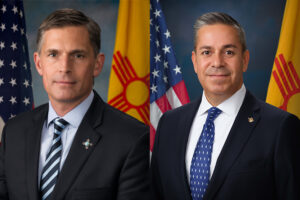
New Mexico U.S. Senators Heinrich and Lujan have key roles to play to ensure the Safety Board’s work continues unimpeded. https://www.heinrich.senate.gov/ and https://www.lujan.senate.gov/ Our voices of support are essential to ensure communities continue to receive the essential services of the Safety Board and its staff.
Right now members of the Safety Board’s staff are monitoring the venting of radioactive tritium from Area G at Los Alamos National Laboratory (LANL). Their expertise in the field of nuclear safety and their demonstrated competence and knowledge relevant to their independent investigative and oversight functions are an essential part of the process. They will be part of the follow-up once the venting of the four flanged tritium waste containers is completed. https://tewawomenunited.org/?s=tritium, https://www.ccwnewmexico.org/tritium, https://nuclearactive.org/
Not only does the Safety Board have staff at LANL, but also at Sandia National Laboratories in Albuquerque and at the Waste Isolation Pilot Plant, the burial site for plutonium contaminated nuclear weapons waste, near Carlsbad. https://ananuclear.org/facilities/
Russia suspected of helping North Korea build nuclear submarines, Seoul investigating
Analysts said such a technology transfer was plausible given Pyongyang’s support for Russia’s ongoing war in Ukraine
By Park Chan-kyong | September 18, 2025 scmp.com
South Korea is investigating reports that Russia has supplied North Korea with nuclear submarine reactor modules, a move analysts see as highly plausible and one that could mark a breakthrough in Pyongyang’s decades-long push for a nuclear powered navy…
Holy See tells nations at UN to end threat of nuclear weapons, even as deterrence
Amid a global arms race, ending the threat of nuclear war — and even the testing of nuclear weapons — is imperative, said the Holy See’s diplomat to the United Nations.
By Gina Christian, OSV News | September 8, 2025 catholicreview.org
Archbishop Gabriele G. Caccia, the Holy See’s U.N. permanent observer, shared his thoughts in a statement he delivered Sept. 4 at U.N. headquarters in New York, during the General Assembly High-level Plenary Meeting to Commemorate and Promote the International Day Against Nuclear Tests, observed that same day.
“The pursuit of a world free of nuclear weapons is not only a matter of strategic and vital necessity, but also a profound moral responsibility,” Archbishop Caccia in his remarks.
He pointed to the introduction of nuclear weapons — first detonated by the U.S. in 1945 over the Japanese cities of Hiroshima and Nagasaki, killing an estimated 110,000 to 210,000 people, during World War II — as unveiling to the world “an unprecedented destructive force.”
Historic peace vigil partially dismantled after Trump orders: ‘Take it down’
Law enforcement officials on Sunday removed parts of the White House Peace Vigil, which has sat just outside the White House for decades.
By Marissa J. Lang, The Washington Post | September 8, 2025 washingtonpost.com
But over the past week, it faced a new threat as Trump turned his attention to the vigil and federal officers picked apart the structure that shields protesters and their signs from the elements. The vigil is maintained by a rotating cast of volunteers who keep the protest going 24 hours a day, seven days a week.
On Friday, Brian Glenn, a correspondent for the conservative network Real America’s Voice, told the president during a gathering with reporters that there was “a blue tent” in front of the White House that was “an eyesore.” Trump initially said he was unaware of it, but he then quickly ordered its removal.
Photo by Sig. Chiocciola, Creative Commons: The White House Peace Vigil on March 30, 2025 staffed by volunteers, Philipos Melaku-Bello (left) and Joe Brown (right).
For 80 years, nuclear weapons have been the unused threat
Amid a global arms race, ending the threat of nuclear war — and even the testing of nuclear weapons — is imperative, said the Holy See’s diplomat to the United Nations.
By Matt Kelly, mkelly@virginia.edu, September 3, 2025 news.virginia.edu
In the 80 years since World War II, which ended with the use of two atomic bombs, the world has maintained a tenuous relationship with nuclear weapons.
Philip Potter, professor of public policy at the University of Virginia’s Frank Batten School of Leadership and Public Policy and director of the National Security Data and Policy Institute, said he worries about the current delicate nuclear balance.
“Eighty years of non-use is the product of both good diplomacy and a recognition of the potential consequences,” Potter said. “The fearsome power of nuclear weapons causes countries pause before they use them, but a great deal of work has also gone into nonproliferation and the management of crises to keep them away from the nuclear brink. In some ways the dynamics of the Cold War made managing the potential for nuclear confrontation easier.”
It’s a very different strategic scenario now, where there are nine nuclear powers and less capacity to manage them.
A House of Dynamite review – Kathryn Bigelow’s nuclear endgame thriller is a terrifying, white-knuckle comeback
★★★★★: Amid a global arms race, ending the threat of nuclear war — and even the testing of nuclear weapons — is imperative, said the Holy See’s diplomat to the United Nations.
By Peter Bradshaw, The Guardian | September 2, 2025 theguardian.com
Kathryn Bigelow has reopened the subject that we all tacitly agree not to discuss or imagine, in the movies or anywhere else: the subject of an actual nuclear strike. It’s the subject which tests narrative forms and thinkability levels.
Maybe this is why we prefer to see it as something for absurdism and satire – a way of not staring into the sun – to remember Kubrick’s (brilliant) black comedy Dr Strangelove, with no fighting in the war room etc, rather than Lumet’s deadly serious Fail Safe.
NEW UPDATED INFORMATION: MUST READ!!! PROVIDED BY: THE TULAROSA BASIN DOWNWINDERS CONSORTIUM — WHAT TO KNOW ABOUT THE COMPENSATION AVAILABLE THROUGH THE RECA PROGRAM
 SEEKING JUSTICE FOR THE UNKNOWING, UNWILLING, AND UNCOMPENSATED INNOCENT VICTIMS OF THE JULY 16, 1945 TRINITY BOMB
SEEKING JUSTICE FOR THE UNKNOWING, UNWILLING, AND UNCOMPENSATED INNOCENT VICTIMS OF THE JULY 16, 1945 TRINITY BOMB
A Message From Tina
The DOJ is now accepting claims and has provided guidance on the claims process. They will only accept mail in claims at this time. They have indicated that an electronic process will be implemented by the end of the year. For more information you can go to the DOJ website at: https://www.justice.gov/civil/reca
Please be careful when supplying documentation via the regular mail. If you decide to file this way you may want to send the documents via certified mail. Once the electronic process begins it will be easier to assure that your documents are safe and being handled properly with little to no risk.
There are organizations/attorneys who are soliciting people to file claims with them. They use all sorts of tactics to get people to believe their services are necessary and often guarantee results. Please be aware that if an entity files a RECA claim on your behalf they will charge a fee. They receive the check, deduct their fee, and then pay you.
There will be Radiation Exposure Screening and Education Program (RESEP) clinics in our State that will assist people with claims. The claims process is not necessarily difficult and we’ll be training people to assist with the application process when needed. We’ll also be looking to government agencies to cooperate in locating necessary documentation for the application process. PLEASE DO NOT TURN OVER YOUR RECORDS TO ANYONE THAT YOU ARE NOT SURE ABOUT. You can remain updated about the application process, the training we’re going to organize or other questions you might have by going to our website at: www.trinitydownwinders.com
What does the expansion of RECA do?
The Radiation Exposure Compensation Act program has been re-authorized and extended through Dec 31, 2028 but the application deadline is Dec 31, 2027.
Downwinders who lived in New Mexico for one year from 1944 through Nov. 1962 will be eligible and family members can apply on behalf of a deceased loved one.
There are 19 cancers that are covered by the expansion.
The cancers covered are:
Leukemia (except chronic lymphocytic Leukemia); Lymphoma (other than Hodgkins); Primary cancers of the Thyroid, Breast, Esophagus, Stomach, Pharynx, Small Intestine, Pancreas, Bile Duct, Gall Bladder, Salivary Gland, Urinary, Bladder, Brain, Colon, Ovary, Liver (unless cirrhosis/Hepatitis B present), and Lung.
Compensation for downwinders will be increased to $100,000 and Downwind coverage is expanded to cover the entire state of New Mexico
Coverage for uranium miners and workers would be expanded:
To workers through Dec 31, 1990
To core drillers and remediation workers
To cover additional kidney disease for uranium miners
To allow for combined work histories
What does this mean?
This is the biggest expansion of RECA in the history of the program and it wouldn’t have happened without the tireless advocacy of Senator Lujan, Representative Leger Fernandez, Senator Heinrich, Representative Stansbury and Representative Vasquez.
While it is a significant win, it still leaves out many impacted communities, including the parts of Nevada and Arizona not previously covered, along with Montana, Colorado, and Guam.
The 2-year extension will likely not be adequate time to get all the people in New Mexico who qualify enrolled and this bill does not have health care benefits for Downwinders. We will continue to fight for a longer extension and the addition of healthcare benefits. This is an important first step because it reinstates the program keeping it operational so people can continue to apply for benefits and get the help they need, and it shows that expansion is possible and provides an opportunity to address concerns raised about the cost of expansion.
We are grateful for the win and consider this a big step in the right direction. We look forward to the day that claims are successfully filed and the people of New Mexico begin to see the benefit of the expansion of RECA. Stay tuned for updates and many thanks to all of you who have stood together with us in this fight!Continue reading
Threads cast and crew suffered ‘trauma’ after film
The creators of a documentary about the making of nuclear apocalypse film Threads say many of the cast and crew had “suffered with the trauma of being involved”.
By Chloe Aslett, BBC News | August 29, 2025 bbc.com
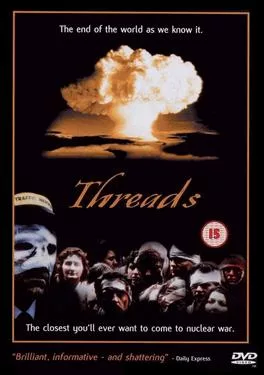
Threads, which tracks the aftermath of a nuclear attack on Sheffield, was first screened on the BBC on 23 September 1984 and fast became a cult classic.
Now filmmakers Craig Ian Mann and Rob Nevitt have spoken to more than 50 people involved in the making of the film for their documentary Survivors: The Spectre of Threads.
Mr Mann said: “[Threads] is a film that more than any I can think of everybody who worked on it it has impacted their lives in some way or another. Sometimes very positively and sometimes somewhat negatively.”
“There are people who have suffered the trauma of having been in and seen Threads,” he told BBC Radio Sheffield.
“There’s one participant in the documentary who has become a Doomsday prepper.
“He lives in America and has a bunker and canned food and weapons and he is prepared for the end of the world at any moment and that’s because he was in and saw Threads.”
Trump wants to stop nuclear proliferation. STRATCOM could play a major role.
Henry Sokolski, executive director of the Nonproliferation Policy Education Center, argues that the US needs to carry a new “big stick.”
By Henry Sokolski, Breaking Defense | August 29, 2025 breakingdefense.com

Last Monday, President Donald Trump pronounced, “We can’t let nuclear weapons proliferate.” Two days later, Secretary of State Rubio met with International Atomic Energy Agency (IAEA) Director General Rafael Mariano Grossi and recommitted the United States to preventing the proliferation of nuclear weapons.
After America’s bombing of Iran’s suspect nuclear sites, there’s cause to take these commitments seriously, but only if it’s more than a one off.
Emphasizing consistency is essential. Historically, America has backed nonproliferation in fits and starts. Under Presidents Gerald Ford and Jimmy Carter, the United States opposed the recycling of plutonium for commercial use because it was too close to bombmaking. It blocked reprocessing activities in South Korea, Taiwan, and Brazil.
Full Event Recording: Press Conference & Commemoration – Hiroshima Atomic Bombing 80th Anniversary Event (August 6, 2025)
DOE and LANL Silence Public and Tribal Community Member Voices While Pushing Radioactive Tritium Venting
For Immediate Release: August 22, 2025
Contact: Kalyn Mae Finnell, Coordinator, Communities for Clean Water
Los Alamos, NM — This week’s so-called “public meeting” regarding Los Alamos National Laboratory’s (LANL) proposal to vent radioactive tritium emphasized the persistence of the Department of Energy (DOE) National Nuclear Security Administration (NNSA) and LANL to disregard communities concerns while prioritizing nuclear weapons projects.
In-person attendees were allotted three minutes to make statements about their concerns. Over 100 online participants—including many Pueblo community members who could not attend the meeting in Los Alamos in-person due to health, distance, or work commitments—were surprised to find that they were not permitted to provide verbal comments and restricted to submitting only one emailed question. DOE/NNSA and LANL gave no prior notice of this change. “This is not meaningful participation. It is exclusion,” said Marissa Naranjo with Honor Our Pueblo Existence.
The stakes are at an all time high. Tritium — produced in the development of nuclear weapons as triated water — is a radioactive isotope of hydrogen that travels quickly through air, water, soil, and food. When exposed to the human body, it can cause cancer, genetic damage, cross the placental barrier, and cause health impacts across generations. DOE/NNSA insists venting is the sole safe option moving forward—however, their own “independent” technical review revealed significant issues with this assertion. The review acknowledged significant deficiencies: the absence of real-time monitoring, a lack of container-specific risk analysis, and insufficient examination of safer alternatives such as filtration or storage until decay occurs. Community members are also asking: How can a review be independent when DOE managed the process, designated the reviewer, and defined the scope? This does not represent independence—it signifies a conflict of interest.
“This is the same broken pattern we’ve seen for decades,” said Joni Arends with Concerned Citizens for Nuclear Safety. “LANL creates the danger, then tells us radioactive releases are our only option. They force the public and Pueblo communities into what NMED itself has called ‘untenable situations.'”
Local community leaders also noted that DOE has consistently overlooked reports by Tewa Women United, Communities for Clean Water, and scientific experts regarding the risks associated with tritium. These technical reports documented exposure pathways unique to Pueblo communities, including impacts on women, children, and traditional farming lifeways. By sidelining this research, DOE has once again dismissed Indigenous voices and lived experiences—further diminishing trust and perpetuating environmental racism.
“If our gathering here today is to mean anything, it must mean that in fidelity to all those whose lives were destroyed or savagely damaged on August 6, 80 years ago, we refuse to live in such a world of nuclear proliferation and risk-taking. We will resist, we will organize, we will pray, we will not cease, until the world’s nuclear arsenals have been destroyed.”
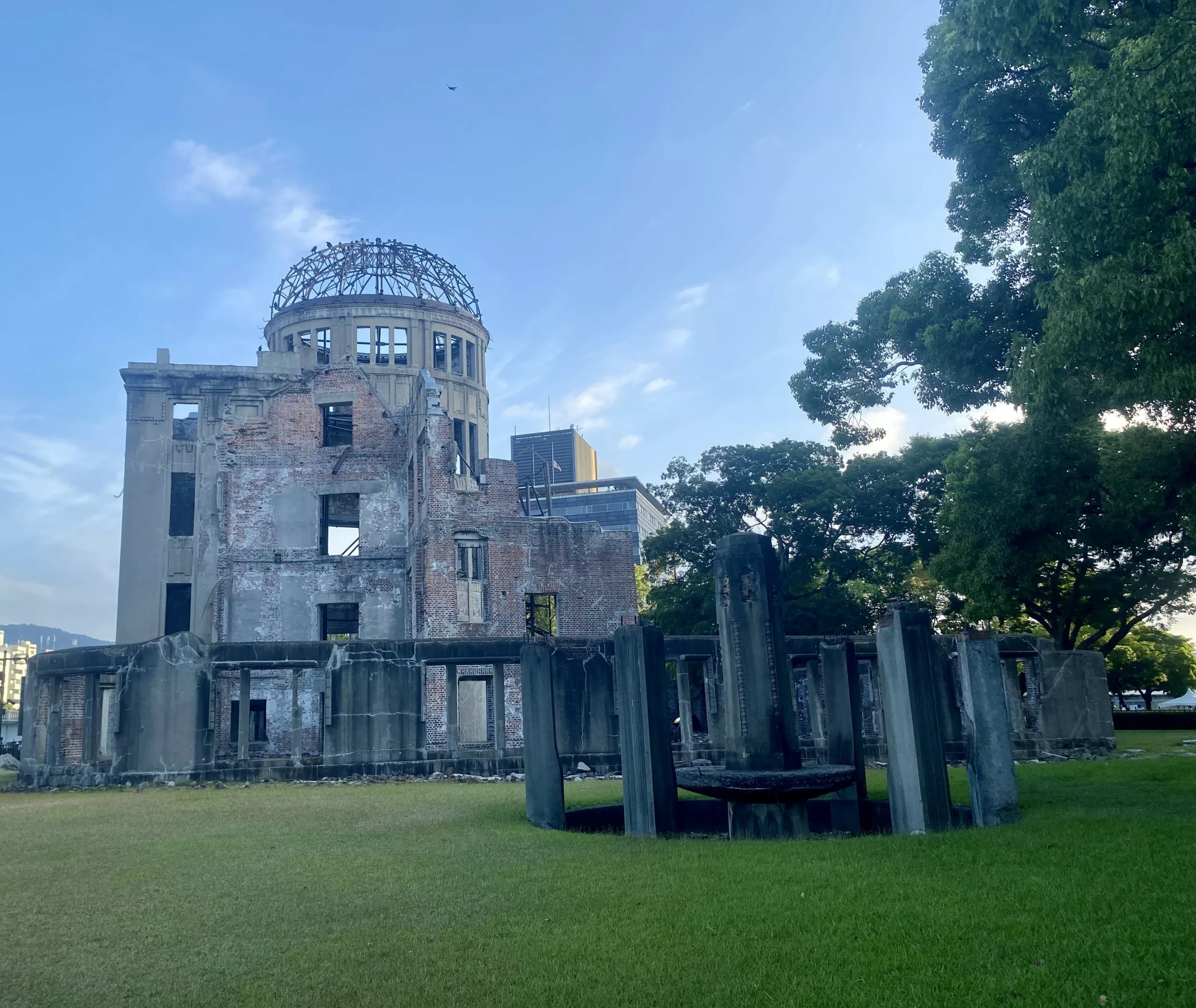 — Cardinal Bob McElroy of Washington, DC, August 5, 2025, at the World Peace Memorial Cathedral in Hiroshima, Japan.
— Cardinal Bob McElroy of Washington, DC, August 5, 2025, at the World Peace Memorial Cathedral in Hiroshima, Japan.
Nuclear Weapons Issues & The Accelerating Arms Race: August 2025
Nuclear Weapons Budget:
• NNSA’s detailed budget was finally released, the latest ever. $2.8 billion is for “plutonium modernization” (i.e., pit production) projects, of which $1.8 billion for LANL. The Lab’s nuclear weapons programs are having a full billion dollars added to them for FY 2026 (which begins this October 1) on top of the $4 billion they already have. The Lab’s $6 billion FY 2026 budget is now 84% nuclear weapons. Meanwhile cleanup and nonproliferation programs are being cut by 5% and renewable energy research completely eliminated.
• Over for the next four years the “reconciliation” bill adds another $750 million for plutonium modernization (mostly at SRS) and $1 billion “to accelerate the construction of National Nuclear Security Administration facilities.”Continue reading
August 6th U.S. Atomic Bombing of Hiroshima Commemoration in Santa Fe
Eighty Years Later, it is Beyond Time to Get Rid of Nuclear Weapons.
Last week on August 6, 2025, the 80th anniversary of the U.S. atomic bombing of Hiroshima, community members gathered at the Center for Progress and Justice on Cerrillos Road in Santa Fe to honor the solemn occasion and demand an end to the ongoing nuclear weapons harm and destruction that first began here in New Mexico.
The event was organized by Nuclear Watch New Mexico in collaboration with the Up in Arms campaign by Ben Cohen, co-founder of Ben & Jerry's, to reduce military and nuclear weapons spending, the International Campaign to Abolish Nuclear Weapons (winners of the 2017 Nobel Peace Prize), the Santa Fe Archdiocese, the Back from the Brink New Mexico Hub, and the Tularosa Basin Downwinders Consortium. It centered around a massive public art installation from Up in Arms of a towering cubic structure framed by messages on top of images of $100 bills. The structure is sized to literally hold $100 billion of those bills, respresenting what the U.S. spends every year on nuclear weapons (the total cost of nuclear weapons "modernization" is up to $2 trillion). Visible to thousands of drivers each day, the large installation pressures viewers to reckon with the scale of this cost and to imagine what else those resources could make possible. A prominent message on one of the four sides quotes the president in saying, "'We don't need to build brand new ones. We already have so many,' — Donald Trump" and below it, "His budget includes a down payment of $2 trillion of nuclear weapons." Another side reads, "The current U.S. nuclear arsenal is the equivalent of 50,00 Hiroshima explosions. One nuclear bomb killed over 100,000 people in Hiroshima."
The installation will remain on display for the foreseeable future, GO SEE IT NOW! 1420 Cerrillos Road, Santa Fe, NM 87505.
During the event, speakers Archbishop John C. Wester (by video from Japan), Tina Cordova of the Tularosa Basin Downwinders, Sophie Stroud from Nuclear Watch New Mexico, Anne Pierce-Jones from Back from the Brink, Ben Cohen representing Up in Arms, and Seth Shelden from ICAN all gave concrete steps and actions that concerned citizens can take to help promote a safer world. The speakers were presented by former Santa Fe County Commissioner Anna Hansen, who stated, “Disarmament is the only answer. I have spent my life working to end the nuclear cycle, as many have, and most of us in this room have never known a world without nuclear weapons.”
Speakers drew connections between the devastation in Hiroshima and the continued production of plutonium pits at LANL. At Los Alamos National Lab alone, five billion dollars will be poured into nuclear weapons programs in Fiscal Year 2026, starting this October. One billion dollars was added to last year’s budget, which includes a 42% increase for nuclear warheads. At the same time, nonproliferation programs are being cut, the science budget sliced in half, and funds for renewable energy zeroed out and gone completely. The push for "modernization" of the US’s nuclear arsenal is directly linked to plutonium pit production at Los Alamos, specifically expanding plutonium pit production. LANL will receive $1.7 billion in direct costs for pit production in 2026. Add in the indirect costs, and it’s roughly double that. All of this future pit production is exorbitantly expensive, yet the National Nuclear Security Administration still has no credible cost estimate for these plans.
WHAT YOU NEED TO KNOW: New plutonium pits are not needed to maintain the existing stockpile - it is all for future, new designs. And these new weapons cannot be tested because of the testing moratorium - or conversely could pressure the US to resume testing. In 2006, independent experts concluded that existing plutonium pits last at least a century. Their average age now is about 43 years. A new pit aging study is expected this year. Expansion plans should stop until then.
The U.S.’s $2 trillion “modernization” program is a plan to keep nuclear weapons forever. It is claimed to be essential for “deterrence.” But deterrence relies upon the flawed assumption that all actors will behave rationally, and that accidents or miscalculations will never occur. History says otherwise. Moreover, the U.S. and Russia have always rejected minimal deterrence in favor of nuclear warfighting capabilities that could end civilization overnight. That is why we have 1,000s of nuclear weapons and are funneling billions of dollars into mass death machines, even though everybody knows that a nuclear war must never be fought and can never be won.
See more on the myth of deterrance here:
Deterrence is the Threat: NukeWatch Presentation for Western New Mexico University – April 1, 2025
Media coverage of the event includes the Santa Fe New Mexican articles below:
New Mexico reckons with its role in Japan’s atomic devastation on 80th anniversary of Hiroshima
‘End the nuclear cycle’: Antinuclear New Mexicans speak out 80 years after Hiroshima bombing
View the full event recording - Click HERE or below:
Nuclear News Archive – 2022
Four powerful players want a nuclear waste solution. What’s stopping them?
“The nuclear industry’s position in support of spent fuel legislation is tempered by a combination of reality and priorities. While the industry regularly testifies in favor of finding a long-term solution to the spent fuel problem, the reality is that state legislative prohibitions on the construction of new nuclear reactors are meaningless, given that no new reactors are planned in the foreseeable future. It is uneconomic and/or not politically viable to build a new reactor in the United States—even one of the small modular reactors under development.”
BY: JDAVID KLAUS | thebulletin.org
The 92-page platform adopted at the Democratic National Convention does not include a single sentence on the issue of how to manage the more than 80,000 tons of spent nuclear fuel sitting at 70 sites in communities across the country. The Republicans adjourned without adopting any new platform for 2020, leaving their 2016 platform in place—but it also did not address the nuclear waste issue.
Ironically, political interest in addressing the spent fuel issue is decreasing at a time when the number of closed nuclear plants in the United States is increasing—and it is common practice to level the plant and leave the spent fuel behind. If the issue had been as significant a political priority today as it was in the past, it would have been included in one or both of the platforms.
In its 2004 and 2008 platforms, the Democratic Party committed to “protect Nevada and its communities from the high-level nuclear waste dump at Yucca Mountain, which has not been proven to be safe by sound science.” Republicans, in their 2012 platform, focused on how “[t]he federal government’s failure to address the storage and disposal of spent nuclear fuel has left huge bills for States and taxpayers.”
Trump Administration Orders Assessment on Bolstering Nuclear Warheads as Talks With Russia Stall
“U.S. diplomats are trying to play hardball with Russia in negotiations over whether to extend New START.
“It’s very stupid,” added a former GOP arms control official who declined to be identified because he still advises the government. “It makes absolutely no sense to threaten to upload. It becomes a valid leveraging point only if the other side can’t do it. The Russians can do it, too.” ”
BY: DANIEL LIPPMAN, BRYAN BENDER & LARA SELIGMAN | politico.com
The Trump administration has asked the military to assess how quickly it could pull nuclear weapons out of storage and load them onto bombers and submarines if an arms control treaty with Russia is allowed to expire in February, according to three people familiar with the discussions.
The request to U.S. Strategic Command in Nebraska is part of a strategy to pressure Moscow into renegotiating the New Strategic Arms Reduction Treaty before the U.S. presidential election, the people said.
In making the request, the Trump administration wants to underscore that it is serious about letting the treaty lapse if Russia fails to meet U.S. demands. The negotiating team is leery that Russia is dragging out the talks in the hope that Joe Biden — who has pledged to extend New START under what Moscow believes will be more favorable terms than what this White House is offering — wins the election.
“It’s a clear signal that the costs for not negotiating before the election are going to go up,” said one of the people, who requested anonymity to relay sensitive discussions. The Trump administration is “trying to create an incentive, and it’s a real incentive, for the Russians to sit down and actually negotiate.”
The request for the assessment came in the last two weeks from a group of officials at the National Security Council and State, Defense and Energy departments that’s supporting Ambassador Marshall Billingslea in negotiations with Moscow to try to replace New START before it runs out in February.
Continue reading
U.S. Department of Energy Confirms 11.5 Metric Tons of Plutonium Stored at Savannah River Site; SRS Watch Supports DOE Assertion that Plutonium Storage “Not Posing any Additional Risk to Communities Surrounding the SRS”
https://srswatch.org/wp-content/uploads/2020/09/SRSW-news-on-SRS-plutonium-inventory-Sep-29-2020.pdf
Kaysville Withdraws From Nuclear Power Project
“We just don’t want to take on the risk of being in the project at this point.” – Councilman Andre Lortz
By: NATHAN BROWN | postregister.com
One more Utah city has withdrawn from a project to build 12 small nuclear reactors west of Idaho Falls.
The Kaysville City Council voted unanimously a week-and-a-half ago to withdraw from the Carbon Free Power Project, although the resolution left the door open for the city to hold a special meeting to rejoin the project if anything changes.
“Kaysville City is still interested in being involved with the UAMPS project,” Mayor Katie Witt said in an email. “However, we did withdraw on Sept. 17 for the time being. We would like to participate if our concerns are mitigated.”
Councilman Andre Lortz said he believes in the project, calling it “an innovative project that’s going to be very important in the future” that could fill gaps wind and solar power can’t.
“We’d love to be in this project,” he said. “We just don’t want to take on the risk of being in the project at this point.”
Lehi and Logan have also withdrawn from the Carbon Free Power Project over the past month-and-a-half, citing potential risks to local taxpayers if costs go up. There are still more than 30 cities and power systems, including Idaho Falls, that are part of it, and the members have until Oct. 31 to recommit to the project’s next phase by approving the new budget. Utah Associated Municipal Power Systems is waiting for the U.S. Department of Energy to give final approval to a promised $1.4 billion to support the project.
Portland-based NuScale Power is designing the small modular reactors, which will produce 720 megawatts and which UAMPS plans to build at the DOE desert site west of Idaho Falls. The plant is expected to be operational in 2029.
WORLD NUCLEAR INDUSTRY LOSES GROUND TO CHEAP RENEWABLES AS CANADA CONSIDERS SMALL MODULAR REACTORS
“The world nuclear industry “continues to be in stasis,” with power plants shutting down at a faster rate in western Europe and the United States, the number of operating reactor units at a 30-year low, and the few new construction projects running into “catastrophic cost overruns and schedule slippages,” according to the latest edition of the annual World Nuclear Industry Status Report (WNISR), released last week.”
By: MITCHELL BEER / theenergymix.com
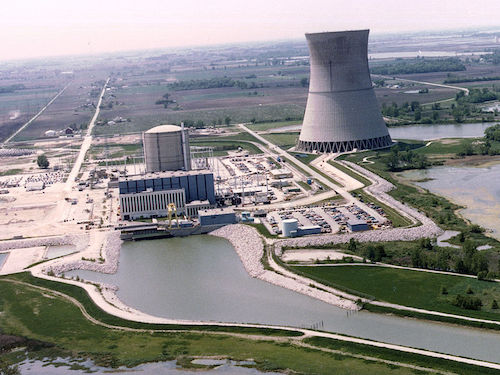
“Some 408 nuclear reactors were in operation in 31 countries as of July 2020, a decline of nine units from mid-2019 and 30 fewer than the 2002 peak of 438,” Reuters writes, citing the report. “The slow pace of new projects coming onstream also increased the overall age of the global fleet to around 31 years.”
“Overall, in terms of the cost of power, new nuclear is clearly losing to wind and photovoltaics,” with the two renewable technologies now receiving about 10 times the investment, write Jungmin Kang, former chair of South Korea’s Nuclear Safety and Security Commission, South Korea, and Princeton University Professor Emeritus Frank von Hippel, in their foreword to the 361-page report. That meant new nuclear projects “were struggling to secure finance amid competition from renewables, with reported investment decisions for the construction of new nuclear plants at around US$31 billion in 2019,” Reuters says.
Biden would push for less US reliance on nukes for defense
“If future budgets reverse the choices we’ve made, and pour additional money into a nuclear buildup, it hearkens back to the Cold War and will do nothing to increase the day-to-day security of the United States or our allies,” Biden said in a Jan. 11, 2017, speech at the Carnegie Endowment for International Peace.
By: ROBERT BURNS | apnews.com
The State of New Mexico Objects to Nuclear Fuel Storage Plan
“New Mexico is strongly objecting to federal nuclear regulators’ preliminary recommendation that a license be granted to build a multibillion-dollar storage facility for spent nuclear fuel from commercial power plants around the U.S.”
BY: SUSAN MONTOYA BRYAN / ASSOCIATED PRESS abqjournal.com
State officials, in a letter submitted Tuesday to the Nuclear Regulatory Commission, said that the site is geologically unsuitable and that technical analysis has been inadequate. They also say regulators have failed to consider environmental justice concerns and have therefore fallen short of requirements spelled out by federal environmental laws.
The letter also reiterates the state’s concerns that the storage facility would become a permanent dumping ground for the spent fuel, as the federal government has no permanent plan for dealing with the waste that has been piling up at nuclear power plants.
The officials pointed to a legacy of contamination in New Mexico that includes uranium mining and milling and decades of nuclear research and bomb-making at national laboratories, saying minority and low-income populations already have suffered disproportionate health and environmental effects as a result.
Given the concerns, state officials wrote that a draft environmental review of the project “fails to demonstrate that residents of New Mexico, including vulnerable populations, will be adequately protected from exposure to the radioactive and toxic contaminants that could be released to air and water by the proposed action.”
A group of Democratic state lawmakers also raised concerns.
Elected leaders in southeastern New Mexico support the project, saying it would bring jobs and revenue to the region and provide a temporary option for dealing with the spent fuel.
The WNISR2020 Assesses Challenges Nuclear Power is Facing in the Age of COVID‑19
“New renewable resources like wind and solar power increased by 184 gigawatts last year, while nuclear power grew by only 2.4 gigawatts. As a result — for the first time in history — renewable sources (excluding hydropower) generated more power than nuclear plants in 2019.”
“Nuclear energy has become irrelevant in the electricity generating technology market,” said Mycle Schneider, the coordinator of the report. “At the same time, COVID-19 puts additional stress on the sector.”
September 24, 2020 | worldnuclearreport.com
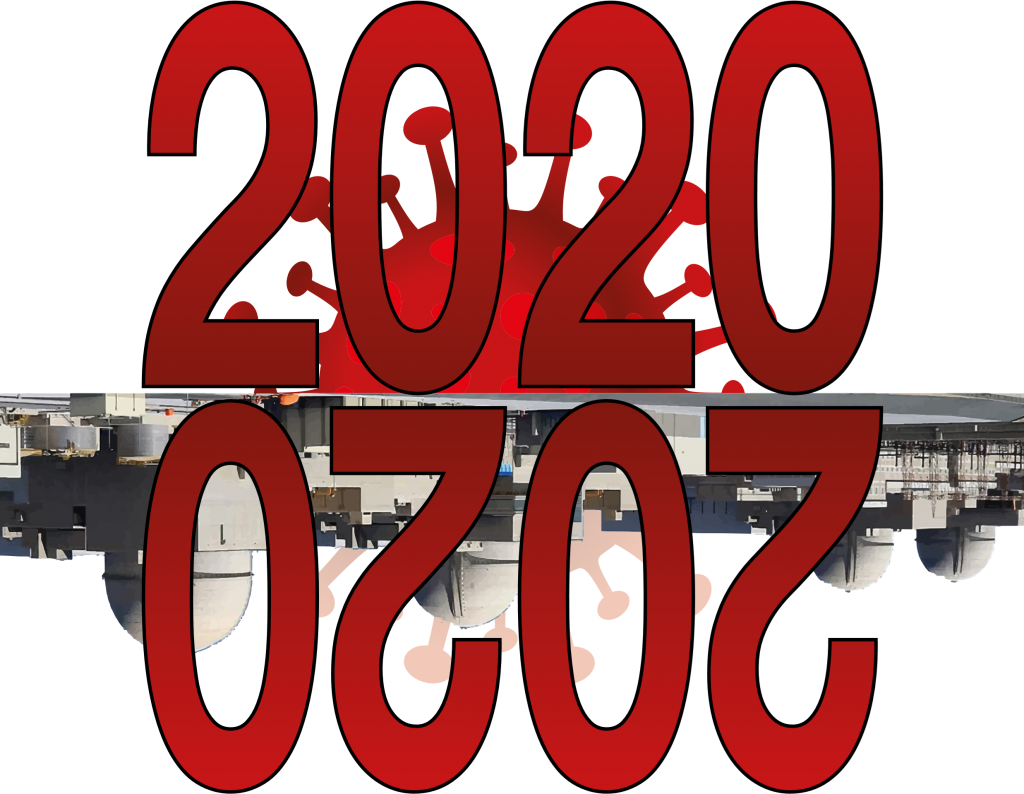 The World Nuclear Industry Status Report (WNISR2020), released on 24 September 2020, assesses in 361 pages the status and trends of the international nuclear industry and analyzes the additional challenges nuclear power is facing in the age of COVID-19. For the first time we report includes as specific chapter analyzing nuclear programs in the Middle East as the first reactor started up in the Arab world.
The World Nuclear Industry Status Report (WNISR2020), released on 24 September 2020, assesses in 361 pages the status and trends of the international nuclear industry and analyzes the additional challenges nuclear power is facing in the age of COVID-19. For the first time we report includes as specific chapter analyzing nuclear programs in the Middle East as the first reactor started up in the Arab world.
Seven interdisciplinary experts from Canada, France, Germany, Japan, Lebanon/U.S. and the U.K., from top think tanks like Chatham House in London and prestigious universities like Harvard in Cambridge, Meiji in Tokyo and Technical University in Berlin, have contributed to the report, along with a data engineer, numerous proofreaders and two artistic designers. The foreword was provided by Frank von Hippel, Professor Emeritus of Princeton University, and Jungmin Kang, former head of the safety authority in South Korea.
The number of operating reactors in the world has dropped by nine over the past year to 408 as of mid-2020, that is below the level already reached in 1988, and 30 units below the historic peak of 438 in 2002.
Ohio EPA: Plan for A-plant landfill to be issued
Piketon’s Chandler rips Ohio delegation; Pike Commissioner vows legal action
BY: RICK GREENE | southernohiotoday.com
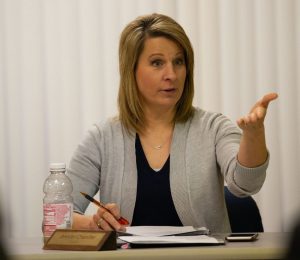
Piketon Councilwoman Jennifer Chandler criticized Ohio Sens. Sherrod Brown and Rob Portman, along with U.S. Rep. Brad Wenstrup, for what she calls a lack of engagement on the controversial issue of an On-Site Waste Disposal Facility at the Portsmouth Gaseous Diffusion Plant near Piketon. “Now they can have the largest nuclear waste dump east of the Mississippi River,” Chandler said.
In a virtual meeting Tuesday, the Ohio EPA announced it plans to issue the Waste Acceptance Criteria Implementation Plan, which outlines the disposition process for materials allowed to be placed into the controversial On-Site Waste Disposal Facility at the Portsmouth Gaseous Diffusion Plant near Piketon.
The announcement comes despite calls from officials with the Village of Piketon and the Pike County Board of Commissioners for more engagement from the public on the contaminants that will be permitted inside the radiological landfill.
During the meeting, the Ohio EPA explained the Waste Acceptance Criteria had been established in 2015 during the process that led to the Waste Disposition Record of Decision. Ohio EPA says the Implementation Plan deals primarily with the execution of the disposition of wastes previously determined by the 2015 Waste Acceptance Criteria.
Piketon Councilwoman Jennifer Chandler, a longtime critic of the U.S. Department of Energy and the landfill, asked multiple questions during the virtual forum. Afterwards, she said she remains frustrated by DOE, the Ohio EPA and Ohio’s federal delegation by what she calls a complete disregard for the people of Southern Ohio.
“I’m getting angrier and angrier as Ohio EPA continues to dodge questions and continues to suggest there was public involvement in this process,” Chandler said. “I do appreciate the forum and appreciate it was tough for some (Ohio EPA representatives) to say what they had to say. But it was very clear to all of us who is really in charge of this project, and that’s DOE and it’s going to have its way in Southern Ohio because Ohio EPA can’t do anything about it.”
Why Does Missile Defense Still Enjoy Bipartisan Support in Congress?
“…Ending the defense contractor honey pot. Reagan’s Strategic Defense Initiative was a turning point because it provided substantial funding for missile defense research and design. It was as though the defense contractors who were engaged in this research had suddenly found gold in a Wild West landscape. The initiative became an uncontrollable and unaccountable program with lax oversight, resulting in wasted taxpayer money and virtually no advancement in missile defense technologies.”
BY: SUBRATA GHOSHROY | thebulletin.org
The program to develop a missile defense system to protect the United States mainland has existed in one form or another for nearly six decades. Though it was controversial from the beginning and faced nearly unsurmountable technical challenges, it has enjoyed bipartisan support and continued funding in Congress for more than 20 years.
In July, both the House of Representatives and the Senate passed their own versions of a defense authorization bill for 2021. By a wide majority, both chambers authorized more than $740 billion for defense spending next year. Tucked away in the Senate bill was $20.3 billion for missile defense, and that funding could make it into the final version that lands on the president’s desk. While $20.3 billion may not seem significant in a $740 billion budget, it is nevertheless a startling figure. What’s more, US taxpayers have invested nearly $200 billion on missile defense in the past two decades and another $100 billion in the decade before, with little to show for it. Even under artificially easy tests conditions, the most modern missile defense system meant to protect the United States mainland has failed more times than it has succeeded often in highly scripted tests.
U.S. scrambles to do nuclear deal with Russia before election, issuing ultimatum
Frustration is mounting inside the Trump administration as Russia gives little indication of whether it will agree to an arms control deal before President Trump faces reelection, according to senior U.S. administration officials, who are trying to secure the deal.
By: Paul Sonne & John Hudson | washingtonpost.com
The administration’s scramble to cut a deal with Russia before the election comes as the president’s top diplomats have been rushing to secure diplomatic achievements as U.S. voters begin going to the polls.
‘Midnight Rockets’: Whistleblower lawsuit reveals toxic releases by Ohio nuclear plant
“According to the suit, the Portsmouth Gaseous Diffusion Plant “would regularly and purposefully vent raw UF6 [uranium hexafluoride], transuranics, heavy metals, and o’her toxic chemicals into the atmosphere.’”
BY: SEAMUS BRUNER | justthenews.com
A whistleblower lawsuit filed by former workers at an Ohio nuclear plant has revealed new details about disturbing practices during the plaintiffs’ tenures at the Portsmouth Gaseous Diffusion Plant (PORTS), including the alarming process — dubbed “midnight rockets” — of releasing toxic chemicals into the atmosphere.
According to the suit, “PORTS would regularly and purposefully vent raw UF6 [uranium hexafluoride], transuranics, heavy metals, and other toxic chemicals into the atmosphere from the roof of the process buildings.”
Filed against U.S. Department of Energy nuclear fuel contractors on Sept. 3 in the Southern District of Ohio, Eastern Division, Walburn, et al, v. Centrus Energy Corp., et al alleges criminal conduct, gross negligence, poisoning of nuclear workers, and contamination of Ohio communities in Pike, Scioto and neighboring counties with radioactive isotopes, causing cancer clusters, injuries, sickness and death, as well as loss of property values.
Bechtel & Aecom, U.S. Department of Energy (DOE) Contractors, Agree to Pay $57.75 Million to Resolve Claims of Time Charging Fraud at Doe’s Hanford Waste Treatment Plant
Major Government Contractors Admit to Overcharging between 2009 and 2019 by Billing Time Not Worked, and also Agree to Three-Year Independent Corporate Monitor
U.S ATTORNEY’S OFFICE, EASTERN DISTRICT OF WASHINGTON | justice.gov
Richland and Spokane, WA – Today, the United States Attorney’s Office for the Eastern District of Washington announced that major federal contractors Bechtel National Inc., Bechtel Corporation (Bechtel), AECOM Energy & Construction, Inc. (AECOM), and their subsidiary Waste Treatment Completion Company, LLC (WTCC), agreed to pay $57,750,000 to the U.S. Department of Justice (DOJ) to resolve claims that Bechtel and AECOM fraudulently overcharged the U.S. Department of Energy (DOE) in connection with its operation of the Hanford Waste Treatment Plant (WTP) project. The False Claims Act (FCA) claims arose from allegations that Bechtel and AECOM management were aware of and failed to prevent inflated labor hours being charged to DOE, and for falsely billing DOE for work not actually performed.
The WTP is located at DOE’s Hanford Site near Richland, Washington. Between 2001 and the present, DOE has paid billions of dollars to Bechtel and AECOM to have them design and construct the WTP, the purpose of which is to treat hundreds of millions of gallons of dangerous radioactive waste currently stored at the Hanford Site. To construct, operate, and maintain the WTP, Bechtel and AECOM employed hundreds of electricians, millwrights, pipefitters, and other skilled tradesmen known as “craft” workers.
As part of the settlement secured by the U.S. Attorney’s Office (USAO) for the Eastern District of Washington, Bechtel and AECOM admitted to a detailed Statement of Facts setting forth their actionable conduct. Between 2009 and 2019, Bechtel and AECOM admitted to overcharging DOE for unreasonable and unallowable idle time experienced by craft personnel. Bechtel and AECOM further admitted to failing to schedule and carry out adequate work to keep craft personnel sufficiently occupied and productive, resulting in excessive idle time. Bechtel and AECOM also admitted that Bechtel and AECOM management knew that craft personnel were experiencing idle time due to management’s failure to assign sufficient work, and that this idle time could, at times, last “several hours.” Finally, Bechtel and AECOM admitted that they improperly billed DOE labor costs for the unreasonable idle time and continued doing so for years, even after Bechtel and AECOM knew they were under investigation for the improper billing practices.
LANL Could Put Weapons-Grade Waste in WIPP
Tom Clements, executive director of the nonprofit Savannah River Site Watch, said the unspent fuel rods at Los Alamos contain weapons-grade plutonium. He also contended the proposed disposal method is improper and potentially dangerous. The material could get in the wrong hands or a waste barrel could burst, he said
BY: SCOTT WYLAND | santafenewmexican.com
The National Nuclear Security Administration plans to move weapons-grade plutonium from Los Alamos National Laboratory to an underground storage site in Southern New Mexico that nuclear watchdogs say is not intended to hold such high-level waste.
The plan could pose a security risk, argued the leader of one watchdog group, who believes officials should conduct more analysis before moving forward.
About 26.4 kilograms of unspent nuclear fuel rods, which have been stored at Los Alamos’ plutonium plant since 2005, must be cleared out to make room for the production of new pits, the softball-sized cores that trigger warheads, according to an August report.
Former World Leaders Urge Ratification of Nuclear Arms Ban Treaty
“In an open letter, the onetime leaders implored their own governments to embrace an arms treaty negotiated at the U.N. three years ago. It is six ratifications short of the 50 needed to go into effect.”
Nonetheless, delegates from 122 nations — practically two-thirds of the U.N. membership — participated within the negotiations for the treaty, and 84 have signed it. As of Sunday, 44 of these nations had ratified the treaty, which might come into power 90 days after the 50th ratification. At least one or two extra nations might ratify it in coming days or even weeks.
Under the treaty, all nuclear-weapons use, risk of use, testing, growth, manufacturing, possession, switch and stationing in a special nation can be prohibited. For nuclear-armed nations that be part of, the treaty outlines a course of for destroying stockpiles and imposing the promise to stay free of nuclear weapons.
These Russians aren’t going away
“Labeled “extremists” and “foreign agents”, Fedor Maryasov and Andrey Talevlin put country and courage first.”
By: Oleg Bodrov | beyondnuclearinternational.com
The first time Fedor Maryasov realized that something might be very wrong in his community was as a teenager. Growing up in the uranium mining city of Zarafshan, Uzbekistan, young Fedor and his friends would swim in artificial ponds holding discharge water from the uranium mines. They fished there too, but they began to notice the fish were disfigured by genetic abnormalities, displaying red spots and growths. Still, the authorities were saying nothing. And the teenage boys, like most people in Zarafshan, knew little about how radiation affects living organisms.
Ambassador: Time is right for new arms control agreement
“Arguing that its stockpile is small, China has said it would participate only if the U.S. agrees to nuclear parity among all nations. Russia has suggested that if China were part of the pact, other countries would need to be included as well.”
BY: The Associated Press, SUSAN MONTOYA BRYAN | apnews.com
ALBUQUERQUE, N.M. (AP) — The Trump administration has sketched out a framework that it hopes will avoid a three-way arms race as a deadline nears for extending the only remaining nuclear arms control deal with Russia and as China looks to expand its nuclear forces.
Ambassador Marshall Billingslea, the special presidential envoy for arms control, spoke with The Associated Press about negotiations with Russia while touring some of the top nuclear research labs and production sites in the United States.
Arizona’s ‘downwinders,’ exposed to Cold War nuclear testing, fight for compensation
“It’s a travesty, and the government should not be allowed to get away with it,” one Mohave County, Arizona, resident said.
BY: ANITA HASSAN | nbcnews.com

KINGMAN, Ariz. — Danielle Stephens ran her fingers down a long list of her relatives’ names and sighed.
All of them had been diagnosed with cancer. Most of them had died, many before they were 55.
Like Stephens, 81, they had all spent their lives in Kingman, Arizona, where during the Cold War they often watched the early morning sky lit up by orange flashes from atomic bombs detonated at a government testing site in the Nevada desert less than 150 miles north of the city.
“Back then, no one thought the tests were dangerous,” said Stephens, who ran a cattle ranch with her husband.
The list of her family members with cancer grew to 32 in July, when she was diagnosed with stage 4 colon cancer. It is the radiation exposure from those nuclear tests that Stephens believes caused her cancer and that of her family members and scores of others who lived in lower Mohave County in the 1950s and ’60s. Her relatives had breast, colon, thyroid and kidney cancer, all of which have been linked to radioactive fallout.
Biden says US must maintain small force in Middle East, has no plans for major Defense cuts
“The former vice president said the largest readiness issue facing the military is America’s strained relationship with NATO. “They’re worried as hell about our failure to confront Russia diplomatically or other ways, and worried about ‘America First’ meaning ‘America Alone,’” he said.”
By: STEVE BEYNON | STARS AND STRIPES/ stripes.com
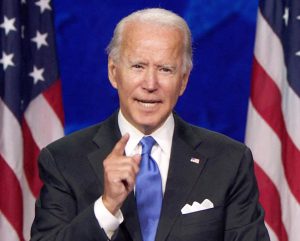
DEMOCRATIC NATIONAL COMMITTEE
WASHINGTON — Former Vice President Joe Biden said Thursday that he supports drawing down troops in the Middle East but if elected president would keep a small force there to prevent extremists from posing a threat to the United States and its allies.
“These ‘forever wars’ have to end. I support drawing down the troops. But here’s the problem, we still have to worry about terrorism and [the Islamic State],” Biden told Stars and Stripes in a telephone interview.
He also said he does not foresee major reductions in the U.S. defense budget as the military refocuses its attention to potential threats from “near-peer” powers such as China and Russia.
Georgia: At crucial crossroads, nuclear plant must be stopped
“In 2001, 30 new reactors were ordered in the U.S., but the so-called “nuclear renaissance” rapidly fizzled leaving only Georgia Power and Vogtle. Meanwhile, renewable energy, in particular solar power, has become abundant and cheap, and solar and wind have been the fastest-growing energy sector for the past several years.”
BY: GLENN CARROLL | augustachronicle.com

In 1977, a small group of thoughtful, committed Georgians started a grassroots anti-nuclear group to oppose nuclear power, nuclear weapons and radioactive waste and to promote alternative visions for renewable energy and world peace.
At the same time, Georgia Power was resuming construction of Vogtle 1 and 2, having nearly gone bankrupt three years earlier while attempting to build a four-reactor nuclear compound with a budget of $1 billion.
Only 10 weeks after breaking ground, incredibly, Vogtle construction ground to a halt with Georgia Power on the brink of bankruptcy. Georgia Power was saved by two emergency rate hikes thanks to the Georgia Public Service Commission and by selling shares of its hole-in-the-ground Vogtle to most of Georgia’s rural electric cooperatives and municipal power systems.
How to Talk About Nuclear Weapons
Why getting people to care about nuclear policy matters.
BY: ZACK BROWN | nationalinterest.org
It’s a truism of the nuclear field that arms control advocates don’t always win the war of words with their opponents, said Lynn Fahselt, co-founder and executive director of the communications organization ReThink Media.KINGMAN, Ariz. — Danielle Stephens ran her fingers down a long list of her relatives’ names and sighed.
“The first media audit we did showed that, on the opinion pages, we were being beat three to one,” she said in an interview with the podcast, Press The Button. “For every one argument we made for arms control and disarmament, our opposition was making two and calling ours naive.”
At first glance, this editorial record might seem like a minor datapoint in the grand scheme of nuclear politics. But in a fast-moving democracy whose attention span is only as long as the shortest news cycle, wins in the court of public opinion—even small ones—can affect government policy in real ways.
UPDATED: DOE INVOKED TECHNICAL STANDARDS
The following Directive has been added to the DOE Directives Portal:
The Directives Review Board (DRB) has conducted a review of DOE Orders that invoke Technical Standards. The DRB determined which Technical Standards should be invoked; developed boilerplate language for the invoking of Technical Standards; and updated affected Orders for clarity and consistency.
The following Orders were updated to clarify which Technical Standards are invoked:
- DOE O 458.1 Chg 4 (LtdChg), Radiation Protection of the Public and the Environment
-
- To establish requirements to protect the public and the environment against undue risk from radiation associated with radiological activities conducted under the control of the Department of Energy (DOE) pursuant to the Atomic Energy Act of 1954, as amended (AEA). Supersedes DOE O 458.1 Chg 3 (AdminChg), dated 1-15-2013.
-
Take Action! LANL Plans to Release Radioactive Tritium
CONCERNED CITIZENS FOR NUCLEAR SAFETY | nuclearactive.org
On Wednesday morning, the public was notified by Los Alamos National Laboratory (LANL) that releases of radioactive tritium could begin as early as Friday, September 11th. LANL tried to launch this plan last March. Communities organized against it and the project was halted. 
https://tewawomenunited.org/2020/09/action-alert-stop-radioactive-releases-at-los-alamos-national-laboratory , http://nuclearactive.org/lanl-plans-to-release-twice-the-amount-of-tritium-allowed/ , and http://nuclearactive.org/lanl-postpones-tritium-releases-due-to-global-pandemic/
If you were not signed up to receive emails from LANL’s Electronic Public Reading Room, you would not have received Wednesday morning’s notice. https://eprr.lanl.gov/ [The subscribe button is on the lower left.] The notice provided links to letters LANL submitted to the Environmental Protection Agency and the New Mexico Environment Department requesting permission to proceed with venting the four tritium containers. The containers hold lead and an estimated 114,000 curies of radioactive tritium.
The tritium is in the form of tritiated water, which harms when it is inhaled or ingested. https://ieer.org/article/energy-security/healthy-start-tritium-issue-38/
Now is the time of harvest. People are outside and breathing deeply while they bring in the harvest. The risk for breathing in particulates, pollutants, tritiated water, among other contaminants, has increased due to the COVID-19 global pandemic. Smoke and ash from the Medio wildfire significantly contributed to poor air quality for weeks, which was finally knocked down on Tuesday night when the rain and snow arrived. The link between increased COVID-19 death rates and air pollution are well known.
Environment Secretary Says LANL Tritium Venting Project Puts New Mexico In Bad Situation
“Under the Triad contract, one of their performance requirements for this fiscal year is to vent five more containers that are larger, that contain more tritium, by Sept. 30. So we feel like they’re trying to get permission to vent these four containers on Friday so that they can vent the other five before the end of the fiscal year so that they can get their bonus…This is a pattern in practice by DOE – to do things in order to get the bonuses for their contractors.” – Joni Arends, executive director of Concerned Citizens for Nuclear Safety
BY: MAIRE O’NEILL | losalamosreporter.com
The planned venting of tritium from four Flanged Tritium Waste Containers at Los Alamos National Laboratory on or after Friday, Sept. 11 has placed the state of New Mexico in a bad situation, New Mexico Environment Department (NMED) Sec. James Kenney told the Legislature’s Committee on Radioactive and Hazardous Materials Wednesday.
The Los Alamos Reporter previously published two stories on the venting project:
https://losalamosreporter.com/2020/03/23/lanl-to-conduct-tritium-venting-operation-beginning-in-april/
https://losalamosreporter.com/2020/04/03/lanl-tritium-ventilation-project-on-hold-due-to-covid-19-scope-of-work-amended-to-include-possible-secondary-venting/
“These containers have been neglected for so long by both DOE and the Environment Department. We’re in this position, which is do they vent those tritium drums, collect that emission to prevent it from being in the air and then move those drums offsite, or do we run the risk of leaving those drums onsite knowing that they are pressurized and could rupture meaning an uncontrolled amount of tritium would go out,” Kenney said. “I do not like the position our Department is in. I think this goes towards the fact that DOE did not do something sooner and it goes to the fact that our Department has been so underfunded that we don’t have the staff to go and hold people accountable to do those things in a timely manner, so we are in a very bad position.”
Big audience for protest of race training
Petersen says he tried to point out to lab officials the “blatant lies and deep immorality” in the presentations. He says he tried to teach his own classes to counter the training Sandia offered but was denied.
By: RYAN BOETEL / JOURNAL STAFF WRITER / abqjournal.com Copyright © 2020 Albuquerque Journal
A series of forums on race offered at Sandia National Laboratories left at least one lab employee miffed enough to send an email blast to the entire staff voicing his displeasure.
And the upset electrical engineer appears to have caught the attention of the White House, which last week in a memo told all federal agencies to stop hosting similar training sessions.
Trump Reportedly Claimed That The US Built a Secret Nuke. Here’s What He’s Probably Talking About
“In all likelihood, Trump is referring to the W76-2; then again, he’s also made outlandish claims regarding U.S. military tech that haven’t stood up under scrutiny, like that the F-35 is totally invisible.”
By: JARED KELLER / taskandpurpose.com
Forget the invisible F-35 and the super-duper missile: there’s apparently a brand new weapons system that’s captured the commander-in-chief’s attention — and it’s of the nuclear variety.
According to Rage — a new book published by legendary investigative reporter Bob Woodward on the Trump administration — the president reportedly disclosed the existence of a new nuclear weapons system during a conversation about relations between the United States and North Korea.
“I have built a nuclear — a weapons system that nobody’s ever had in this country before,” Trump reportedly said, according to the Washington Post.
“We have stuff that you haven’t even seen or heard about. We have stuff that Putin and Xi have never heard about before. There’s nobody — what we have is incredible.”
The disclosure from Trump came in “the midst of reflecting upon how close the United States had come in 2017 to war with North Korea,” according to the Washington Post.
State Lawmakers: Tougher Tactics Needed to Speed Los Alamos Waste Cleanup
“The state must put teeth back into the consent order, its main source of leverage. I would like to see us rip up the [2016] consent order and become a tougher negotiator for New Mexico,”
– State Sen. Jeff Steinborn, D-Las Cruces, said the state is losing ground on cleanup because an agreement between the state and the Department of Energy was weakened four years ago, and now more waste will be generated with pit production.
BY: Scott Wyland | santafenewmexican.com
The pace of Los Alamos National Laboratory’s legacy waste cleanup drew sharp criticism Wednesday from two state lawmakers who argued regulators should toughen oversight and consider suing federal agencies to spur quicker action.
The lab has made five shipments of higher-level nuclear waste this year to the Waste Isolation Pilot Plant in Carlsbad and hopes to move that number to 30 per year, with the aim of removing all of the lab’s legacy waste by 2027.
A U.S. Department of Energy official presented the figures to the state Radioactive and Hazardous Waste Committee on Wednesday.
“So we’re looking to greatly increase the rate of shipment,” said Steve Hoffman, who oversees the agency’s environmental management field office in Los Alamos.
But state Rep. Christine Chandler, D-Los Alamos, called that volume far too low, especially when compared to Idaho sending 100 to 150 waste shipments to WIPP each year.
New Mexico Frustrated With Slow Cleanup of Radioactive Waste
“We’re seeing more and more that we’re trending towards an impasse on the movement of legacy contamination from Los Alamos…If that’s our only option, then that’s an option we’re going to explore and we’re going to need to figure out how to do that in a way that yields a better result for New Mexico. Because right now we’re at the bottom of the list and that’s unacceptable.” – New Mexico Environment Secretary James Kenney
BY: The Associated Press, SUSAN MONTOYA BRYAN | krqe.com
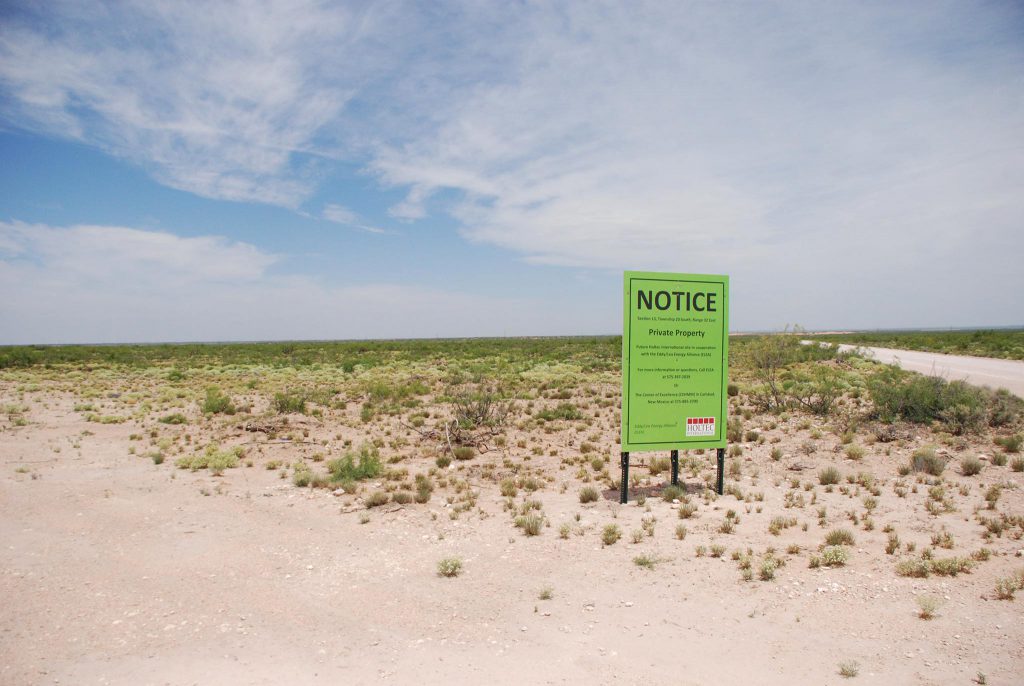
ALBUQUERQUE, N.M. (AP) — There’s growing frustration among New Mexico lawmakers and environmental regulators about the U.S. government’s slow pace in cleaning up contamination from decades of nuclear research and bomb-making at Los Alamos National Laboratory.
The officials shared their concerns during a legislative meeting Wednesday, saying New Mexico is taking a backseat to other states and that legal action might be their only leverage against the U.S. Energy Department as it sets priorities for the nation’s multibillion-dollar cleanup program for Cold War-era waste.
Since January, only five shipments of waste have been sent from Los Alamos to the government’s underground repository in southern New Mexico. Meanwhile, the Idaho National Laboratory is sending two to three shipments a week, or more than three times the goal environmental managers at Los Alamos have set for the coming year.
Russia warns it will see any incoming missile as nuclear
“The policy document offered a detailed description of situations that could trigger the use of nuclear weapons, including the use of nuclear weapons or other weapons of mass destruction against Russia or its allies.”
BY: The Associated Press, VLADIMIR ISACHENKOV | apnews.com
MOSCOW (AP) — Russia will perceive any ballistic missile launched at its territory as a nuclear attack that warrants a nuclear retaliation, the military warned in an article published Friday.
The harsh warning in the official military newspaper Krasnaya Zvezda (Red Star) is directed at the United States, which has worked to develop long-range non-nuclear weapons.
The article follows the publication in June of Russia’s nuclear deterrent policy that envisages the use of atomic weapons in response to what could be a conventional strike targeting the nation’s critical government and military infrastructure.
In the Krasnaya Zvezda article, senior officers of the Russian military’s General Staff, Maj.-Gen. Andrei Sterlin and Col. Alexander Khryapin, noted that there will be no way to determine if an incoming ballistic missile is fitted with a nuclear or a conventional warhead, and so the military will see it as a nuclear attack.
“Any attacking missile will be perceived as carrying a nuclear warhead,” the article said. “The information about the missile launch will be automatically relayed to the Russian military-political leadership, which will determine the scope of retaliatory action by nuclear forces depending on the evolving situation.”
The argument reflects Russia’s longtime concerns about the development of weapons that could give Washington the capability to knock out key military assets and government facilities without resorting to atomic weapons.
Groups raise concerns about new shaft at WIPP
“The Southwest Research and Information Center is among those opposing the project. The group filed legal challenges, saying environmental officials ignored existing regulations, past agency practices and case law when giving temporary approval for contractors to begin working.”
BY SUSAN MONTOYA BRYAN | santafenewmexican.com
ALBUQUERQUE — Crews working at the U.S. government’s underground nuclear waste repository in southeastern New Mexico are starting a new phase of a contentious project to dig a utility shaft that officials say will increase ventilation at the site where workers entomb the radioactive remnants of decades of bomb-making.
Officials at the Waste Isolation Pilot Plant near Carlsbad said this week the $75 million project is a top priority and that work will be done around the clock five days a week, with an additional shift on Saturdays. The shaft will eventually span more than four-tenths of a mile and connect to an underground system of passageways.
Surprising numbers in UNM report on lab’s impact
“BBER’s (UNM’s Bureau of Business and Economic Research) director Jeffrey Mitchell said in an email to a Regional Coalition official that the county financial figures show “there are some winners and some losers. I suspect that LANL was less interested in presenting that.”
BY JOURNAL NORTH EDITORIAL BOARD | abqjournal.com
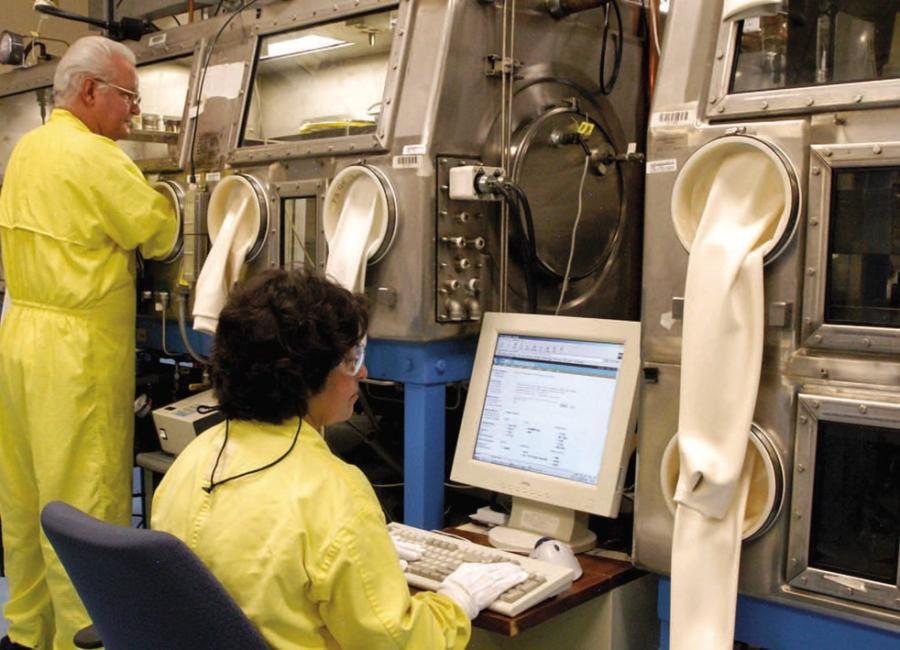
A recent study by the University of New Mexico’s respected economic studies office details the huge economic impact of Los Alamos National Laboratory on New Mexico.
NCI Virtual Briefing on results from the Study to Estimate Radiation Doses and Cancer Risks Resulting from Radioactive Fallout from the Trinity Nuclear Test
| UPDATE FROM THE NCI SUMMARY:
“The data suggest that perhaps several hundred cancers, primarily thyroid cancer, have already occurred over the 75 years since the test and a small number are projected to occur in the future that would not have occurred in the absence of radiation exposure from Trinity fallout. Most of the excess cancers are projected to have occurred or will occur among residents living in Guadalupe, Lincoln, San Miguel, Socorro, and Torrance counties in 1945. Significant uncertainty in dose estimation had a substantial impact on the total uncertainty around these estimates. Most cancers that have occurred or will occur among the 1945 residents of New Mexico are likely to be cancers unrelated to exposures from Trinity fallout. Finally, with the data available, it is not possible to definitively identify the specific individuals whose cancers might be due to the radiation exposure. |
Former employees, families sue companies working on Piketon-area nuclear plant
“The lawsuit, filed last week, alleges workers and their families became ill due to the actions of U.S. Department of Energy contractors. The suit seeks a medical monitoring program to evaluate the multi-generational impact of radioactive contamination.”
Columbus, OH | Columbus Dispatch newsbreak.com
A lawsuit filed on behalf of former nuclear employees and their families accuses U.S. Department of Energy contractors of “poisoning workers and the people, land, air and water for miles” around the former Portsmouth Gaseous Diffusion Plant that was in southern Ohio.
The actions of DOE’s contractors released radioactive isotopes that “have created a situation akin to a creeping Chernobyl” and resulted in “injuries, sickness, disease, including cancers, damage to DNA, death, loss of and damages to property, and reduction in property values,” according to the lawsuit filed Thursday in U.S. District Court in Columbus.
The contamination likely spread in Pike, Scioto, Lawrence, Vinton and Adams counties in Ohio, according to the lawsuit.
Study: Cancer cases likely in those exposed to atomic test
“’The nuclear detonation exposed residents of New Mexico to varying levels of radiation from radioactive fallout, depending, in part, on where they lived in the state, how much time they spent inside protective structures in the immediate months after the test, and how much radiation entered their bodies through contaminated food and water,’ a summary of the research states.”
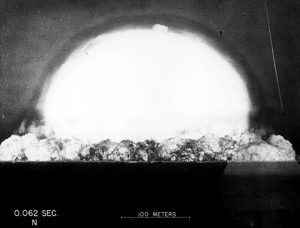
BY: SUSAN MONTOYA BRYAN | apnews.com
ALBUQUERQUE, N.M. (AP) — After years of study, the National Cancer Institute said Tuesday that some people probably got cancer from the radioactive fallout that wafted across New Mexico after the U.S. government detonated the first atomic bomb in 1945. However, the exact number is unknown.
Energy Dept. Taking Bids for Nationwide Waste Treatment Services
The Energy Department on Monday issued its final request for proposals (RFP) for nationwide low-level and mixed low-level waste treatment services. The agency could award more than one basic ordering agreement (BOAs) for the work, according to the document.
By: Exchange Monitor / exchangemonitor.com
The objectives of the BOAs are to provide Low Level Waste and Mixed Low Level Waste (including reactive metals such as lithium batteries, sodium bearing waste) Treatment services; Bulk Survey for Release Services (BSFR) services in accordance with Nuclear Regulatory Commission (NRC) or Agreement State requirements; Development and assessment of alternative disposition strategies; Low Activity Waste (LAW) services; and Ancillary services that aid in the treatment and processing of waste, such as transportation and packaging from the point of origin to the destination (treatment facility, disposal site, or return to the generator) creating a turnkey service.
Up to 1,000 Downwinders Likely Got Cancer From First Atomic Test, Study Says
As many as 1,000 New Mexicans living in communities near Trinity Site, where the first atomic bomb was detonated 75 years ago, might have developed cancer from the radioactive fallout, says a long-awaited Cancer Institute report released Tuesday.
BY: SCOTT WYLAND | santafenewmexican.com
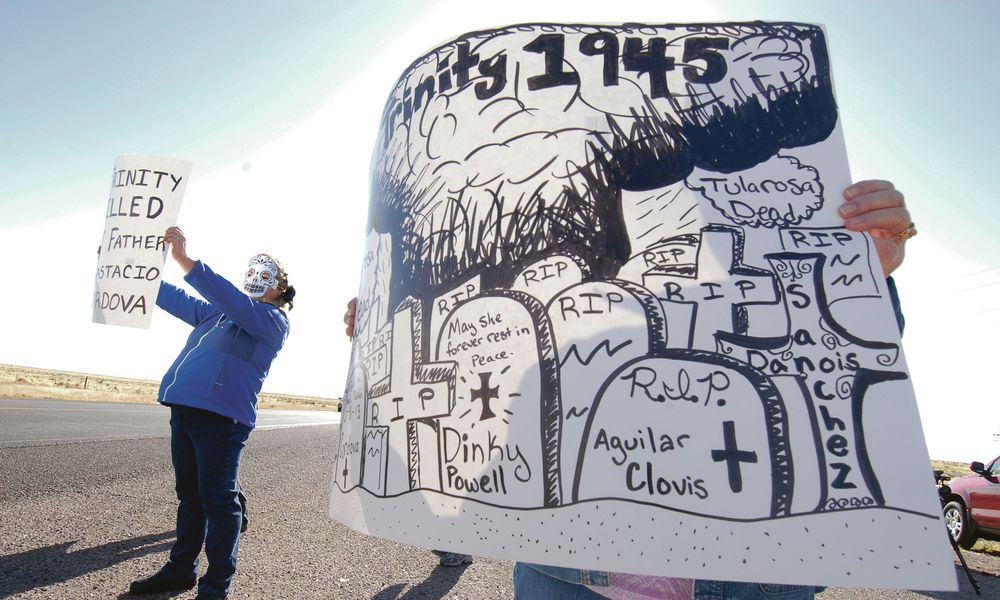
The institute’s findings were based on a six-year study that involved computer modeling, researching historical data and interviewing 210 elderly “downwinders” who lived close enough to the blast to suffer internal radiation exposure by ingesting contaminated milk and food.
The number of cancer victims could be less than 1,000 but is unlikely to be more, the study says.
There’s also no clear evidence the radiation was severe enough to cause genetic abnormalities that could be passed by birth to subsequent generations, the study says.
The study’s authors concede there’s much uncertainty in the report because so many years have passed since the test, the government didn’t conduct public studies of the test’s potential impacts on communities — due to the Manhattan Project’s secrecy — and cancer cases weren’t tracked nationally until the 1960s.
The report comes after decades of criticism from downwinder advocates, who have accused the federal government of refusing to acknowledge affected residents to avoid liability.
Some U.S. cities turn against first planned small-scale nuclear plant
“[Two] cities, Logan and Lehi, Utah have walked away from the project, and a third is now considering dropping its support because of risks and a lack of backers, according to officials.”
BY: Timothy Gardner, Nichola Groom | reuters.com
An artist’s rendering of NuScale Power’s small modular nuclear reactor plant. Courtesy NuScale/via REUTERS(Reuters) – The first U.S. small-scale nuclear power project, grappling with cost overruns and delays, faces another challenge: the defection of cities that had committed to buying its power. The more than 30 members of the public power consortium Utah Associated Municipal Power Systems (UAMPS) have until Sept. 30 to decide whether to stick with the project and devote more funds to NuScale Power LLC’s first-of-a-kind reactor.
Nuclear News Archives – 2021
Nothing Found
It seems we can’t find what you’re looking for. Perhaps searching can help.

